The post The Expeditioner’s Privacy Policy appeared first on The Expeditioner Travel Site.
]]>Our data-collection practices.
Last updated: December 22, 2018
The Expeditioner (“The Expeditioner,” “we,” or “us”) is committed to bringing you information tailored to your individual needs This Privacy Policy describes how we collect, use, and disclose information through the websites, mobile applications, and other online services and products that link to or post this Privacy Policy, and when you access our podcasts (whether through our Services or third party services) (collectively, the “Services”). Please read the entire Privacy Policy before using our Services. By using the Services, you consent to the terms of this Privacy Policy and our Terms of Service.
1. Information We Collect
A. Information You Provide.
We may collect information you provide directly via the Services. We may ask you for some or all of the following types of information when you register with our Services, access various content or features, register for contests or sweepstakes, submit comments and other content, order products, or directly contact us with questions or feedback:
Contact information, such as
• name, e-mail address, postal address, and telephone number;
• User name, display name, and password;
• Demographic information, such as age information and gender;
• Payment information, such as credit card number and expiration date;
• Communications preferences;
• Search queries;
• Stories, comments, photos, and other information posted in our interactive online features;
• Correspondence and other information that you send to us; and
• Additional information as otherwise described to you at the point of collection or pursuant to your consent.
The information you provide may include Personal Information. “Personal Information” is information that identifies you personally (whether alone or in combination). Personal Information once “de-identified” is not subject to this Privacy Policy and we may treat it as non-Personal Information and use it without obligation to you except as prohibited by applicable law.
B. Information Automatically Collected.
We also may collect certain information automatically when you visit the Services (“Usage Information”), including:
• Your browser type and operating system;
• Your Internet Protocol (IP) address, which is the number automatically assigned to your computer whenever you access the Internet and that can sometimes be used to derive your general geographic area;
• Geolocation information;
• Other unique identifiers, including mobile device identification numbers;
• Sites you visited before and after visiting the Services;
• Pages you view and links you click on within the Services;
• Information collected through cookies, web beacons, and other technologies;
• Information about your interactions with e-mail messages, such as the links clicked on and whether the messages were opened or forwarded; and
• Standard Server Log Information.
Except to the extent required by applicable law, The Expeditioner does not consider Usage Information to be Personal Information. However, Usage Information may be combined with your Personal Information. To the extent that we combine Usage Information with your Personal Information, we will treat the combined information as Personal Information under this Privacy Policy.
We may use cookies, pixel tags, Local Shared Objects (sometimes referred to as “Flash Cookies”), and other technologies to automatically collect Usage Information:
o Cookies, Pixel Tags, and Local Shared Objects
Cookies are small bits of information that are stored by your computer’s web browser. You can decide if and how your computer will accept a cookie by configuring your preferences or options in your browser. However, if you choose to reject cookies, you may not be able to use certain online products, services or features on the Services.
Pixel tags are very small images or small pieces of data embedded in images, also known as “web beacons” or “clear GIFs,” that can recognize cookies, the time and date a page is viewed, a description of the page where the pixel tag is placed, and similar information from your computer or device.
Local Shared Objects (sometimes referred to as “Flash Cookies”) are similar to standard cookies except that they can be larger and are downloaded to a computer or mobile device by the Adobe Flash media player. Please note that you may need to take additional steps beyond changing your browser settings to refuse or disable Local Shared Objects and similar technologies. For example, Local Shared Objects can be controlled through the instructions on Adobe’s Setting Manager page. If you choose to refuse, disable, or delete these technologies, some of the functionality of the Services may no longer be available to you.
o Embedded Scripts
An embedded script is programming code designed to collect information about your interactions with the Services. It is temporarily downloaded onto your device from our web server or a third party with whom we work, is active only while you are connected to the Services, and deleted or deactivated thereafter.
o Location-identifying Technologies
GPS (global positioning systems) software, geo-filtering, and other location-aware technologies locate (sometimes precisely) you for purposes such as verifying your location and delivering or restricting relevant content based on your location.
o Device Fingerprinting
Device fingerprinting is the process of analyzing and combining sets of information elements from your device’s browser, such as JavaScript objects and installed fonts, in order to create a “fingerprint” of your device and uniquely identify your device and applications.
o In-App Tracking Methods
There are a variety of tracking technologies that may be included in mobile applications, and these are not browser-based like cookies and cannot be controlled by browser settings. Some use device identifier, or other identifiers such as “Ad IDs” to associate app user activity to a particular app and to track user activity across apps. You can stop all collection of information via our mobile applications by uninstalling them. Also, you may be able to exercise specific privacy choices, such as enabling or disabling certain location-based services, by adjusting the permissions in your mobile device.
For further information on tracking technologies and your choices regarding them, please see Section 6 below.
C. Information from Other Sources.
We may obtain information about you from other sources, including service providers and third party services, and combine such information with information we have collected about you. To the extent we combine such third party sourced information with Personal Information we have collected about you on the Services, we will treat the combined information as Personal Information under this Privacy Policy. We are not responsible for the accuracy of any information provided by third parties or third party policies or practices.
2. Use of Information
We may use information that we collect through the Services for a variety of purposes, including to:
• Provide you with the products, promotions, services, newsletters, and information you request and respond to correspondence that we receive from you;
• Customize and personalize your use of the Services;
• Contact you via email and otherwise about products, services, and events that we think might be of interest to you;
• Contact you with surveys, legal notices, and other information that may be relevant to your use of the Services;
• Maintain or administer the Services, perform business analyses, or for other internal purposes to improve the quality of our business, the Services, and other products and services we offer;
• Publish stories, comments, and other information posted in our interactive online features;
• Process employment applications and inquiries;
• Create articles and other content;
• Detect, investigate, and prevent activities that may violate our policies or may be fraudulent or illegal;
• Deliver advertising, including interest-based advertising, to show you relevant ads both on our Services and elsewhere, and measure the effectiveness and reach of ads; and
• As otherwise described to you at the point of collection or pursuant to your consent.
3. Sharing of Information
We want you to understand when and with whom we may share the information we collect. We may share information that we collect through the Services with third parties as follows:
• Corporate Parents, Affiliates, and Subsidiaries. We may share your information with our corporate parents, subsidiaries, and other affiliated entities for a variety of purposes, including business, operational, and marketing purposes.
• Service Providers. We may share your information with our agents and service providers that perform certain functions or services on our behalf, such as to host the Services, manage databases, host a store or other e-commerce platform, perform analyses, conduct surveys, place The Expeditioner-branded content on third-party websites, or send communications and newsletters for us.
• Select Business Partners. We may share your information with select business partners so that they can provide you with special offers, promotional materials, advertisements and other materials that may be of interest to you. However, The Expeditioner is not responsible for the privacy practices of these business partners, which may use your information for their own purposes.
• Other Parties When Required By Law or as Necessary to Protect the Services. We may disclose your information to third parties in order to protect the legal rights, safety, and security of The Expeditioner, our corporate parents, affiliates, and subsidiaries, and the users of our Services; enforce our Terms of Service; prevent fraud (or for risk management purposes); and comply with or respond to law enforcement or legal process or a request for cooperation by a government or other entity, whether or not legally required.
• In Connection With a Transfer of Assets. If we sell all or part of our business, or make a sale or transfer of assets, or are otherwise involved in a merger or business transfer, or in the event of bankruptcy, we may transfer your information to one or more third parties as part of that transaction.
• Other Parties With Your Consent. We may share information about you with third parties when you consent to such sharing, including when you post information to a user profile or a public area of the Services, such as a chat room, forum, blog, or other community tool.
• Aggregate Information. We may disclose to third parties information that does not describe or identify individual users, such as aggregate website usage data or demographic reports.
4. Social Networking Services
The Expeditioner has worked with certain third-party social media providers to offer you their social networking services through our Services. For example, you can use third-party social networking services, including but not limited to Facebook, Twitter, and others to share information about your experience on our Services with your friends and followers on those social networking services. These social networking services may be able to collect information about you, including your activity on our Services. These third-party social networking services also may notify your friends, both on our Services and on the social networking services themselves, that you are a user of our Services or about your use of our Services, in accordance with applicable law and their own privacy policies. If you choose to access or make use of third-party social networking services, we may receive information about you that you have made available to those social networking services, including information about your contacts on those social networking services.
You also may be able to link an account from a social networking service (e.g., Facebook, Twitter) to an account through our Services. This may allow you to use your credentials from the other site or service to sign in to certain features on our Services. If you link your account from a third-party site or service, we may collect information from those third-party accounts, and any information that we collect will be governed by this Privacy Policy.
5. Links to Third Party Sites and Services
The Services may contain links to other websites or online services that are operated and maintained by third parties and that are not under the control of or maintained by The Expeditioner. Such links do not constitute an endorsement by The Expeditioner of those other websites, the content displayed therein, or the persons or entities associated therewith. This Privacy Policy does not apply to this third-party content. We encourage you to review the privacy policies of these third-party websites or services.
6. Analytics and Advertising Tracking Technologies.
We may allow third parties to place and read their own cookies, web beacons, Local Shared Objects, and other technologies to collect information through the Services. For example, our third-party service providers may use these technologies to collect information (i) that helps us with traffic measurement, research, and analytics, and (ii) that is used to serve advertisements on our Services and across the Internet tailored to your apparent interests. To the extent we combine information from third party services with Personal Information we collect directly from you on the Services, we will treat the combined information as Personal Information under this Privacy Policy. Otherwise, the information collected and stored by third parties remains subject to their policies and practices, including whether they continue to share information with us, the types of information shared, and your choices on what is visible to others on third party services.
We use Google Analytics, a web analytics service provided by Google, Inc. The cookies and other technologies used by Google may collect Personal Information, but The Expeditioner does not use Google Analytics to gather information that personally identifies you. The information generated by Google Analytics will be transmitted to and stored by Google and will be subject to Google’s privacy policies. You may exercise choices regarding the use of cookies from Google Analytics by going to https://tools.google.com/dlpage/gaoptout or downloading the Google Analytics Opt-out Browser Add-on.
You may choose whether to receive interest-based advertising by submitting opt-outs. Some of the advertisers and service providers that perform advertising-related services for us and our partners may participate in the Digital Advertising Alliance (“DAA”) Self-Regulatory Program for Online Behavioral Advertising. To learn more about how you can exercise certain choices regarding Interest-based Advertising, visit http://www.aboutads.info/choices, and http://www.aboutads.info/appchoices for information on the DAA’s opt-out program for mobile apps. Some of these companies may also be members of the Network Advertising Initiative (“NAI”). To learn more about the NAI and your opt-out options for their members, see http://www.networkadvertising.org/choices/. Please be aware that, even if you are able to opt out of certain kinds of interest-based advertising, you may continue to receive other types of ads. Opting out only means that those selected members should no longer deliver certain interest-based advertising to you, but does not mean you will no longer receive any targeted content and/or ads (e.g., from other ad networks). The Expeditioner is not responsible for effectiveness of, or compliance with, any third-parties’ opt-out options or programs or the accuracy of their statements regarding their programs.
Some web browsers may transmit “do-not-track” signals to the websites with which the user communicates. Because of differences in how web browsers incorporate and activate this feature, it is not always clear whether users intend for these signals to be transmitted, or whether they even are aware of them. Because there currently is no industry standard concerning what, if anything, websites should do when they receive such signals, The Expeditioner currently does not take action in response to these signals. For more information on “do-not-track,” visit http://www.allaboutdnt.com.
7. Communications Preferences
You may choose to receive promotional communications (including emails and text messages), newsletters, and similar communications from us. You may opt out of receiving certain promotional communications from us at any time by (i) for promotional emails, by clicking on the opt-out or “unsubscribe” link included in the commercial e-mails you receive; and (ii) for text messages, following the instructions provided in text messages from us to text the word “STOP”). Please note that your opt-out is limited to the e-mail address or phone number used and will not affect subsequent subscriptions. Opt-out requests for e-mail may take up to 10 business days to be effective. Your opt-out request will not apply to messages that you request or that are not commercial in nature.
8. Your California Privacy Rights
Pursuant to California’s “Shine The Light” law, California residents are entitled once a year, free of charge, to request and obtain certain information regarding our disclosure, if any, of certain categories of Personal Information to third parties for their own direct marketing purposes in the preceding calendar year. You may request this disclosure information at TheExpeditioner@gmail.com and indicate in the email subject line “California Shine The Light Request” so that we can process your request. Please include your mailing address, state of residence and email address with your request.
9. Children’s Privacy
The Services do not knowingly collect, use, or disclose personal information from children under the age of 13 without prior parental consent, except as permitted by the Children’s Online Privacy Protection Act (“COPPA”). If you are a parent or guardian and believe we have collected information in a manner not permitted by COPPA, please contact us at TheExpeditioner@gmail.com
10. Data Security
We maintain reasonable security procedures to help protect against loss, misuse, unauthorized access, disclosure, alteration or destruction of the information you provide to us. Please note that no data transmission or storage can be guaranteed to be 100% secure. As a result, we cannot guarantee or warrant the security of any information you disclose or transmit to us online and cannot be responsible for the theft, destruction, or inadvertent disclosure of your information.
You are responsible for maintaining the confidentiality of your account password and for any access to or use of the Services using your password, whether or not authorized by you. Please notify us immediately of any unauthorized use of your password or account or any other breach of security.
11. International Users
Please note that the Services are directed towards users who reside in the United States. By using the Services, you consent to the collection, storage, processing, and transfer of your information in and to the United States, or other countries and territories, pursuant to the laws of the United States. Some of these countries may not offer the same level of privacy protection as your own. Any such transfers will comply with safeguards as required by relevant law. If applicable, you may have a right to claim compensation for damages caused by a breach of relevant data protection laws.
If you are a resident of the EEA or Switzerland, the following information applies:
Purposes of processing and legal basis for processing
As explained above, we process personal data as defined under data protection laws in various ways depending upon your use of the Services. We process personal data on the following legal bases: (1) with your consent; (2) as necessary to perform our agreement to provide Services; and (3) as necessary for our legitimate interest in providing the Services where those interests do not override your fundamental rights and freedom related to data privacy.
Right to lodge a complaint
Users that reside in the EEA or Switzerland have the right to lodge a complaint about our data collection and processing actions with the supervisory authority concerned. Contact details for data protection authorities are available here.
Transfers
Personal information we collect may be transferred to, and stored and processed in, the United States or any other country in which we or our affiliates or subcontractors maintain facilities. Upon the start of enforcement of the General Data Protection Regulation (GDPR), we will ensure that transfers of personal information to a third country or an international organization are subject to appropriate safeguards as described in Article 46 of the GDPR.
Individual Rights
If you are a resident of the EEA or Switzerland, you are entitled to the following rights, which may be exercised by contacting us as described below. In order to verify your identity, we may require you to provide us with personal information prior to accessing any records containing information about you.
• The right to request data erasure. You have the right to have your data erased from our website if the data is no longer necessary for the purpose for which it was collected, you withdraw consent and no other legal basis for processing exists, or you believe your fundamental rights to data privacy and protection outweigh our legitimate interest in continuing the processing.
• The right to restrict or object to our processing. You have the right to restrict or object to our processing if we are processing your data based on legitimate interests or the performance of a task in the public interest as an exercise of official authority (including profiling); using your data for direct marketing (including profiling); or processing your data for purposes of scientific or historical research and statistics.
The Expeditioner tracks when EU readers grant consent for The Expeditioner to collect and process data through the use of an identifying cookie on your browser.
The browser through which you are currently viewing The Expeditioner does not currently have such an identifying cookie.
If you are an EU reader this means that The Expeditioner is not collecting or processing data from your current browser session. If you believe that you have previously granted The Expeditioner access, it is possible that you did so from a different browser. By returning to this page from that browser, you can remove the identifying cookie.
The Expeditioner does not append the identifying cookie for US readers at this time. US readers interested in opting out of certain data collection processes should visit the Network Advertising Initiative’s Opt-Out Page.
12. Privacy Policy Updates
We may modify this Privacy Policy at any time by posting revisions to the Services or other appropriate notice. Your continued use of the Services after any modification to the Privacy Policy will constitute your acceptance of the new terms and conditions.
13. Contact Us
If you have any questions about this Privacy Policy, you may contact us at:
Email: theexpeditioner@gmail.com
The post The Expeditioner’s Privacy Policy appeared first on The Expeditioner Travel Site.
]]>The post Kentucky Fried Camel in Egypt: My Return to a Country I Never Left appeared first on The Expeditioner Travel Site.
]]>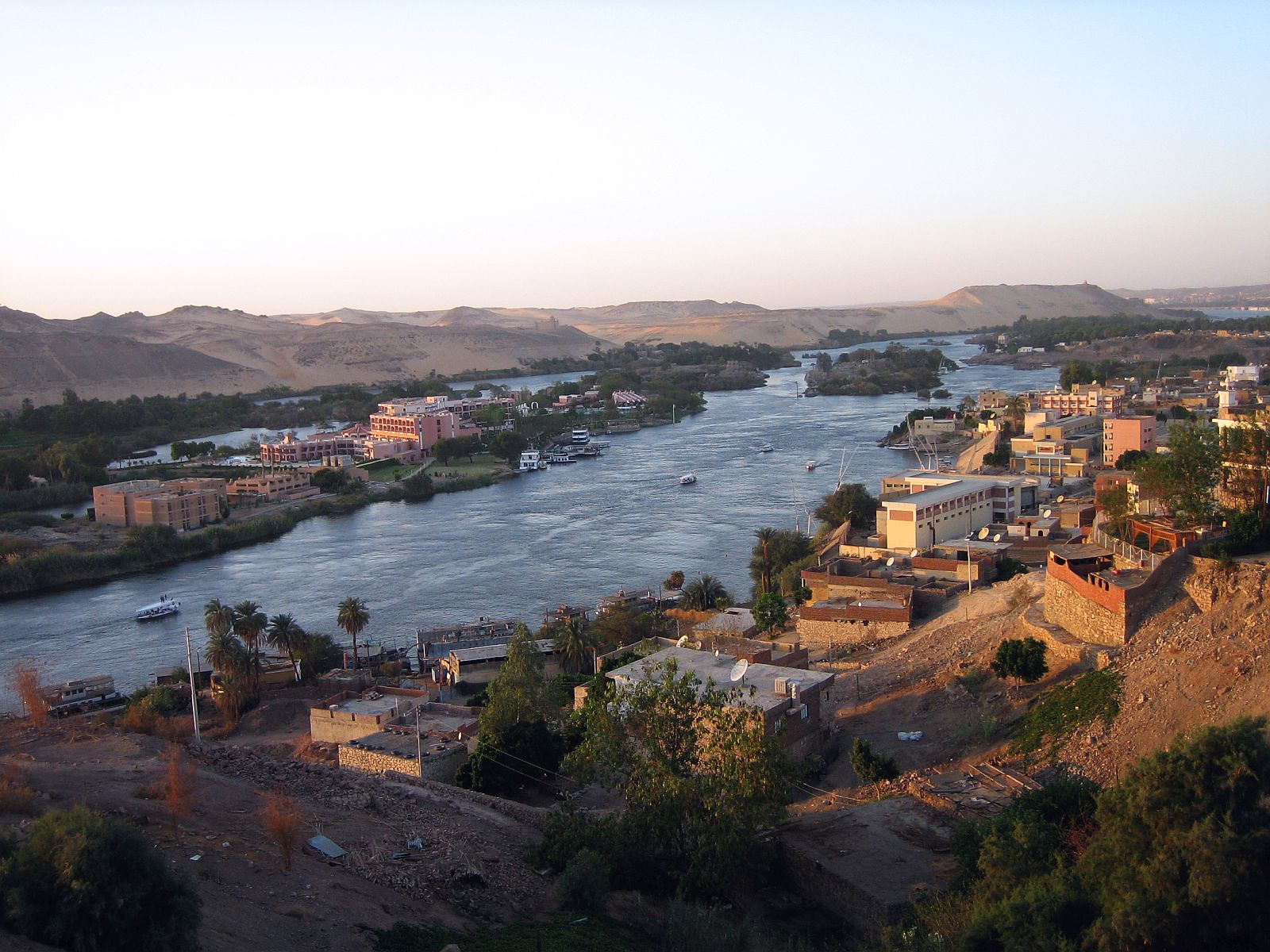
“You don’t scream as the camel stands up,” Amina told me with a smile. “It must be your Egyptian blood.”
I patted my camel’s neck as he turned towards the pyramids. They stood, three majestic pieces of history, glistening out over the horizon. The sand blew into my eyes as my father barked at me to spin the camel around for a picture.
“Does the camel have a name?” I asked his owner, as I nudged for the camel to turn.
“Yes. He’s named KFC — Kentucky Fried Camel.” He laughed at his own joke. Egyptians had a deep, inexplicable love for KFC. Not a single person I had met had been able to explain why.
My father came up on the other side of KFC. He gazed out over the pyramids.
“Your homeland is pretty incredible, isn’t it?”
It took me 27 years to finally visit my father’s, and by extension, my homeland. My father had immigrated from Egypt in his 20’s to England, where he lived for 12 years before immigrating to America. He promised that he would take me back to his homeland but it took years for him to fulfill this promise. There had been many reasons why it had taken me so long to get to Egypt: I never had enough money to go, my dad had never had enough money to take me, my mom had never trusted my dad to take me, etc . . .
I wasn’t raised to be Egyptian. My father never taught me Arabic, I didn’t learn proper Egyptian customs, and my knowledge of Islam is subpar at best. Nonetheless, I wanted to see Egypt, and during one spring break, I finally went with my father.
My initial reaction to Egypt was that I was going to die. Having grown up in the suburbs of Los Angeles, I was used to wild drivers, but Cairo drivers considered traffic lanes to be suggestions.
My cousin Ahmed nearly got into a wreck as we exited the airport. He didn’t actually look like me, and I couldn’t remember which cousin he was related to (my father had attempted to prep me on all eight million of our cousins and I remembered two).
“It’s nice to meet you, Yasmina,” Ahmed told me, as he proceeded to cut three people off.
“You too,” I gripped his backdoor handle, praying for dear life.
“Ahmed,” My father said in Arabic, “jioeawhiofhiowhhfnaiofnioaeoaofa?”
“What?” I blurted out.
“Yasmina doesn’t speak Arabic,” My father brushed me away. “Jioianfaoijweowejoiono?”
“Hahahahahahaha,” Ahmed replied. “Ahoijhewoiabfihweaoifhoiwhfeoihfow.”
While the two jabbered away in Arabic, I took in the surroundings of Cairo. A number of men wandered out into the street, completely oblivious to the cars honking and the drivers swearing at them. Girls wearing designer hijabs lounged on street corners, casually sipping on cups of coffee. I didn’t understand any of the street signs but could see stores lining the streets with makeup, dresses, soccer jerseys and hats. The honking never stopped. I couldn’t tell if they were honking at other cars, pretty girls or the person in the car next to them. It didn’t seem to matter, they just kept honking.
“There are a lot of people out tonight,” Ahmed explained, switching to fluent English. “Thursday night is like our Friday night. Our weekend is a bit different than yours. We don’t have work and school on Friday or Saturday. Friday is our day of prayers. Everybody goes out on Thursday night, that’s why the traffic is so bad.” He rapped his nails against his window. “That’s our soccer stadium. I’ve been there. We have games and concerts a lot too. You probably have a lot of concerts in L.A.”
“We do,” I answered. “We have — ”
“Jiofnaoiewjoiwfnioewanfoiafnoew?” My father cut in, to which Ahmed laughed.
We arrived at our hotel, a chic, emerald structure in the heart of Heliopolis, the city where the rest of my cousins lived. As we pulled into the driveway, a bulky soldier with a machine gun stopped our car. A large German Shepard followed at his heels. He knocked on the back of Ahmed’s trunk, which he popped open.
“Since the Revolution, our security is much tighter,” Ahmed explained as the man closed his trunk and motioned for him to come into the hotel.
“Is it bothersome?” I asked.
“No, it’s just for our safety. Things are better, but still a bit up in the air.”
We got out the car as a man in a pristine black suit sauntered towards us. He motioned for my bag, which he threw through a metal detector.
“Jioniownfioeanofia?”
“What?”
“You don’t speak Arabic?” He asked me in English, raising his eyebrows.
“No, sorry.” I hung my head in shame.
“Jionweoijafhhoeowanojfioa,” My father came around my side and put his bag through the metal detector.
“Ah, jowienafiojenwoinfaoa.” The man turned back to me. “What’s the matter with you, your daddy’s Egyptian and you don’t speak Arabic?”
“He never taught me!” I protested. It was true. My father had brought me an Arabic workbook and after about a month of attempting to teach me decided that it would be easier for me to learn more about soccer since that was always on the TV. My father had never been a good teacher, and every time he tried to tutor my sister and me in math, he threw his hands up after about 10 minutes and went to go eat.
“That’s okay. My name is Muhammad, like Muhammad Ali.” He pretended to box the air. “A very warm welcome to you. My father told me that this is your first trip to Egypt?”
“It is,” I responded, as three horns went off.
“Welcome to your homeland! This is your country too. I hope you will find everything to be enjoyable.” He beamed as he opened the front door for me.
“How do you say thank you?” I whispered to my father.
“Shakran.”
“Shakran,” I said to Mohammed.
The next day, my father and I boarded a plane to take a cruise along the Nile to visit Luxor and see the ancient sites along the way. Upon arriving in Luxor, we were surrounded by dozens of Chinese tourists donning large, straw hats and speaking with themselves in Mandarin. An Indian family dressed in full saris struggled with their suitcases, and a man wearing a full galabeya sauntered by, shouting at someone on his phone. This sight caused my father to fall into a fit of giggles.
“Check out Lawrence of Arabia over there,” He giggled, pushing through a gaggle of Chinese tourists.
“It’s not nice to make fun,” I hid a small smile. He did look rather odd.
“I had forgotten how different southern Egypt is.”
“What do you mean?”
“You will see.”

We began the journey in Aswan, arriving there after a few days. The Nile in Aswan was a sparkling, shimmering blue that was so bright I forgot it was a river and not the ocean.
My father and I settled into our room and he quickly decided to give me a brief tour of Aswan. He strode down to the lobby and marched right up to one of the desk attendants.
“Hello,” the desk attendant smiled. His English was perfect. “How may I help you?”
“Jioajoeanfionaoinofna?” Baba asked.
The desk attendant paused for a moment. “Oionaonfianfnsda. I thought you were both Spanish,” he added in a whisper. “I was about to start speaking Spanish.”
“No, Egyptian. Well, she’s technically American, but she’s my daughter, so Egyptian. Ononwanfoanfoanfoa?”
This continued on for a while as the Chinese tourists oohed and ahhed over luxurious pieces of silk. They poked at the gold camel statues and the hieroglyphic necklaces as a bored salesgirl clicked away on her phone.
“Do you like your homeland?” It took me a minute to realize that the attendant was speaking to me.
“Oh yes, it’s quite lovely.”
He beamed. “You don’t look American. Nor do you look Egyptian. I honestly thought you were both Spanish.”
Baba shrugged. “Well, the Ottoman Empire — ”
I prayed that he did not bore our poor attendant. You could always tell if my father liked someone because he would bring up one of the following topics: The Ottoman Empire, Soccer or 401Ks.
“Okay, Mina let’s go.” Thankfully it was a short lesson. Baba pulled me through the deck and onto the street, where cars whizzed by.
Vans held a good 10-15 people, two of which were nearly dangling out of the side. Men shot by on mopeds past full horses and carriages. Women lounged on park benches as boys kicked around a soccer ball. And just like in Cairo, there was constant honking.
My father whistled to attract the attention of a nearby carriage. “This is Aswan’s version of a taxi. Hop in.”
I struggled into the carriage while my father clambered in next to me, barking at the carriage driver. Dust blew into my eyes as we passed men sitting outside, smoking hookah and shouting at one another; teenage girls strolling arm in arm, stopping every few feet to take a selfie; dogs sauntering down the street and cats tucked by trash cans; soft city lights glowing in the distance. I gaped as an entire family of five roared by on a moped. Cairo had felt more modern, whereas Ashwan felt as though it had stopped growing sometime in the 1950s.
Along the way, I noticed there were stores framed with pictures of smiling couples and pink and white dresses.
“Those look like Quinceanera dresses,” I commented to Baba, who nodded.
“Yea, people really get into weddings in the south of Egypt. In some Nubian villages, the wedding will go on for a week.”
“A week?!”
“Yea or until they run out of food.” He pointed at a billboard with a man clutching a pair of dice. “That’s Egypt’s own version of Ocean’s Eleven.”
“Egypt has their own version of Ocean’s Eleven?”
“Yea, but it’s not as good as the American one. They like to rip off American TV too. My cousins told me that Egypt has its own Saturday Night Live, but it’s not very good. All they do is make fun of Trump.”
“Well, that’s all ours does too.”
We passed a bronzed statue of a man with a pen in hand, staring down at a piece of paper.
“That’s a famous Egyptian writer,” My father explained. “I don’t remember which one. But he’s from Aswan.” He took in a deep breath. “It’s been years since I was last here.”
“When were you last here?’
“Oh, I don’t quite remember. Probably after I finished my undergrad and before I went to England to get my PhD.”
“Why didn’t you just get your PhD here?”
“Egypt is very poor.” He sighed. “It’s poorer or as poor as most Latin American countries. I had to leave because I had a better opportunity. That, and I got bored.”
“You got bored?”
“Yea. I kind of got bored in Egypt. So I got into the University of Birmingham, and I decided to just go.”
“Weren’t you scared?”
“A little, but it was fun too.”
I sat back in the carriage, reminded of how I had also fled — in my case, Orange County for New Mexico — in order to get a decent education as a writer, and because, I too, was bored. I had needed a break from Orange County and I wanted to see what the rest of the country was like. So without knowing anything about Santa Fe, I decided to just hop on a plane and give it a go.
“I’m so glad that you seem to like Egypt,” My father cut in, interrupting my thoughts. “I’ve wanted to teach you about your culture for so long. But it was hard too, your mother didn’t want me to. She was convinced that if I took you to Egypt I would kidnap you. I’m glad though that you are now finally getting to see it.”
Unbeknownst to me, one of our cousins had hired a tour guide/archaeologist to show us around the various temples. His name was Ahmed, and it became quite clear why our cousin had hired him: my father knew nothing about ancient Egypt or Egyptian mythology.
“Today we are going to the Temple of Philae,” Ahmed told us, as we embarked on a small boat across the Nile. The boat looked as though it had been plucked straight from Disneyland’s Jungle Cruise. But instead of having a cheery skipper who cracked jokes, we had a sullen boat driver, who responded in short grunts when spoken to.
“The Temple of Philae goes back thousands of years.” Whenever Ahmed spoke about ancient Egypt, his voice rose, as though to capture the mysticism of it. “Today you will see drawings that have lasted years and years. It’s remarkable how long they have survived. Yet another sign of how great the Egyptian people are.”
“Beware of the peddlers,” My father cut in. “Whenever they try to sell you something, just tell them ‘no, or no shakran.’ It’s just a thing here.”
The second we got off the boat, peddlers surrounded us. They were like locusts, creeping into every crevice, their voices shrill and sharp.
“Noinionoi! 2 Dollar! Very nice scarf, you like?”
“Postcard! 1 dollar! Pretty postcard!”
“Real rock from the temple!”
We shrugged them off, my father grinning as he did. He made the mistake of slipping into Arabic, and it was over. Every peddler was on him, insisting that he buy something, that as an Egyptian, it was his duty to buy something. He laughed, the rush of the haggle brightening his face, as Ahmed led us to the temple.
Ahmed walked us through the different temples, the deep carvings of Gods and Goddesses bearing down on us, the long columns with different tops, the sand blowing in the wind and the heat burning through my hat. He explained that in all Egyptian mythology, it always focused on the family: the father, the mother and the child. This was why in Egyptian culture, the family was so important: it literally went back to ancient times.
While I found the legends to be easy to understand, my father did not. No matter how many times Ahmed explained who Osiris or Isis was, my father would ask again, much to his chagrin. At one point he let out a sigh, wondering how the people of Egypt do not know their own history, yet others find it so fascinating.

Upon leaving the Temple of Philae, we went to a different temple, the Temple of Sobek and Haroeris, which was dedicated to Sobek, the crocodile God. Ahmed informed us that when the temple was used, live crocodiles were also housed, alongside the humans. When I asked Ahmed why he liked Sobek so much, he simply answered, “He’s a crocodile God,” which admittedly, is a good enough reason to favor a God.
Over the next few days, we sailed from town to town, exploring ancient temples with scrawling on the walls. We drank tea every day at 4 p.m., and Ahmed tried to give us lessons on hieroglyphics and mythology. By the third day of my father forgetting everything he had said the day before, Ahmed became more interested in watching the Chinese tourists. They played a game in which they kept clapping their hands and cheering, all for no apparent reason.
“Why does this keep happening?” Ahmed burst out laughing at the sight, which had now evolved to include slapping and screaming the table.
We passed through Edfu, a small Egyptian village to see yet another temple. Skeletal dogs roamed the streets as a young girl, who could barely speak or see, tried to sell me tissues for a mere Egyptian pound. The buildings were decaying and every carriage was decorated with bells, whistles and in the case of ours, Tweety Bird stickers.
We eventually made it to the most magnificent and well known of all the temples, Luxor. The largest city on our tour, Luxor was home to Karnak and Luxor Temple. As we first approached Luxor Temple, I was awestruck by the towering columns, the detailed sketches, the sprawling courtyard . . . and the McDonald’s directly across the street.
“Huh,” I muttered to myself, as a wreck nearly happened in front of the McDonald’s.
“Oh, this temple may not give us free admission,” Baba yawned, stretching his arms above his head.
“The temples were giving us free admission?”
“Yes, because I am Egyptian and you are my daughter. We get in for free if we are citizens. But they may not go for that since this one is bigger. So today you’re Canadian.”
“Why can’t I be American?”
“Oh, you can be, it’s just a hassle,” Ahmed cut it. “If you’re American, they’ll send in a guard with a giant machine gun to follow you around.”
“What?! Why?”
“Oh, there are all these rumors that American tourists get kidnapped. It’s not true of course, but they had to start doing it as a precaution.”
“I think I’m going to be British from now on,” Baba decided.
“Why?”
“I’m tired of people trying to sell me stuff because I’m Egyptian. They claim you have to buy something for your homeland! Let’s not be Canadian, let’s be British. That’s more fun. From now on we’re from the posh part of London.”
“Are you serious?”
“Yes. I feel like being British.”
“You do that then.”
True to his word, Baba decided we were British. He altered his accent to sound even more British than usual and even made friends with a family from Manchester.
“I recognized your accent,” He told them proudly, as we strolled through the columns. “I used to live in Birmingham. Now my daughter and I live in London.”
“Oh, lovely.”
I nodded, afraid that my lack of a proper posh accent would give me away.
Baba kept up his British facade not only at Luxor Temple, but also at the Valley of the Kings. It became clear just how many Chinese tourists came to Egypt, as the guards at the various temples had learned to bow and cry ni hao! much to the tourists’ joy. I also learned that if one wants a picture in the tombs, they can easily bribe the guard with a crisp 10-pound note. One just has to make sure no one else is in the tomb.
Over the next few days, Ahmed regaled us with tales of the two most famous temples. Luxor Temple had a mosque in it, which actually did hold prayers. Karnack had nearly been bombed, but all of the shopkeepers and peddlers had managed to secure the attackers, all thanks to the bravery of a cab driver (and Allah). The ink on the temple walls, which were over 4,000 years old, were still vibrant, with various shades of scarlet and blue shimmering against the granite.
As fascinating as the temples were, the tourists who visited them were even more so. When a British man dressed entirely in khaki posed in front of Ramses II for a picture, a group of Chinese women bombarded him, insisting on a selfie. He smiled bemusedly as they pointed at his hat. Ahmed and I concluded that they may have thought he was Indiana Jones.
Numerous school children ran amok, their chaperones screaming at them to stay together and listen to the history of the temples. Just as American children often go on a pilgrimage to Washington, D.C., Egyptian children tend to go visit the ancient sites of Luxor and Aswan. And just like many American children, Egyptian children have no interest in the history whatsoever — they want to get as many selfies as possible for their Facebook account. Strangely enough, I was included in a few of these selfies, as random girls ran towards me, stuck a phone in my face and ran away. Anyone who wasn’t Egyptian was far more fascinating than the barbaric behavior of Ramses III.
On our third day in Luxor, I obtained a suitor.
“You need to buy some alabaster while you’re in the south,” Ahmed told us, as we bounced over a dirt road. “The alabaster is better in the South than it is in the North.” He barked something at our driver, who turned down yet another dirt road. “I’m going to take you to the best alabaster shop in all of Luxor. It’s much better than all the other tourist ones.”
We parked outside an aged white building, where a bald man dressed in a gabeya strolled over to meet us. He beamed as my father and I came out of the van, squinting into the bright sun. He had pristine teeth and dark sunglasses.
“Hello! I am Mohammed.” He was the fourth Mohammed I had met. “This is my family’s alabaster shop. That’s my dad and uncle,” He pointed over at two other men working with a fine porcelain. They nodded in our direction. “Would you like to learn how alabaster is made?”
Mohammed walked us through the entire process, and he explained that his whole family owned and worked at this shop.
“Come, come inside!” Mohammed led us over to the door to his shop, “You must see our alabaster. It’s very good, the best alabaster in all of Luxor!”
Baba walked ahead of me, taking in all of the different shapes and sizes of alabaster. There were sparkling green vases, charcoal cats, pyramids and stunning vases of colors I had never seen before. Ahmed headed straight for the back where another man emerged and set up a hookah for him. He proceeded to look at Facebook.
“You and your hookah,” Baba laughed, walking towards him. “You just can’t stop smoking it, can you?”
“I’m amazed you don’t,” Ahmed replied, as the other man plopped down and began to jabber away in Arabic.
“Your alabaster is very beautiful,” I told Mohammed, who had magically reappeared with a glass of hibiscus tea for me.
“Thank you. You are from America, yes?”
“Yes, I’m from Los Angeles.”
“Los Angeles! Wow! I’ve always wanted to go there.”
“It’s a bit different from Egypt, but I think you might like it.”
“Do you like southern Egypt?” He shot me a pair of puppy-dog eyes.
“Yes, very much, it’s lovely.”
“Do you have Facebook?” He wiped out his phone and switched to his Facebook app.
“Uh, yes . . .” I glanced over at Baba, who was rambling to a resigned Ahmed..
“I will add you,” Mohammed pushed his phone in my face. I didn’t want to refuse, so I tentatively added my name in. “This way the next time you are in Luxor, I can show you around! We Egyptians love Facebook, it’s like water.”
“Okay — ”
He then flipped the phone around. “Selfie?!”
“Ahhh . . .” I wasn’t wearing any make-up and my hair was tied up in a sloppy braid. I was pretty sure sand and dirt covered every inch of me. “Okay . . .”
Mohammed beamed his pearly whites as I leaned my head in. “It’s perfect!”
“Next time you are in Egypt, come back alone.” Mohammed winked. “Then I can really show you Luxor.”
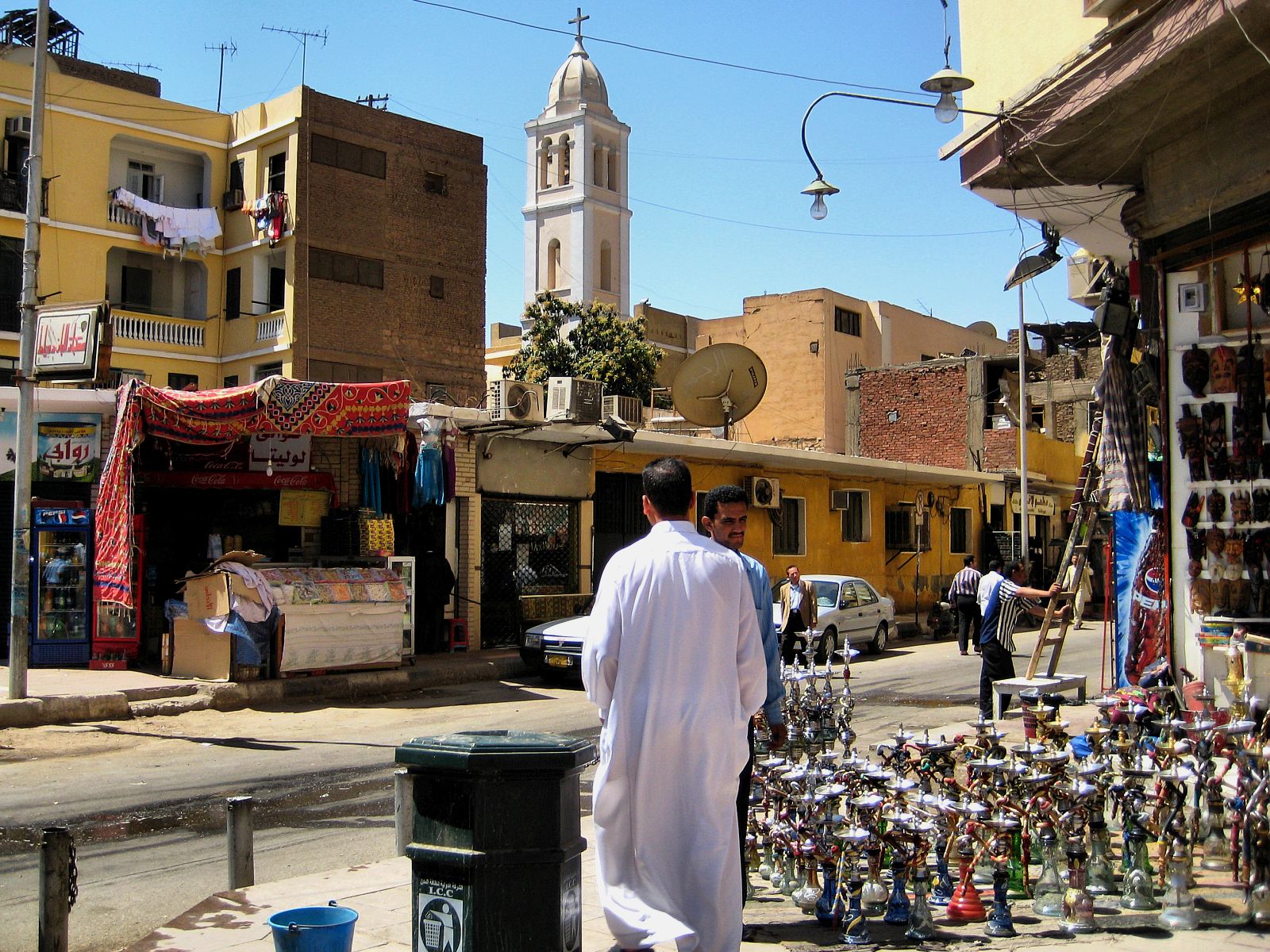
In the span of five minutes, I had caught myself an Egyptian suitor. To this day, I still randomly get messages from Mohammed, which are usually pictures of roses. He insisted I return to Luxor alone, so that he may show me the sights and sounds. If I ever grow tired of life in Los Angeles, I always have the option to go and live in the alabaster store with Mohammed.
Upon returning to Cairo, my father introduced me to roughly 8,000 cousins. The majority spoke English, with the exception of a few who only knew how to communicate via feeding me falafels and selfies. I also met Uncle Wale, my father’s brother, who has written five books on Islam, and as all siblings do to one another, horribly embarrasses my father.
Uncle Wale took us out to dinner at a fancy restaurant on the Nile. The long, flowing river was not as bright or as clear as it was in the South; it actually resembled the same mud and dirt as The Mississippi. Nonetheless, the Nile was one of the quietest places in all of Cairo, an oasis away from the constant honking. The cafes along the Nile soon became one of my favorite places in the city.
“Joinownfoiana?!” Uncle Wale barked at the host, who either didn’t have a table for us or didn’t have the right table.
“Inoanfioanfosna!”
“Buihbwbaifbbaibfa!” Uncle Wale stormed off, leaving us with the now disgruntled and confused host.
“What happened?” I asked Baba, who had buried his face in his hands.
“I don’t even know. Wale is so self-righteous. It’s so embarrassing. He’ll come back in a minute, just watch.”
Sure enough, Uncle Wale strode back up the host, who with a shrug, led us to our table, only to find a cat sitting in one of the chairs. When Uncle Wale tried to shoo the cat away, it stared at him, flicked its tail, and proceeded to roll over onto its back.
This wasn’t the last time Uncle Wale would storm off. During one family gathering, where my relatives had prepared the equivalent of eight Thanksgivings, Uncle Wale became disgruntled and marched right out the door. No one reacted to this and kept eating. Two minutes later, Uncle Wale sauntered back in, urging everyone to finish eating so that they could go watch the football match.
“It’s so embarrassing!” My father hissed at me, as Uncle Wale plopped back down at the table. “Why does he do this?!”
“All siblings embarrass each other,” I reassured him. “Nadia embarrasses me all the time.”
While none of my relatives matched Uncle Wale’s dramatic antics, they all had their own quirks. My cousin Tarek told me, in complete sincerity, that when we dream, our souls leave our bodies and we all meet up with each other in dreamland. He believed that this was why we dreamt of other people, we encountered them in dreamland. My cousin Kareem and I immediately bonded not because we were family, but because we both liked to watch RuPaul’s Drag Race. It seemed that, like my father, none of my family members were normal by any society’s standards.
Every day felt like Thanksgiving, as my family fed me plate after plate of falafels, rice, grape leaves, chicken, pita, salad and glass after glass of crisp, refreshing hibiscus tea. I was adorned with gifts: gold vases scrawled with Arabic writing, purses featuring Egyptian film stars, lavender, sea green, silver hijabs and a stunning sapphire necklace. I gaped at the necklace as my cousin draped it around my neck, uneasy to accept such a gift but flattered at the same time.
“It’s jamila,” She said, patting my face. “Just like you.”
“What does jamila mean?”
“Beautiful.”
I was touched by their kindness. Despite never having met me, they opened their doors to me, fed me and treated me as a true member of the family. Despite my lack of Arabic and clear appearance as an American, they still accepted me. They truly made me feel that Egypt was also my homeland.

/
 Sarah Mina Osman is a writer and teacher living in Los Angeles. She is half Egyptian/half Cajun, which, yes, is a strange combination. She has traveled to four different continents and lived in Australia. When she’s not writing or teaching, she enjoys dancing, watching random shows she finds on Netflix and eating. She also has a deep appreciation for sloths and platypi.
Sarah Mina Osman is a writer and teacher living in Los Angeles. She is half Egyptian/half Cajun, which, yes, is a strange combination. She has traveled to four different continents and lived in Australia. When she’s not writing or teaching, she enjoys dancing, watching random shows she finds on Netflix and eating. She also has a deep appreciation for sloths and platypi.
The post Kentucky Fried Camel in Egypt: My Return to a Country I Never Left appeared first on The Expeditioner Travel Site.
]]>The post Into The Great, Wide Open: The Ultimate Alaskan Fishing Trip appeared first on The Expeditioner Travel Site.
]]>
Through the windshield, I watched the de Havilland’s front propellor spin furiously as our small 8-person prop plane hurtled forward through the Alaskan sky. It was a bright, clear morning, and below us I could make out the outlines of a few of the small islands that make up the Alexander Archipelago.
Looming in front of us was one of the island chain’s biggest island, Prince of Wales Island, home to a smattering of Native American villages, remote logging outposts, more black bears than there are humans, and a former salmon cannery now turned Alaska’s premier fishing resort, Waterfall Resort Alaska, my home for the next four days. Here I would be fishing, an activity I had once sworn off back in my teenage years, an era of my life when the thought of long stretches of time spent doing nothing surrounded by nature would have been considered torture. Lucky for me, my outlook on life had since changed.
“Welcome to Waterfall Resort,” a staff member said, greeting us after our plane landed and motored to the dock. “Your bags are being brought to your rooms directly. Please head to the cannery at the top of the ramp to pick up your slickers so we can get you out on the water as soon as possible!”
And with that we were ushered into a room crammed from floor to ceiling with rows of yellow slickers where we were fitted with gear that would be ours for the duration of our stay. As I stepped into a pair of galoshes and pulled on a pair of the oversized, yellow pants with over-the-shoulder suspenders, I wondered if I would evoke the image of the classic sailor that graced the front of the Gorton’s Fish Sticks boxes I used to love as a kid. As I pulled the suspenders over my head, I realized I had put the pants on backwards, resulting in the crossed suspenders nearly choking me. A staff member rushed to my aid and helped me to put on the pants properly. Needless to say, grizzled fisherman I was not.
News to me upon arriving, a good portion of Alaska — that section referred to as Southeast Alaska — is actually made up of about 1,100 islands that span a 300-mile stretch of coastline bordering British Columbia to its east, an embarrassing admission to make for someone that prides himself on his sense of direction and knowledge of world geography. Due to the island’s many freshwater lakes and streams that feed into the protected island channels — and therefore prime spawning locations — it is here where sport fishermen from around the world flock for some of the best salmon fishing in the world.

A half-hour later, myself and three other fishermen, along with our assigned fishing captain, Captain Mitch, were floating alongside the shores of Baker Island, dropping our lines into the cool Pacific water, hoping to attract the attention of a school of silver salmon grouped below us.
I learned alot about Captain Mitch over the next few days — let’s just say fishing far from any cell towers lends one to share many life stories. I learned Captain Mitch was a retired aviation mechanic who used to work at the Boeing headquarters in Seattle, that Captain Mitch, since retirement, has been asking his wife permission to lead boating expeditions here at Waterfall and that she’s said “yes” for the past 20 years, that Captain Mitch drinks black coffee in the morning, eats fried chicken for lunch, and Skypes with his wife every night before going to sleep around 8 p.m., and that Captain Mitch’s mascot is Papa Smurf, a nickname given to him due to his grey beard, less-than-wirey stature, and the fact that he’s the captain of the entire fleet. As a present, the staff gave him a small Papa Smurf doll that now dutifully hangs above the steering wheel. We were in good hands.
“Drop to 50 feet and reel up!” Captain Mitch instructed with the conviction of a man clearly experienced in minimizing the time needed to start catching fish.
I did as I was told, and just a few drops later, I felt a tug, followed by a hard pull on the end of my line as the fish worked to free himself free of my hook.
“Work the line up, lifting and reeling at the same time, then dropping your tip down back to the water!” Captain Mitch advised, clearly observing the ineptitude I was displaying after the bite.
As I reeled in, the adrenaline hit me, and I could feel the envious eyes of the others on me. Pulling the end of the line close to the beginning of the reel, an 8-pound coho salmon (more commonly referred to as a silver salmon) suddenly appeared thrashing on the water surface. Captain Mitch told me to guide it to the boat’s edge, where in one quick motion he leaned over, grabbed the line, pulled the fish into the air, and whacked it on the head with the back of his gaff, stunning it temporarily, then hooking it and pulling it into the boat. My first catch of the trip.

And with that, I began to “get it.” Simpler than any cliched Hemingway-esque metaphor between man and beast, I experienced the pure sport of fishing, and the excitement that comes with wresting a large fish from the depths of the water with only a thin pole and a bit of bait, a surprising feeling for someone that abhors the thought of hunting land animals.
Captain Mitch flung my trophy into the large cooler in the center of the deck and re-baited my line. The others had quickly gone back to dropping and reeling in their own lines in search of the next catch. We had several hours of daylight left in the day, and little time to dwell on my first catch.
Mornings start early out on the water. The next day, having woken, showered, and eaten a quick breakfast, we were leading the way out of the docks at 6:30 a.m. sharp, the Alaskan early morning sun already high above the horizon after emerging more than an hour earlier. This morning we were heading 1 ½ hours south to the open expanse at the tip of Dall Island where the nutrient-rich, cold waters of the ocean meet the warmer waters of the archipelago’s many inlets. Here we were in search of the prized halibut.
For those like myself who, prior to this trip, wouldn’t have been able to describe the difference in shape and size between a halibut and a salmon, the halibut is a flat-faced, diamond-shaped bottom feeder with a complexion matching that of army camouflage. They are also hard to find, one of the tastiest fish to eat, and notorious for putting up some of the hardest battles with fishermen in the sea.

After motoring to a spot Captain Mitch favored, we dropped our lines down 100 feet to the ocean floor and quickly located a school. Minutes later I had a bite. Rather than the side-to-side thrashing I had experienced with the salmon the day before, when the halibut bit, I felt an initial tug, then an immediate yank downward as the fish seemed to flatten out in protest, using the principles of water displacement to its advantage.
In reality, halibut just grow to be really huge. Several fisherman during my time there caught ones weighing over 100 pounds, and record-setting catches often exceed 300 pounds (the weight limit currently stands at 300 pounds, which means those truly large catches are thrown back in the water with the assurance they will end their life due to natural circumstances courtesy of the Alaska Department of Fish and Game).
My first and only halibut of the day put up a hard fight, my forearms throbbing by the time I pulled it up after 15 minutes of constant reeling and pulling. As Captain Mitch yanked it aboard, I was intrigued by its alien-like bulbous eyes situated unevenly on its head — apparently there’s not much to look at on the seafloor — and its scaly, green body, nothing like I imagined it would look like having eaten plenty of the delectable white fillets at respectable restaurants throughout my life.
Current limits set the daily haul at one halibut per fisherman per day. After we all successfully caught one each, we headed back to shallower water where we were able to whittle away the rest of the morning and early afternoon until we caught our boat maximum of 24 salmon (6 each per day), leaving plenty of time to motor back to the resort with enough daylight left in the day for me to finally explore its grounds.

Shortly after lunch, I was on my way to start exploring the resort when I was stopped by an excited member of one of the other boats.
“If you go now, you may still see the bear!” he said, pointing backward in the direction of the hill where the dining hall was located.
Not one to miss out on wildlife sightings, especially those involving animals that could potentially eat me at their whim, I hightailed it forward. Unfortunately for me — though fortunate for perhaps my physical health — said spotted black bear was nowhere to be found, replaced instead by a disinterested fawn grazing on a patch of grass.
I snapped a picture with my phone and continued on. At the top of the hill I took stock of the resort below me. Waterfall can date its history back to when the Waterfall Cannery was founded in 1911. Over the years, as it grew, the cannery added housing units for the workers (now cabins used for the guests), along with massive wooden structures to house the cannery itself. At its peak, the cannery produced 220,000 cases of silver salmon. Today, the complex has been converted into the state’s largest sport fishing resort (it’s also home to the state’s largest private boat fleet), welcoming over 2,000 guests a year.
The bulk of the 52-acre property is undeveloped forest, part of the Tongass National Forest, where the dense growth and mossy underbrush makes it hard to explore by foot. For that reason, an elevated wood bridge was built to allow visitors to explore inland to the namesake waterfall where the resort gets its name.
After a short walk along the beach, then onto said bridge for a half-hour trip inland, I finally emerged at a clearing in the forest that revealed the massive, multi-story-high waterfall. Fed by a slow-moving stream above, I lost track of time as I listened to the sound of the falling water and watched the hypnotic show the water produced as it trickled its way down.
The pool of water at the base of the waterfall is the final stop for many salmon who are born here, and who end up returning to die here after an arduous trip upstream to finally spawn at the very spot where they started their lives. Naturally, the bears know this, and on most days you can spot groups of bears and cubs as they congregate below in search of an easy meal. Today, however, there were no bears, only a sole brave photographer standing knee-deep in water, shooting the falls from below.
Returning back to camp, I headed to dinner at the dining hall. The tables are grouped by boat members and the day’s biggest catches by fish are announced at the end of the meal, with winners awarded commemorative hats (and patches for those with catches exceeding certain limits). Following dinner, as per ritual, most everyone retreats to the Lagoon Saloon, Waterfall’s sole drinking establishment where both guests and workers can congregate over local Alaskan brews and share fish stories from the day.

Late the next morning, after another successful haul of silvers that saw us creeping near our day’s limit by lunchtime, the blue sky that had blessed us since our arrival began to give way to a thin, grey overcast. Word around camp was that we had some “weather” rolling in, with rain and wind predicted to pick up considerably just in time for our departure.
“What happens if the weather is bad enough the planes can’t fly us out tomorrow?” I asked Captain Mitch.
“If they can’t fly, then we boat you out,” he replied, not looking up as he looped a fresh piece of bait onto a hook. “And if we can’t boat you out, you get to stay another day. But that’s only happened a couple times since I’ve been here, and I’ve been working here for over 20 years.” He paused, for dramatic effect. “Trust me, you’ll make your flights tomorrow.”
His response clearly indicated that the logistics surrounding the departure of close to a hundred people and their respective boxes of fish would revolve around the question of “how” rather than “if”; either we were leaving by plane or we were leaving by fishing boat flotilla, piloted by a fleet of captains who had spent their fair share amount of time navigating in disagreeable conditions.
“I’ve got one more spot I wanted to show you guys,” Captain Mitch informed us as we pulled up our lines. “Are you up for a bit of driving?”
A half hour later we were motoring out in the direction of the open ocean, the island masses spread out behind us. We veered north, skating around the pointy cape at the southernmost tip of Baker Island, then steered toward land, finally coming to a stop in a quiet cove surrounded by towering cliffs.
“Allright, I’ve gotten reports that the halibut are biting here. Let’s drop down 150 feet and see if we can catch our limit for the trip. I’ve also heard we may have other visitors around here.”
Visitors? I assumed he meant other fishermen eager to get in on our prime halibut spot. Minutes later after dropping our lines, we discovered what he meant.
Off the starboard side of the boat, halfway between our tiny vessel and the nearby coast, we heard a tremendous exhale, followed by the release of a massive spray of water blowing into the sky. Suddenly, the black head of a humpback whale breached the surface of the water, its gigantic body following behind in a tremendous arc, finishing with its fluke sweeping upwards towards the sky before its entire body dove back down below.
By this point most of us had little use for fishing rods, and we had lunged for our cameras that we were now clicking away with. For the next half hour, as we floated in place and took shot after shot, we were treated to a show as two other humpbacks joined in and fed in our little cove. Circles of bubbles would appear from below — the whales do this to cause fish to congregate for easier hunting — followed by breach after breach of the whales as they scooped up schools of tiny fish in their mouths.
After a short while, the whales began to finish hunting and swam away into the ocean. By this time the sky had turned a dark grey, the temperature had dropped precipitously and a cold rain had begun to fall. We broke out the yellow slickers that we had little use for the days before. We packed up our gear for the day, and took stock of our catch.
In total, our boat had caught over 50 silver salmon, 8 halibut, and a several pink salmons, rockfish and lingcods. Incredibly, this meant we would each be flying home with over 50 pounds of fish the next day via insulated luggage containers (each night our daily catch was cleaned, vacuum sealed and marked for eventual shipping home with us). Though unusual for mementos, I couldn’t think of anything better I would’ve wanted to take home with me to remember this ultimate fishing trip in Alaska.

/
 Matt Stabile is based in New York City, and is the founder and Editor-in-Chief of The Expeditioner which was founded in 2008. You can read his writings, watch his travel videos or contact him via email at any time at TheExpeditioner.com.
Matt Stabile is based in New York City, and is the founder and Editor-in-Chief of The Expeditioner which was founded in 2008. You can read his writings, watch his travel videos or contact him via email at any time at TheExpeditioner.com.
The post Into The Great, Wide Open: The Ultimate Alaskan Fishing Trip appeared first on The Expeditioner Travel Site.
]]>The post I Took A River Cruise Through The South Of France. Yes, Really. appeared first on The Expeditioner Travel Site.
]]>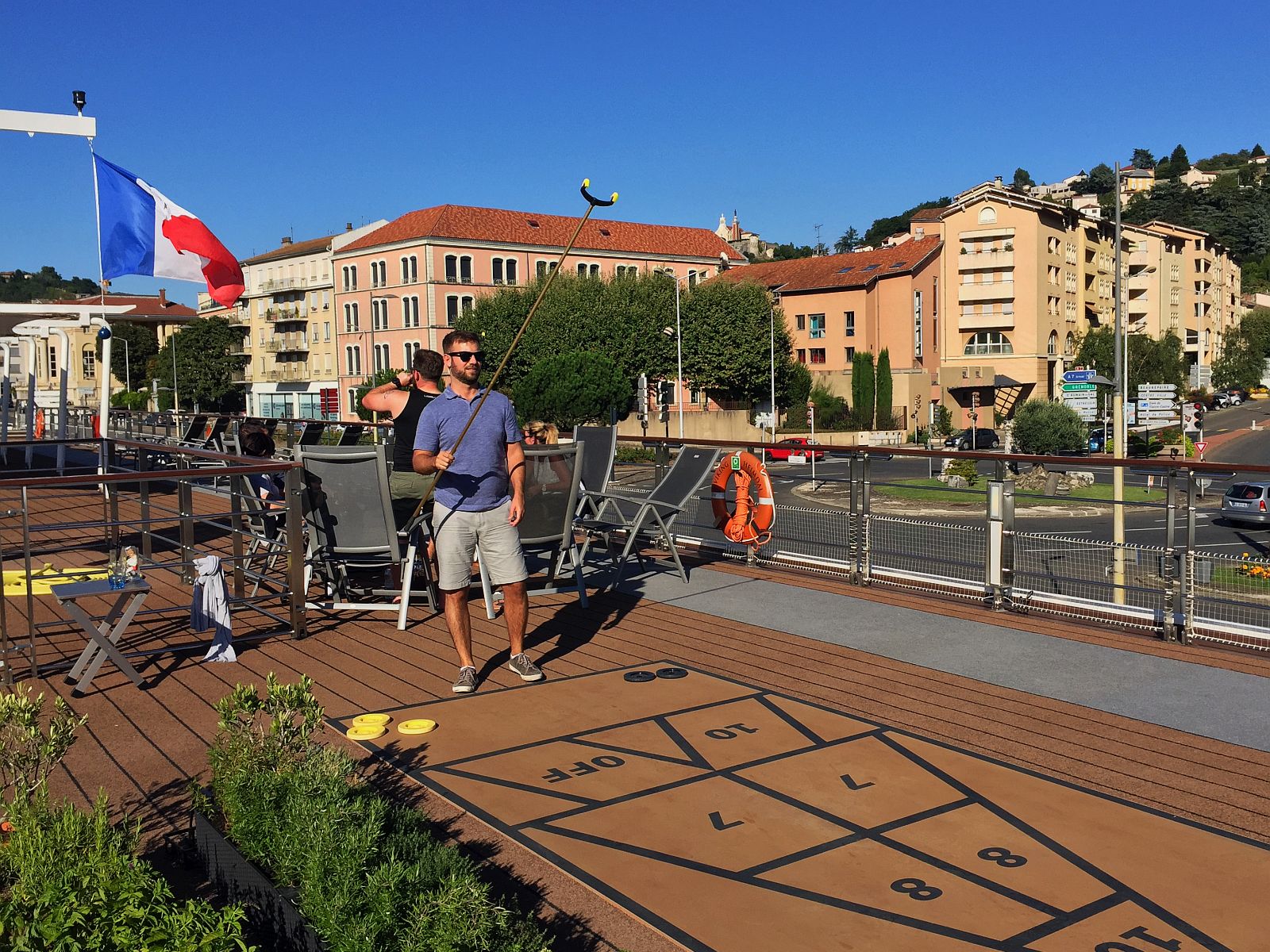
As I sat in the lounge of our longship nursing a freshly poured glass of wine, I looked around the room. Of the roughly 150 or so people attentively listening to the Entertainment Director’s welcome introduction (one of eight such all-hands-on-deck speeches we would hear over the next eight days), I found I could group the passengers into one of three distinct groups — except me, clearly the odd man out.
Roughly seventy percent of the boat were those one could refer to as Seniors: retirees, couples who were still working but whose children were in the reproductive stages of their lives, a surprisingly large number of widows traveling in bunches of three to four.
This particular cruise was earmarked for a gay and lesbian-themed group booking, which made up about twenty percent, and who I was to later learn easily made up the majority of individuals that had purchased so-called “Silver Packages,” which meant unlimited drinks and access to the top shelf-level bottles without incurring additional charges to their bill.
The third group, maybe eight percent, were well-heeled couples, mostly from Europe, that out-dressed us all come dinner time.
Then there was me. Actually, then there was me and one group of three Coloradans that — when combined with myself — made up the population of the boat born after the Carter Administration (okay, technically Carter served less than a year after I was born, but I’m rounding up here). We made up the final two percent, and our common thread was that we all enjoyed day drinking-friendly games (shuffleboard, Yahtzee, Scrabble) and day-drinking itself.
We, collectively, would be spending the next eight days cruising the Rhône River with Viking Cruises, beginning from the river’s mouth where it feeds into the Mediterranean up to Lyon, about 200 miles in total. Copious amount of wine and French cooking would be consumed, river locks would be admired in groups, and about 2,000 years of history would be condensed into daily excursions to some of the most picturesque, admired and most visited cities and villages of France, all under the Provençal sun in August. I’m not sure it gets much better than that.
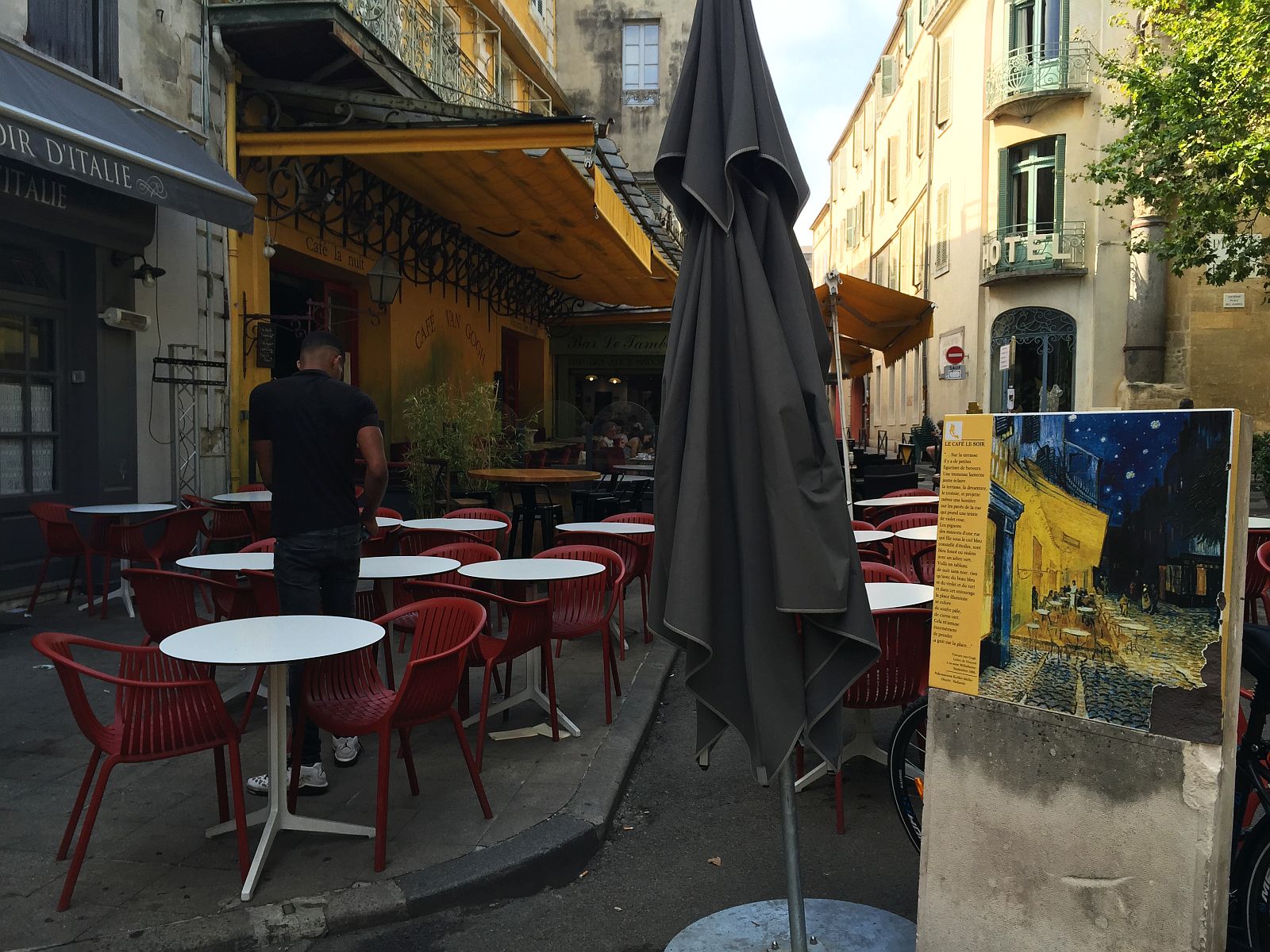
Earlier in the year, I was invited by Viking Cruises — one of the largest and best-known cruise companies in the world with 64 boats floating around the world — to take a cruise with them, and I jumped at the chance to take their Lyon and Provence eight-day river cruise, which includes port-of-call stops in Arles, Avignon, Viviers, Tournon and Lyon. This also included daily excursions to nearby vineyards, medieval villages, goat farms, chateau-turned-wineries and horse farms.
The first day began with a drive through endless fields of sunflowers to Arles, where we were to explore the many Roman ruins that are amazingly preserved in the center of town, including Les Arène, built by the Romans in the early 2nd century AD and that could hold 20,000 spectators during its heyday, as well as the Théâtre Antique, an outdoor theater from the 1st century BC.
Arles, of course, is probably most famous for not what it is but who called it home for a little over a year: one Vincent Van Gogh. And at mid-morning, we found ourselves in the courtyard of the hospital where Van Gogh was admitted after cutting off his ear. The motivation was unclear, history just tells us his favorite prostitute was given it as a gift. In fact, unknown to me at the time, but Arles is home to sites that were the subject of some of his most famous paintings. As any college Freshman who recently decorated their dorm could probably tell you, these include Café Terrace at Night, Bedroom in Arles, and Starry Night over the Rhône.
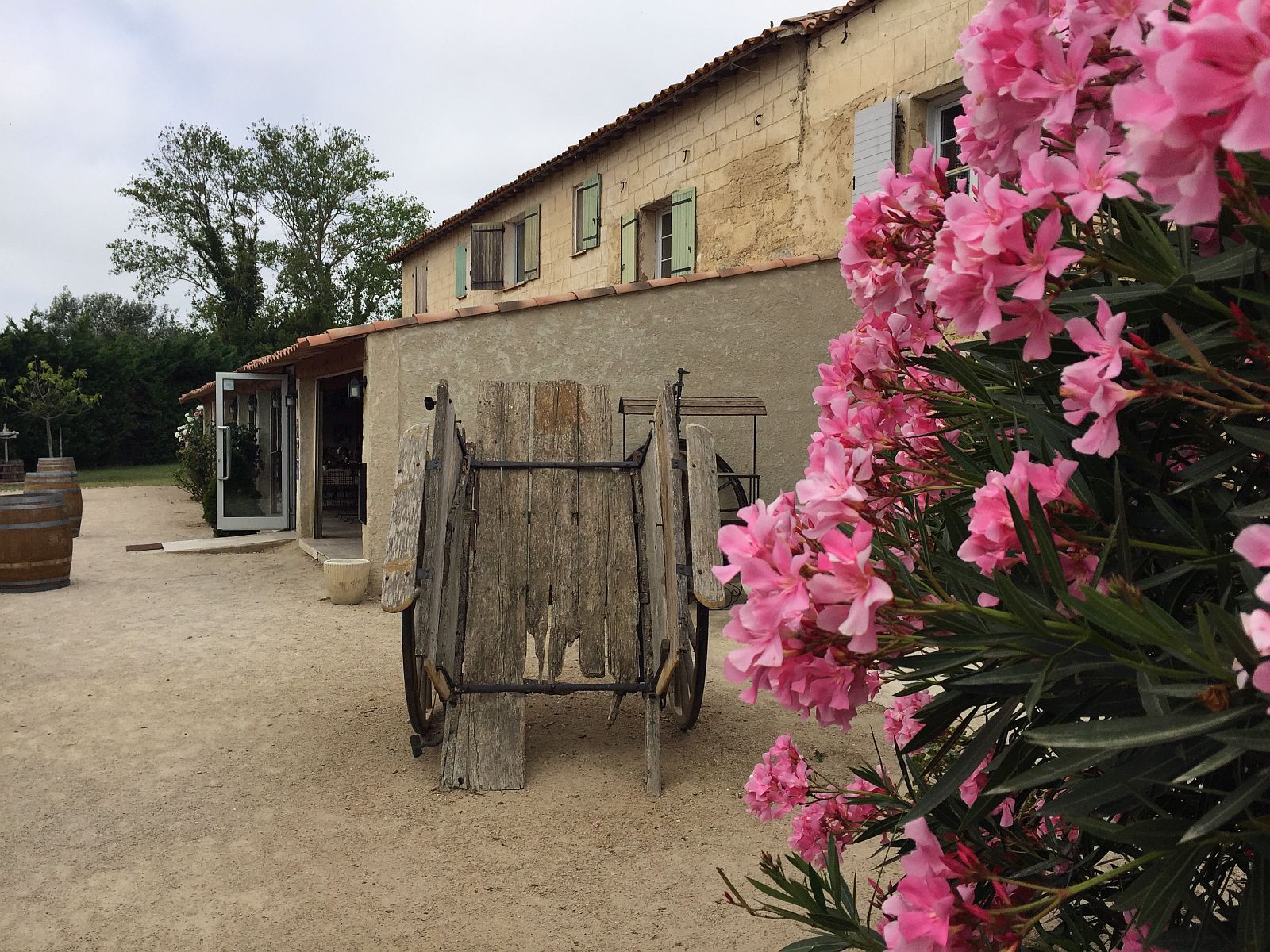
Afterward, we drove south about an hour to the Camargue, France’s protected Rhône River Delta region, home to centuries-old horse and cattle farms, weekend beach villages and about 500 species of birds. Think the Mississippi Delta region, but instead of Hurricanes there is wine, and instead of alligators there are cows.
We stopped for lunch and cow-viewing (yes, really) at La Manade Des Baumelles, a working horse and cattle farm where we followed our gut-busting meal of charcuterie and roasted chicken with a tractor tour of the grounds. We were shown the iconic white-haired Camargue horse that has called this area home for centuries, as well as a lugubrious group of black, long-horned Camargue bulls (one of two breeds used for fighting in Europe) that were content in resting under the warm sun while we drove by taking pictures. Oh to be a breeding bull raised in the South of France — what a way to spend your life!
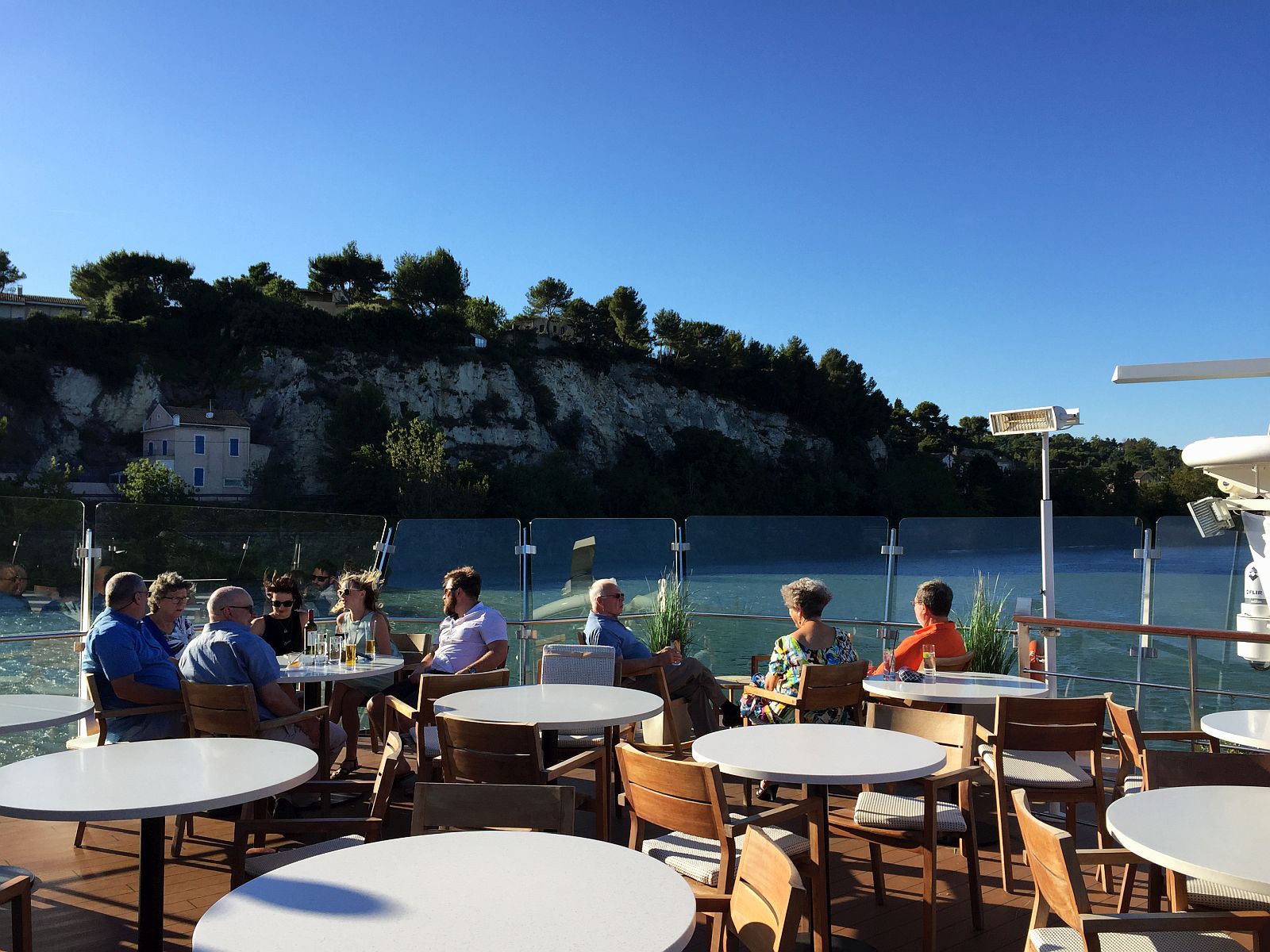
I can’t say I’m much of a cruise traveler. So what was it like spending eight days on one? In all honesty, I’ve got to say, it wasn’t bad. Wasn’t bad at all. Life on a river cruise tended to be a bit more regimented than I was used to during civilian life back on land. On the boat, as is custom on cruise ships, each morning a detailed itinerary was slipped beneath my cabin door (the Viking Daily), assumedly by the friendly Hungarian woman who somehow remembered my name from the moment I introduced myself. (One day I casually mentioned to her that the rules of Shuffleboard were a bit fuzzy to me, and a printout of regulation shuffleboard rules were delivered to me the next morning along with my Viking Daily.)
Breakfast would be served for about two-and-a-half hours, followed by the hustle and bustle on par with morning rush hour. At this time everyone would check back into their cabins and collect their sunglasses, wide-brimmed hats, cameras, day bags and complimentary Viking-branded water bottles and congregate outside to be grouped into one of eight or so guided tour groups. The tours would usually wrap up a few hours later, followed by another leisurely meal either inside where you could have a sit-down lunch, or at the cafe where you could take your meal outside to the deck and watch the waters of the Rhône peacefully glide by.
Following lunch, people usually grouped themselves into one of two camps: the nap in the air-conditioned lounge with a cocktail by their side camp, and the head back out into the world and take part in learning about French history and culture camp, the latter of which meant you were taking part in one of the many daily scheduled excursions for the day.
Perhaps underestimating my need for a daily afternoon nap during a weeklong stretch where the words “seconds” and “dessert” were used more than the entirety of the rest of the year, I signed up for every single afternoon excursion offered, which is how I found myself one afternoon in Avignon as part of a group walking the Passage de l’Oratoire and Rue Saint-Agricol, taking tiny shots of locally produced olive oils and downing macaroons from local shops.
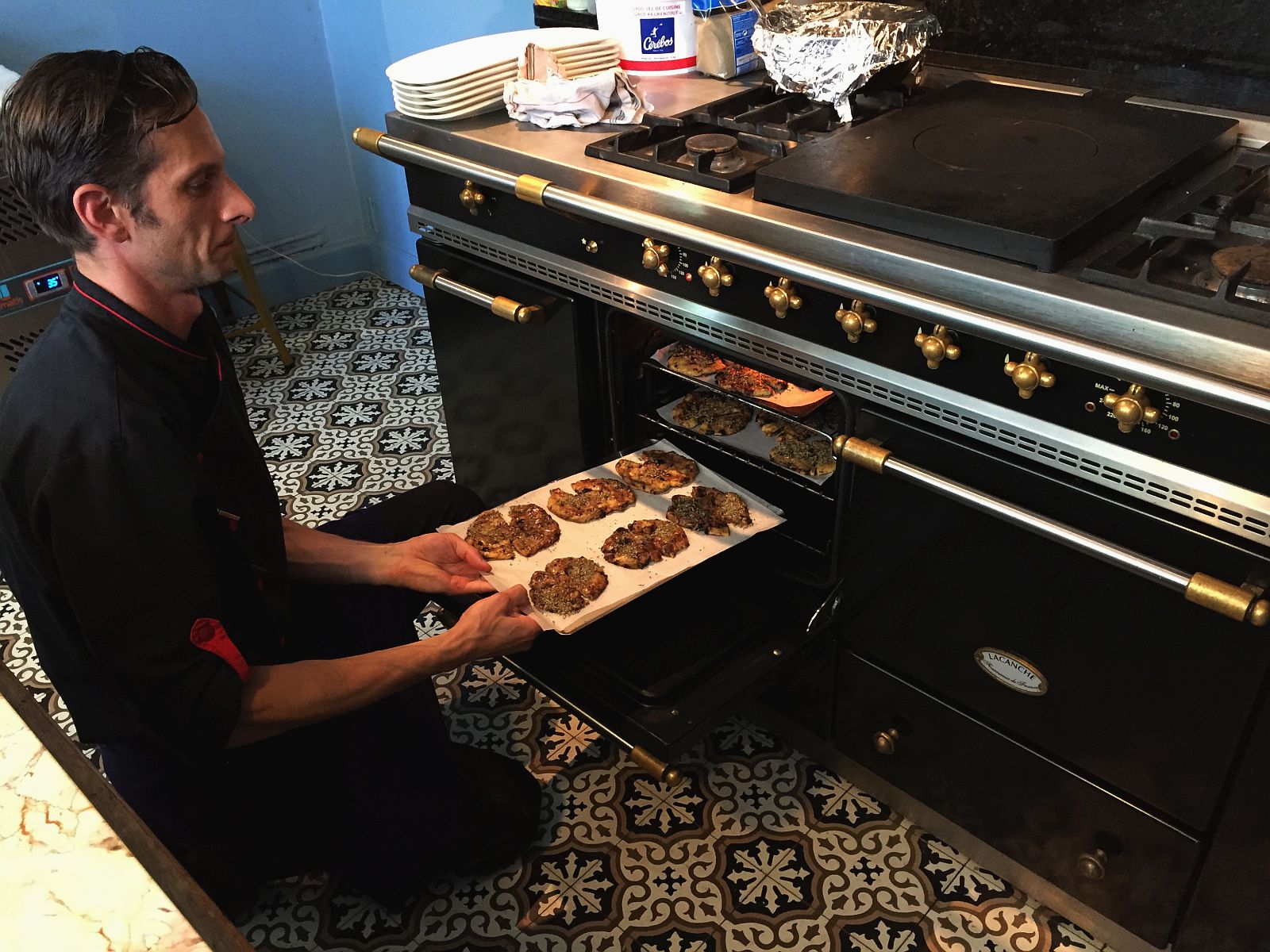
Our small group consisted of two women whose husbands were back at the boat (they were part of the nap camp), and a couple from New Jersey who easily spent in Euros at the macaroon shop what I had allotted as my daily budget. What we were really excited about that afternoon was the fact that we were scheduled to take a cooking class by a local chef at La Maison de Fogasses, a one-time mansion dating back to the 12th Century. The building, owned by Avignon local Corinne Guyon, was recently converted by her into a long-stay artists colony complete with a pétanque court and a popular cafe in its backyard.
After we arrived, we were led out back for a quick glass of wine — we were about to handle cutlery of course — then ushered upstairs to the kitchen of Chef Anthony Rossi who had us in short time kneading dough and brushing liberal amounts of butter on what would be our own prepared batch of the classic pastry Fougasse, complete with traditional Herbes de Provence (a mixture of Rosemary, Thyme and Oregano).
This was followed by a lunch of Fish Provençal (thankfully not prepared by us), wild rice and more wine (notice a pattern here?), all of which I scarfed down in a so-very-not-French way. But I had good reason: I had to make my way back to the quay to catch the bus for the other afternoon excursion: Châteauneuf-du-Pape.
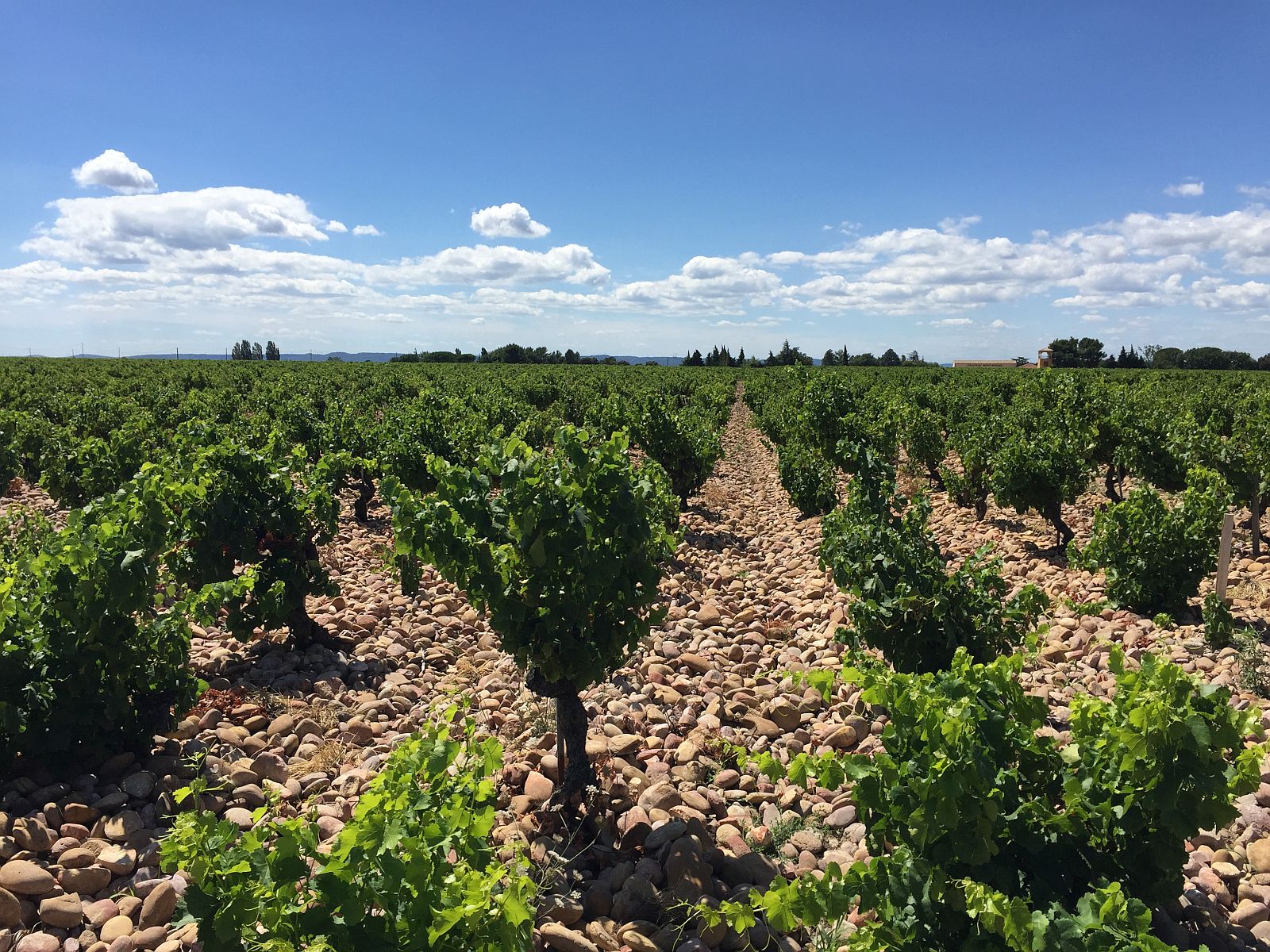
Châteauneuf-du-Pape is famous as home to the medieval castle built as a summer home by Pope John XXII and of course for its wineries. Our bus pulled up to the grounds of the Domaine Bosquet des Papes vineyards, and the unique terrain quickly became apparent. Since this area is essentially an ancient river valley, the short, stubby vines were growing out of a sea of galets roulés, or round rocks, that had once been at the bottom of the river and were now covering the thick clay soil where the roots dig deep in search of water. The rocks are famous for regulating the temperature of the ground — blocking the sun during the day, then slowly releasing it over the night hours — which causes the mostly Grenache, Syrah and Mourvèdre grapes to ripen quicker than normal.
This was followed by a wine tasting and much-needed instruction at the winery Maison Bouachon, where I will forever be remembered as the person at the table who helped ensure his neighbors’ glasses were fully emptied before each new tasting through his own heroic consumption. I think we then saw what appeared to be some sort of medieval festival taking place back in town — I remember people in chain mail wielding swords and lots of cured meat being sold on the street — but this part of the afternoon starts to become fuzzy in my memory (see: wine tasting with groups of age 70+ women).
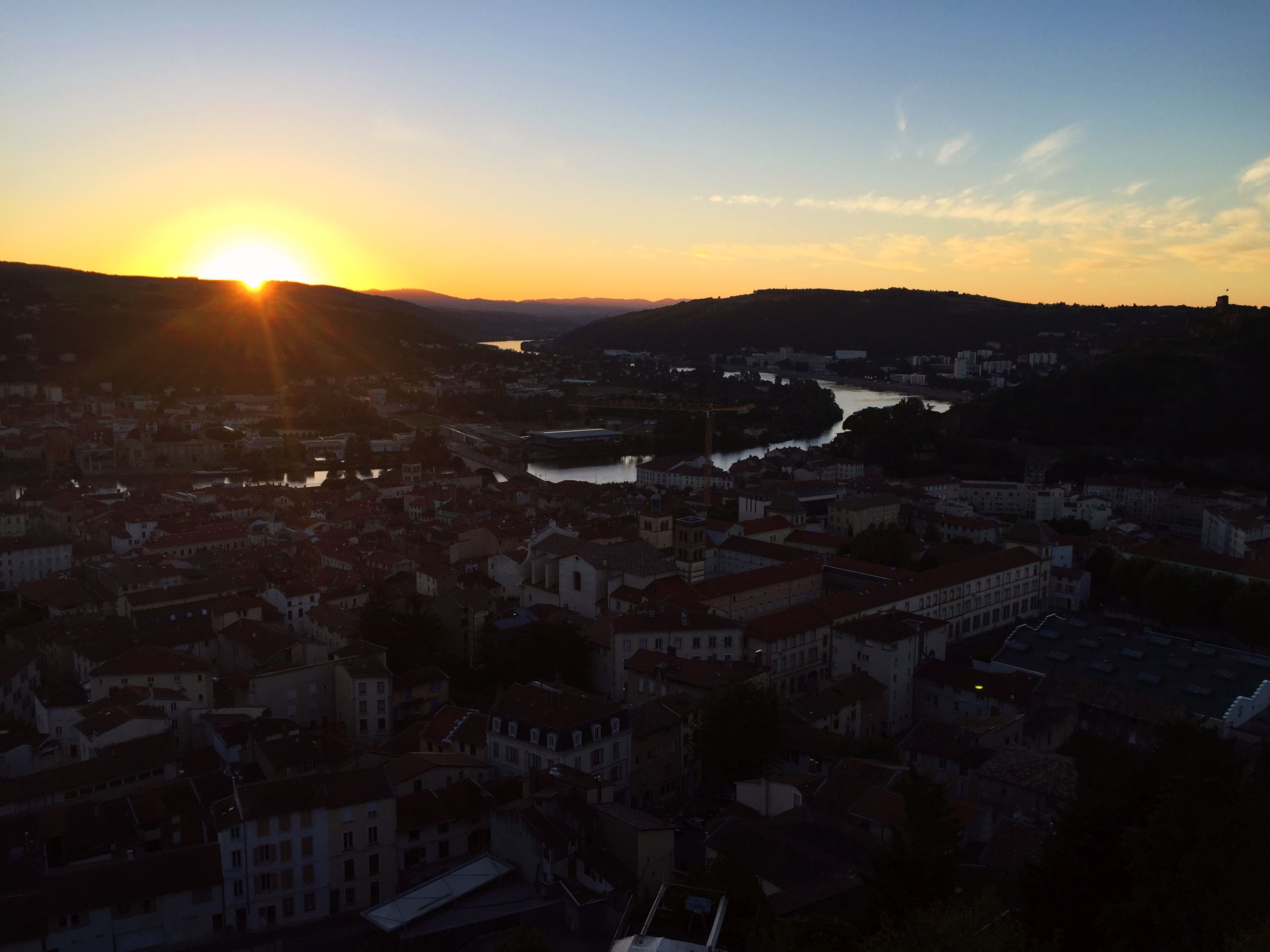
Not to stress this too much, but tours are not exactly my thing. However, the quality of the guides partnered with Viking at each stop were easily the highlight of the trip. Oh to come back to life as a summer tour guide in the South of France — they’re really giving the black bulls a run for their money on my list of humans and/or people I want to come back as in my next life.
Yes, I felt a little goofy carrying around the wireless headsets the guides has us use — this coming from a traveler that perhaps too proudly avoids all variations of guided tours — but the number of facts, enthusiasm in which to share those facts, and the patience to repeat said facts to each person who suddenly was having trouble operating the headset (this seemed to happen to a member of the group about every 10 minutes) was an indelible addition to the trip.
This perhaps was best exemplified by our guide at Vienne. Once a major Roman colony founded by Julius Caesar in 47 B.C., this small city about 20 miles south of Lyon is home to some of the best preserved relics and sights left over from the Roman period. Our first stop was to the Musée gallo-romain de Saint-Romain-en-Gal, a modern structure situated on the western slope of the Rhône, home to an impressive collection of Roman artifacts, including frescoes that adorned the foyers of large mansions, to kitchenware and furniture that had been buried for over 2,000 years.
Outside the museum is a preserved excavation site that features the foundations of the many mansions that called this river plain home. From our elevated vantage point at the museum, our guide dryly pointed out that a school was supposed to have been built there, but the inconvenience of finding an invaluable archaeological site forced city planners to relocate the new school’s location further up the road.
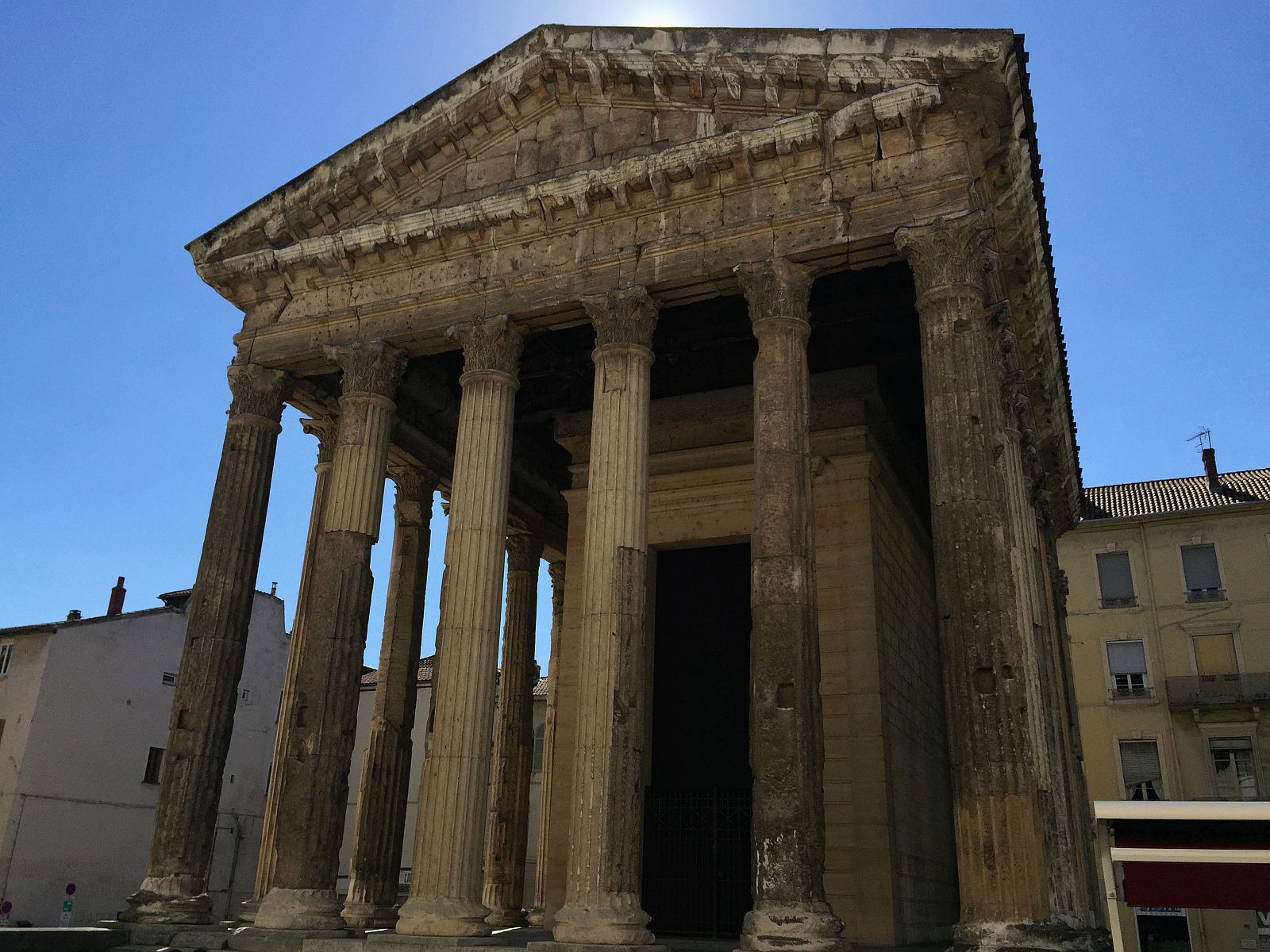
We then traveled into town where the highlight of Vienne is revealed suddenly as you emerge from one of the many narrow streets leading to its center. Here, surrounded by mid-century apartment buildings and a number of cafes dotted across the open plaza, is the Temple of Augustus & Livia. Closely related to its more famous cousin, the Maison Carrée in Nîmes, the Temple is a beautifully preserved temple that dates back to 1st Century and is considered one of the best preserved Roman Temples in the world.
Our guide pointed to many small details about the facade of the temple, including signs it was temporarily converted to a Christian church, thus sparing it from destruction over the years (later, during the French Revolution, it was used for secular purposes, once again thankfully helping it to avoid destruction).
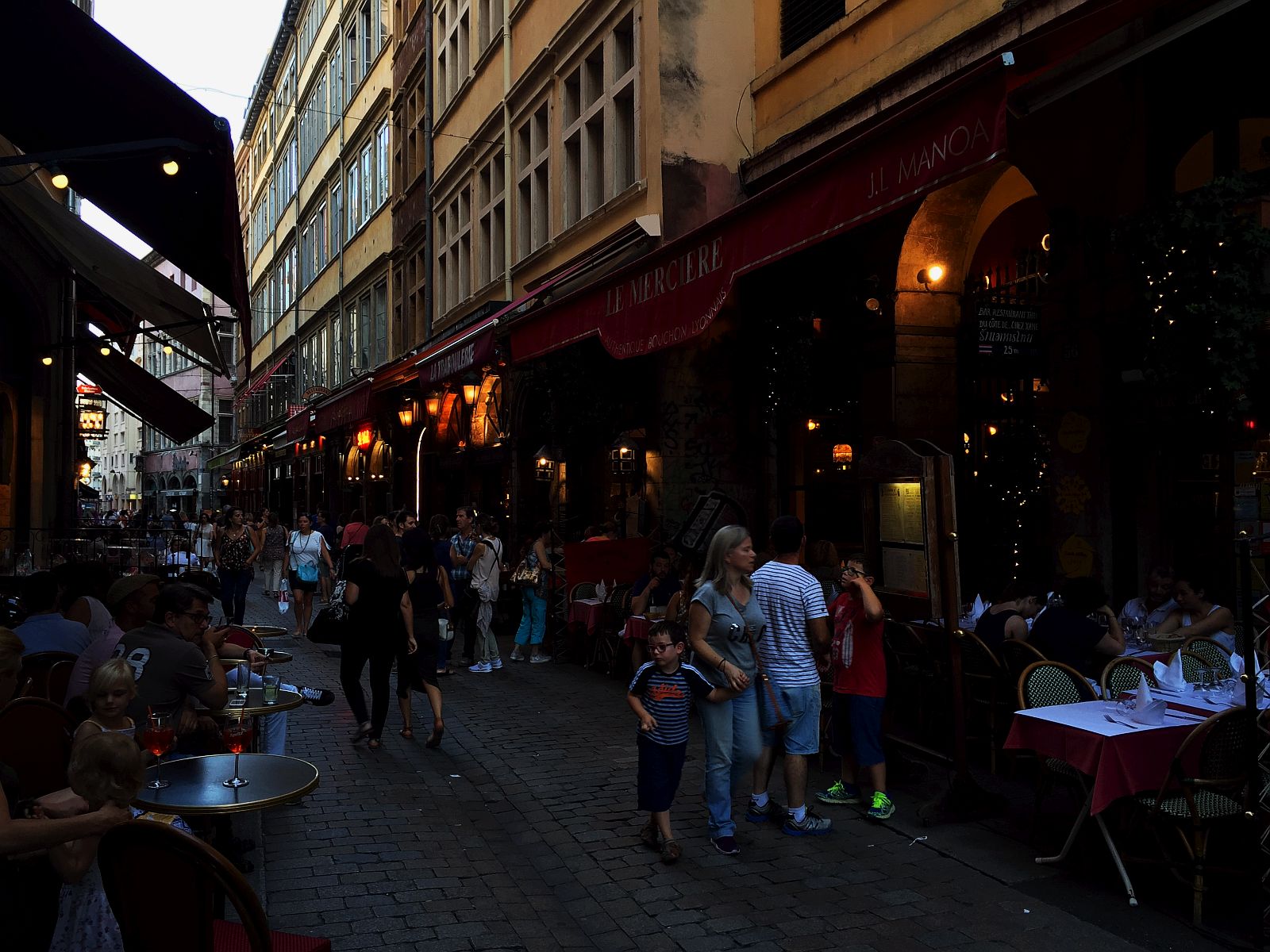
Our last port of call on the trip was Lyon, France’s third-largest city, and the country’s unofficial gastronomical capital (Lyon is the birthplace of famed chef Paul Bocuse). Lyon is also where the Rhône meets the Saône after emerging from high up in the Alpine mountains to the east, then effectively doubling in size and turning south toward the Mediterranean in the center of the city.
We docked next to the University of Lyon, a central spot just south of the ornate Pont de l’Université, which you can cross to get to the 1st and 2nd Arrondissements, then over the Saône and into Vieux Lyon, the district that can date its history back to the Renaissance Era.
Walking along the narrow cobblestone Rue Saint-Jean today, you will mostly see small cafes, English-style pubs, restaurants and few dozen or so ice cream shops catering to the masses of visitors that descend upon the city during the summer months and the city’s large University population. But, if you look hard enough, and you are with the right guides, you can try a few doors along the street and enter into public courtyards surrounded by homes that date back to the 16th Century. You can still see the small fountains where water would be gathered, and you can gaze up at the balconies overlooking the courtyards.
Lyon was also known during the German occupation as the “Capital of the Resistance,” and the many narrow passageways, secret entrance ways and above-ground walkways in the Vieux Lyon were perfect for Resistance fighters to escape capture from their occupiers.
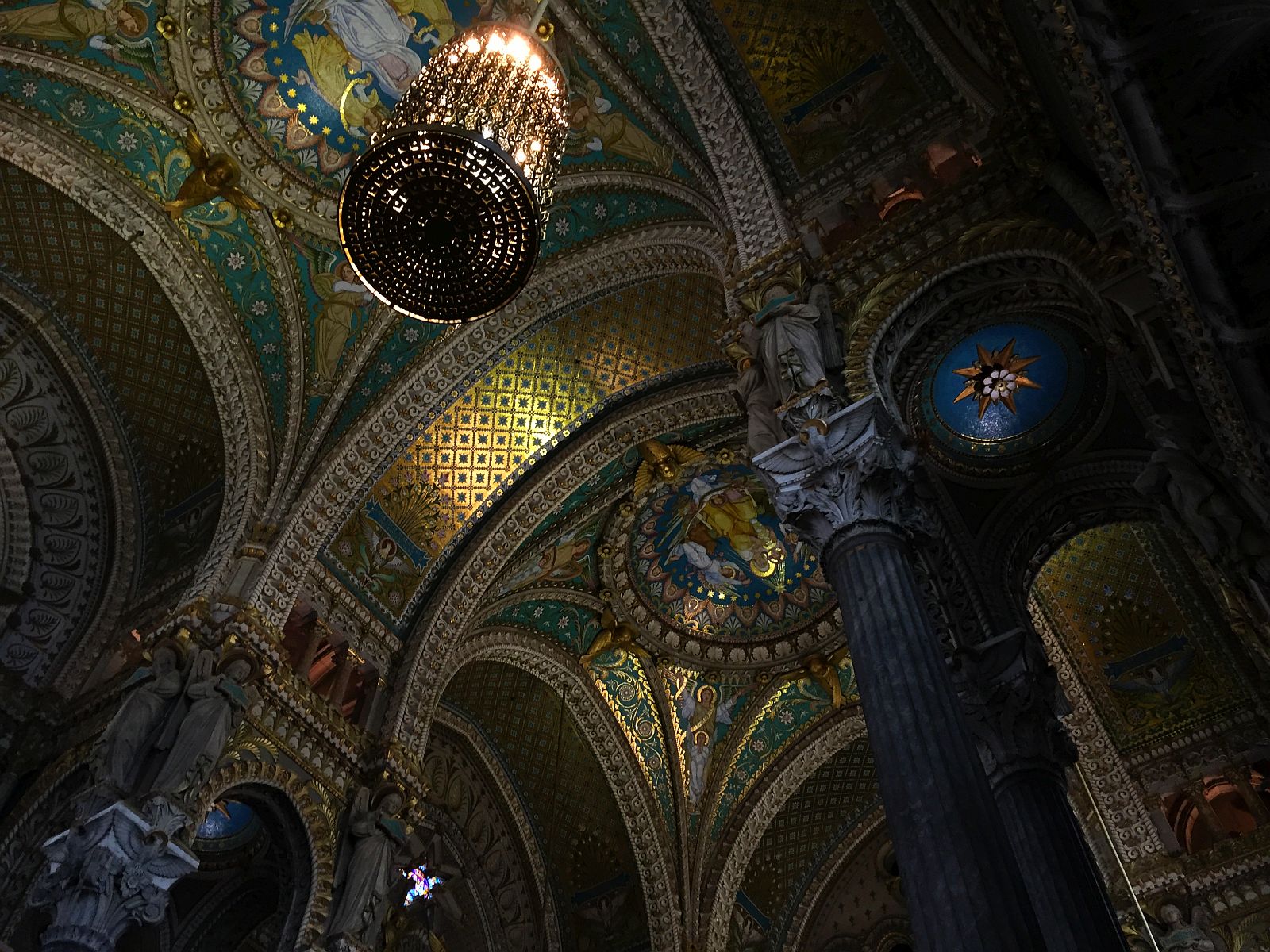
Towering above the district is Fourvière hill, where the city’s most famous basilica, La Basilique Notre Dame de Fourvière, sits above the city and provides the best panoramic views of Lyon.
After a morning of exploring, we set out for the nearby village of Perouges, affectionately known as one of the most beautiful villages in Europe. Located a short 45-minute drive from Lyon, Perouges is a preserved hilltop Medieval village that can date its origin back to the 12th Century.
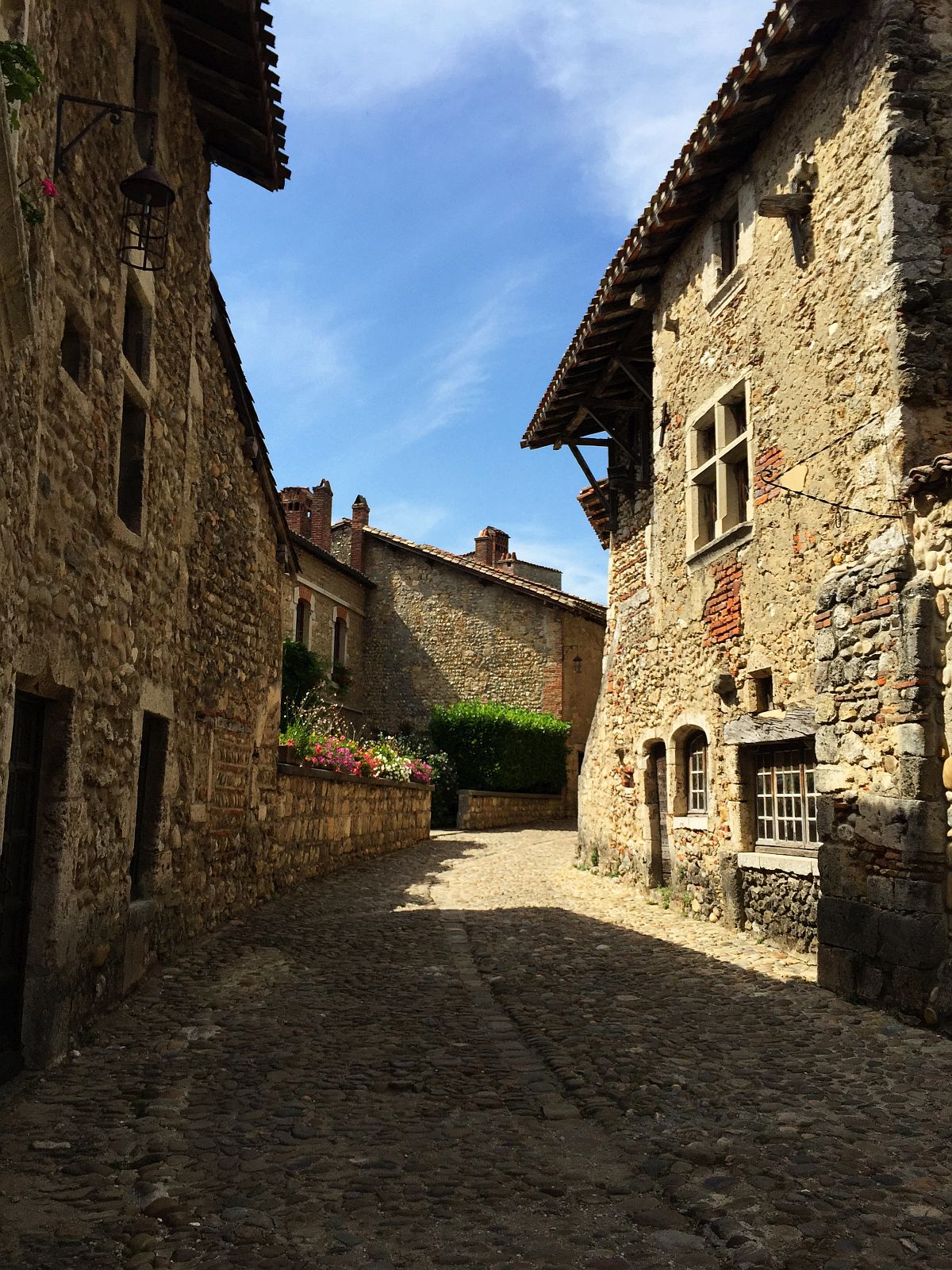
As soon as you walk past the stone walls that had protected the village for centuries, you are transported back into time. The village’s thousand or so inhabitants are required to maintain the stone facades of their homes and shops, and you are free to wander along the circular cobblestones streets, stopping into the many craft shops and restaurants that welcome visitors throughout the year. The image of small Peugots that come slowly rumbling down the street is a jarring contrast to your surroundings, but is a nice reminder of how France has worked hard to balance its history with the needs of contemporary life.
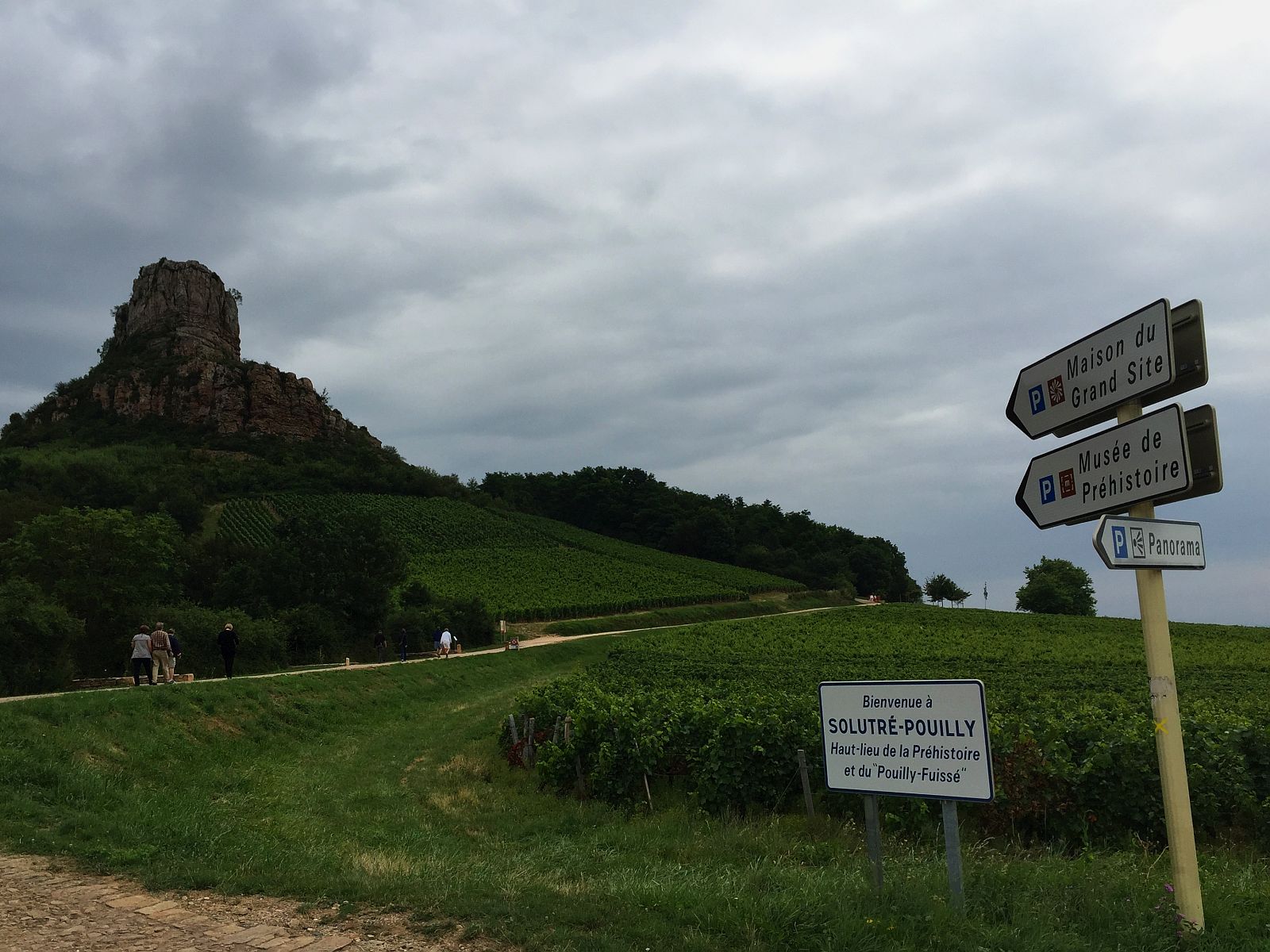
On our final day of the cruise, our last excursion was north to the famed Beaujolais and Burgundy wine regions. As our bus climbed north of the city and along the Saône, we were greeted by miles and miles of Gamay vineyards, a purple-colored grape that produces a light-bodied, fruity wine, and which were destined to make it to some of the world’s most coveted bottles.
The region is filled with countless small village dedicated to the centuries-old history of wine-making, and a drive through the area can easily conjure up images of dropping everything and starting your own winery, a tradition that has been the root of draining more retirement accounts throughout the years than probably any other activity.
Of course, when there’s wine there’s great food, and our final visits of the day were to a local truffle and goat farm. First we pulled up to Le Cos-Piguet, where a spirited and well-trained canine truffle hunter, Chinook, and his owner, Olivier Devevre, greeted us then led us up a gentle hill to a fenced-off orchard where the magic happens.
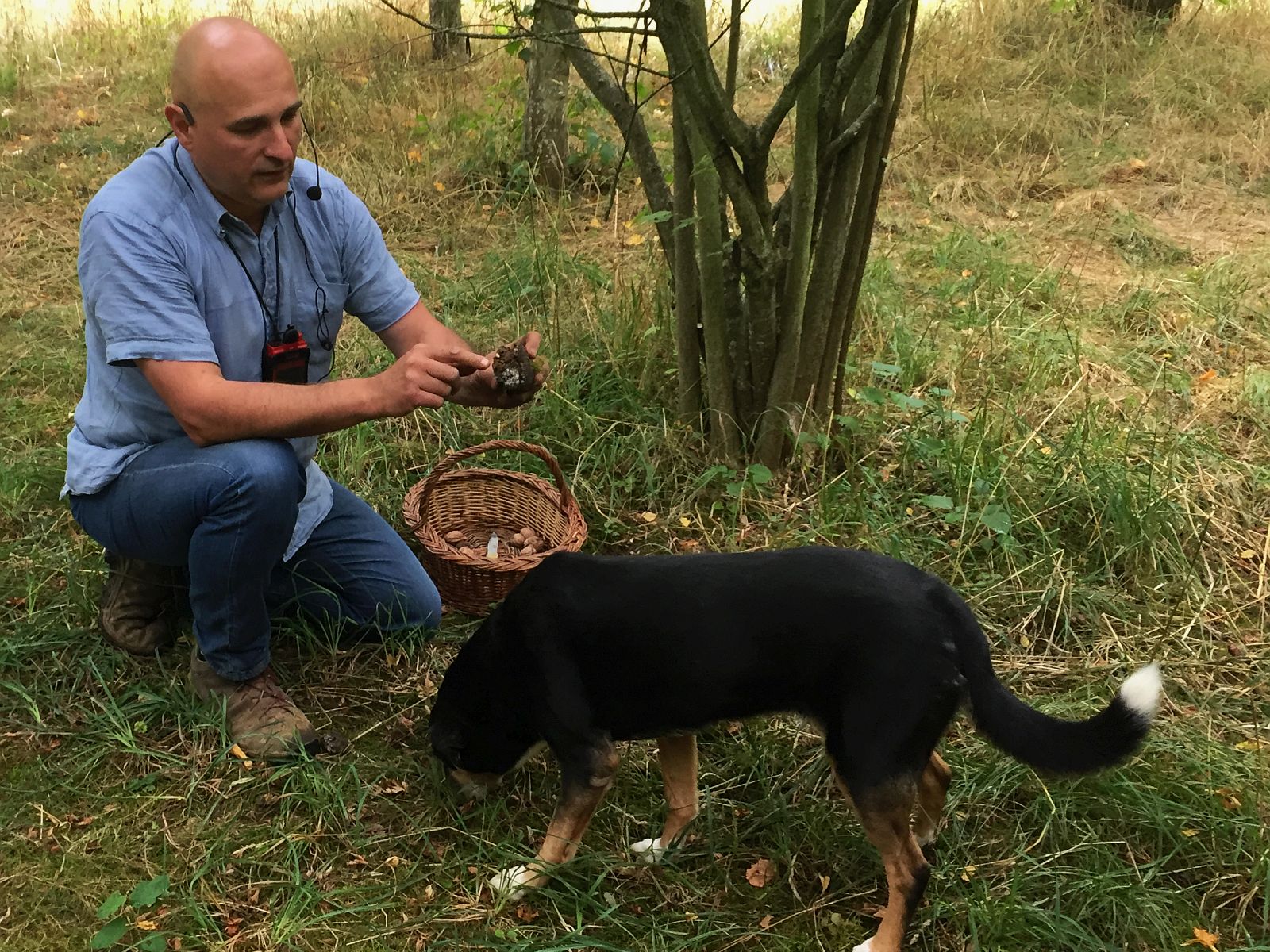
Here a grove of Oak Trees are hosts to truffles that grow in and around the fertile tree’s roots, and are best discovered by the sensitive nose of man’s best friend. Olivier demonstrated us Chinook’s sniffing capabilities by letting him wander around the grounds until he would stop suddenly and began furtively digging for his prize. We were then led inside to their farmhouse to try their homemade truffle-infused butter that we liberally spread on slices of bread.
Finally we traveled to nearby Chevrerie La Trufiere, a goat farm founded by Sylvain Chopin, and which is home to a herd of 150 or so very friendly Alpine goats, a breed known for their ability to produce milk and to make mischief by climbing as high as they can in whatever surroundings they are in at that time (I saw about 5 goats precariously perched on a window sill above the rest of the herd with little indication as to how they made it that high).
After a long visit petting and feeding our new furry friends a mixture of hay and alfalfa, we we were led inside for a tour of their dehumidified refrigeration units where the cheese is aged, and given a taste of the various varieties they create. All of course accompanied by even more wine.
I couldn’t think of a more fitting way to have spent the day. Good food, artisanal cheese, lots and lots of wine, an exploration of traditions that date back generations. Oh to come back one day in a future life as someone who spends their summer days traversing a river through the South of France. Life couldn’t get much better.

/
 Matt Stabile is based in New York City, and is the founder and Editor-in-Chief of The Expeditioner which was founded in 2008. You can read his writings, watch his travel videos or contact him via email at any time at TheExpeditioner.com.
Matt Stabile is based in New York City, and is the founder and Editor-in-Chief of The Expeditioner which was founded in 2008. You can read his writings, watch his travel videos or contact him via email at any time at TheExpeditioner.com.
The post I Took A River Cruise Through The South Of France. Yes, Really. appeared first on The Expeditioner Travel Site.
]]>The post How To Pack A Wet Tent: A Trek Through Torres Del Paine, Chile appeared first on The Expeditioner Travel Site.
]]>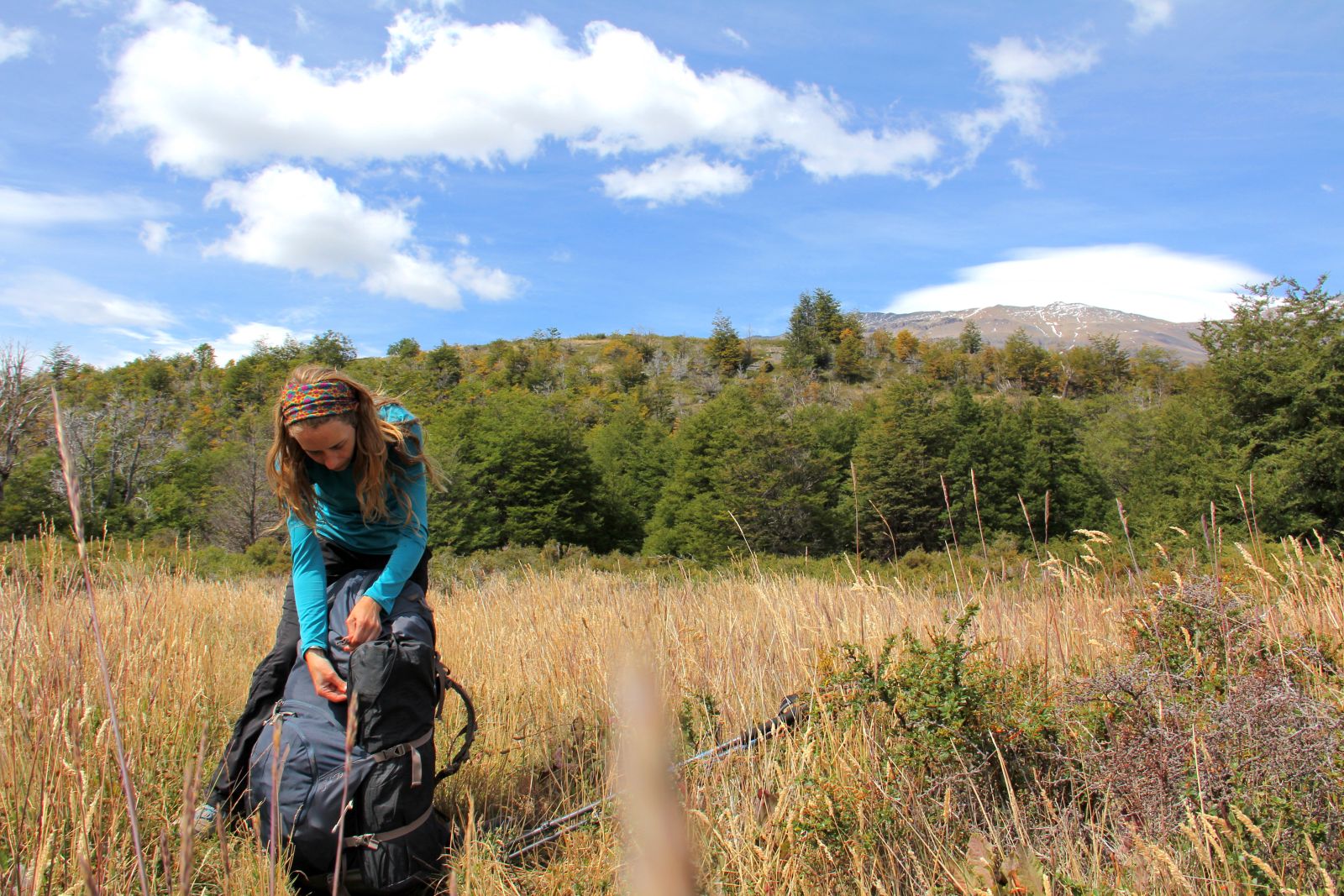
The mountain itself seemed to be hurling millions of tiny frozen pellets from every direction, some even rising up from the ground, all apparently aimed directly at our eyeballs. It was impossible to tell the depth of the snow, as it blasted across some rocks leaving them bare, and piled improbably high where larger rocks prevented its determined chase of the wind.
“You are lucky, this is the first snow of this year!” A park ranger gleefully shouted to us, bouncing by on legs that were much surer of the terrain than mine.
“Lucky?!” was all I managed to respond.
“Yes! We haven’t had snow since December, you’re the first to see it!”
At this point my boyfriend and I were halfway up Paso John Gardner, the highest point on the famous Paine Circuit, a backpacking route around Torres Del Paine National Park in Patagonia. The route forms a 75-mile loop around the sharp peaks and vertical towers of the mountains clustered in the center.
The park beckons hundreds of travelers to visit each day during high season (December through March), with more piling in each year. The insanely high popularity of the park necessitates strict rules for the hikers: no wandering off the single-marked trail, no camping outside designated tent sites, no walking on the trail at night. A trek through Torres Del Paine is not exactly a lonely wilderness quest, but nor is it approaching the sterile entertainment of a crowded Disney theme park, as some people claim.
The trek certainly lacks the creature comforts of a Disney Resort. The moment I woke up on the morning we planned to hike the pass, I regretted it. Before I opened my eyes, I heard weary drops of rain slapping the tent, the remnants of the assault of the previous night’s storm. I kept my eyes shut, trying to convince myself the sound was fading. “It will stop in a few minutes, I should stay in my sleeping bag for now,” I thought.
It didn’t stop.
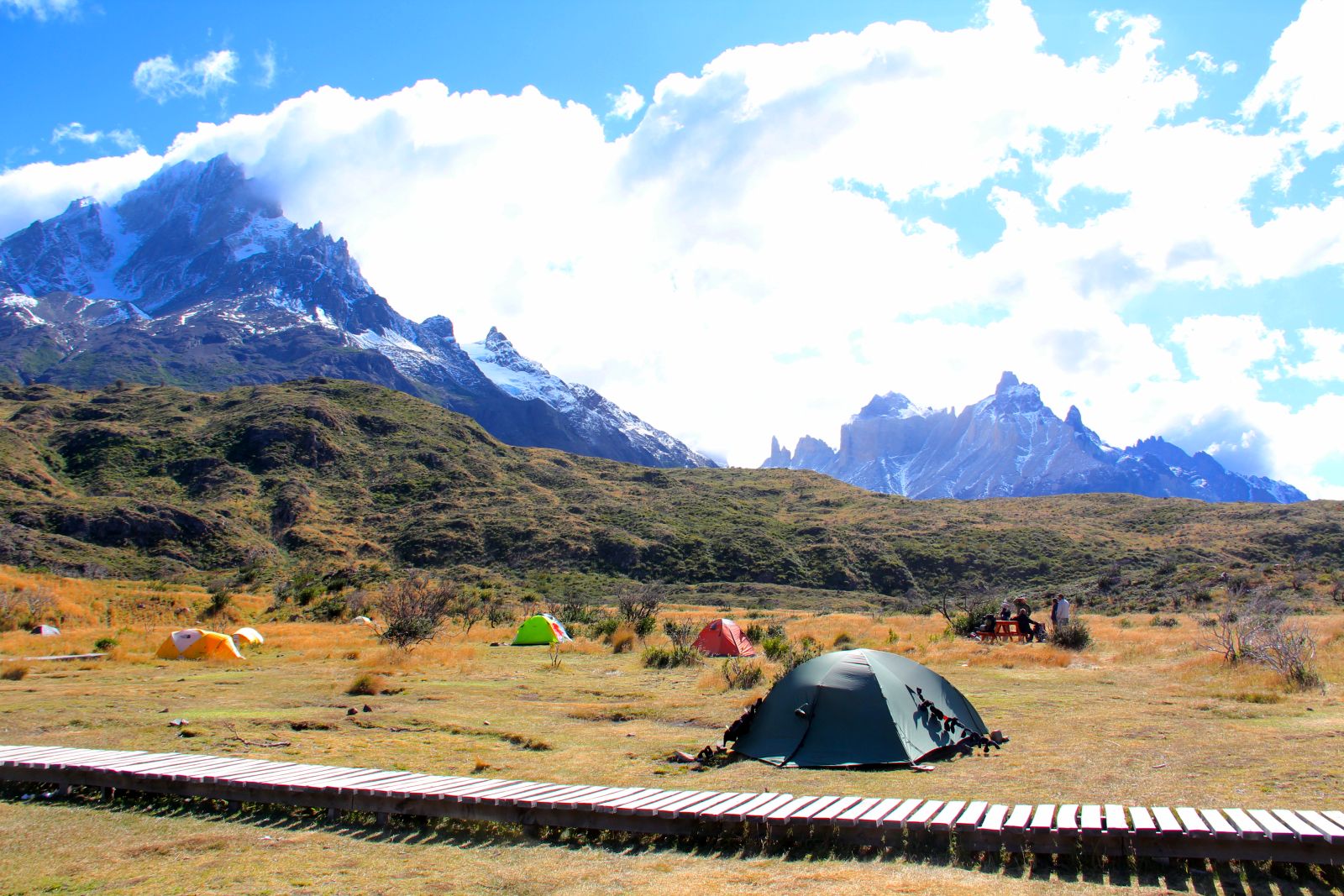
The necessity of getting an early start on the pass, however, eventually dragged me out of the relative comfort of the nylon walls. It’s not that I didn’t want to be outside in the rain. I can deal with putting on my rain jacket and shivering a bit in the sharp morning air. It’s that I was poignantly aware of the excruciating task that sat in front of us, like an unavoidable pile of dog shit in the streets of Santiago: packing the wet tent.
We knew we would probably face this challenge at some point on our nine-day trek. Patagonian weather is notoriously moody, and the rangers even posted a sign at one campsite that reads: “Don’t ask us about the weather, it’s Patagonia!” In a single day, a hiker can seemingly experience all four seasons as the weather turns from sunny and warm to windy and rainy to snowy and cold.
During this particular morning, a drop in temperature caused fat, wet snowflakes to begin interspersing themselves among the tired raindrops by the time we finished breakfast. The only task left was to pack the tent. Mud had made its way into every crevice, and by the time we’d wrestled the clogged buckles apart and peeled off the sopping rainfly (that part of the tent meant to deflect rain) our hands were already stiff with cold. Each time the tent fabric brushed against my hands, it felt like sandpaper was being rubbed against the raw skin. My boyfriend and I did our best to stay patient as we folded the rainfly.
“Fold it in half. No, the other way.”
“I thought we wanted to fold it in on itself?”
“That’s what I’m doing!”
“Give me that corner. No, not like that.”
“It won’t fit like this though.”
After a tense minute, the rainfly was piled into a vaguely rectangular shape on the ground. Next were the stakes and poles, which were apparently cemented into their clips by a combination of mud and gravel. Once we finally coaxed them out and the poles were collapsed, it was time to roll up the tent with the rainfly.
The ground was too wet to kneel as I normally would, so I squatted like a frog and laboriously scooted forward as I rolled the fabric as best as I could with hands that refused to bend. Tears of pain and frustration blurred my vision as I lifted the roll of soaking nylon and my boyfriend shoved it, inch by inch, into the bag, forcing it to fit so we wouldn’t have to refold it. Finally, he cinched it shut and we were done. Despite the steep climb that lay ahead of us, we knew the hardest part of our day was over.
We pulled our packs on, tightened a strap here and a strap there, and started our hike. Energy came back to our spirits with the warmth of our blood flow as we walked up the trail. Soon after beginning our ascent of the pass, though, I developed an appreciation for the fierce Patagonian wind about which we’d been warned.
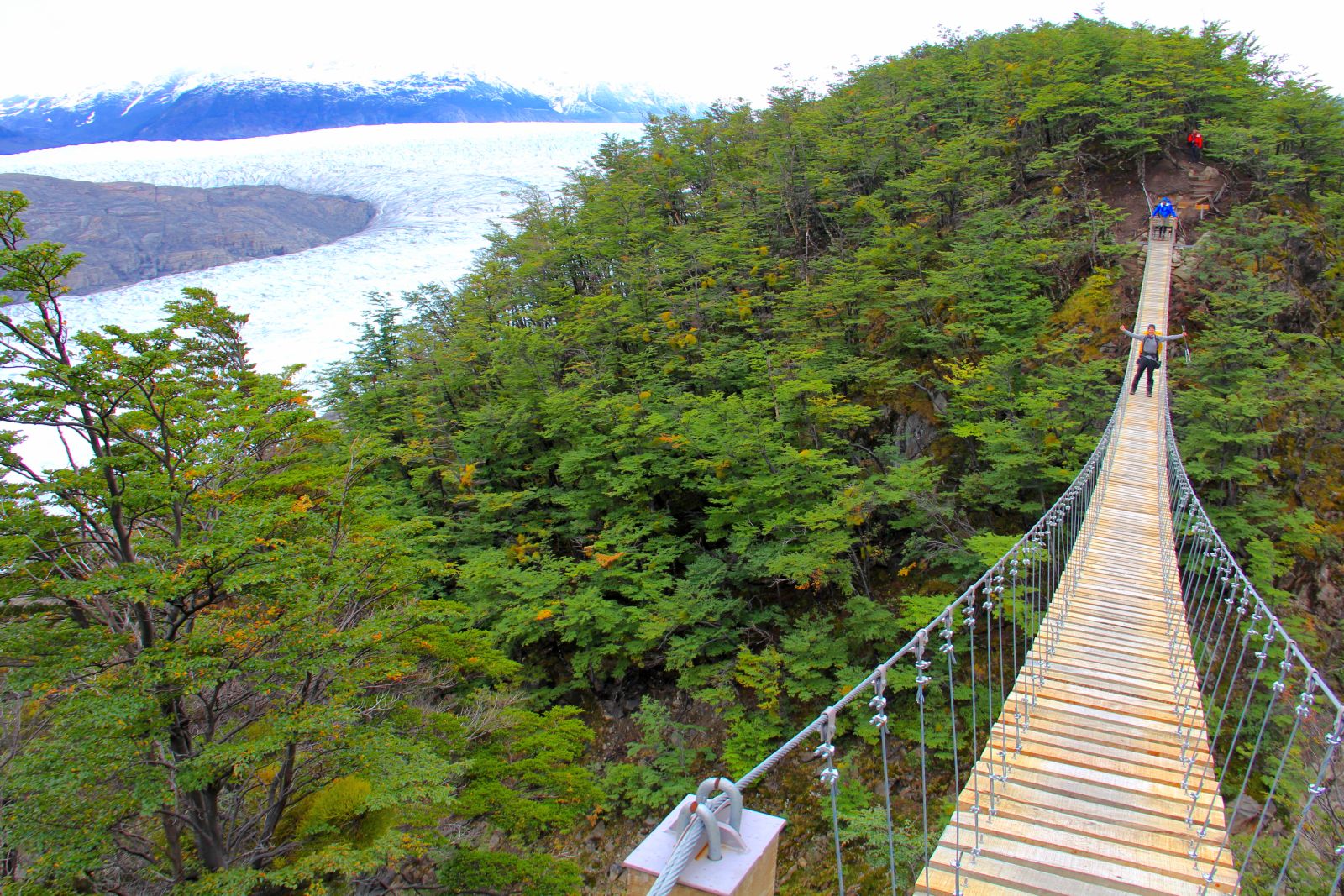
It’s not that the wind was relentless, but rather mischievous. One moment the mountain was completely still and a steady layer of snow fell from above, and within half a step a transparent force threatened to knock me to the ground (succeeding only once), while the falling pellets transformed into a swirling swarm of angry hornets. Ten or twenty steps later, it softened and remained quiet once again, coiling as a jack-in-the-box for its next powerful gust. My 40-pound backpack helped anchor me to the ground, but also acted as a giant sail pulling me backwards down the mountain with each push of the wind.
One step at a time, I defied both wind and gravity, shuffling up the mountainside at an embarrassingly slow pace. Half of my weight was entrusted entirely to my trekking poles as I leaned heavily into them, anticipating the next gust of wind. The rain and snow mix soon transformed completely into snow as we gained elevation. Partially frozen streams crisscrossed our route, and I prayed for no wind each time I precariously balanced myself atop the small stepping stones to avoid the freezing water.
It took four hours of careful trudging to reach the top. We stopped just a few times to admire the surroundings: the valley behind us that faded in and out of view with the clouds that passed over it, the needle-sharp ridges on each side that were too steep even for snow to stick, the thick glacier sitting just a few hundred feet to our right. All this was nothing compared to the view awaiting us on the other side.
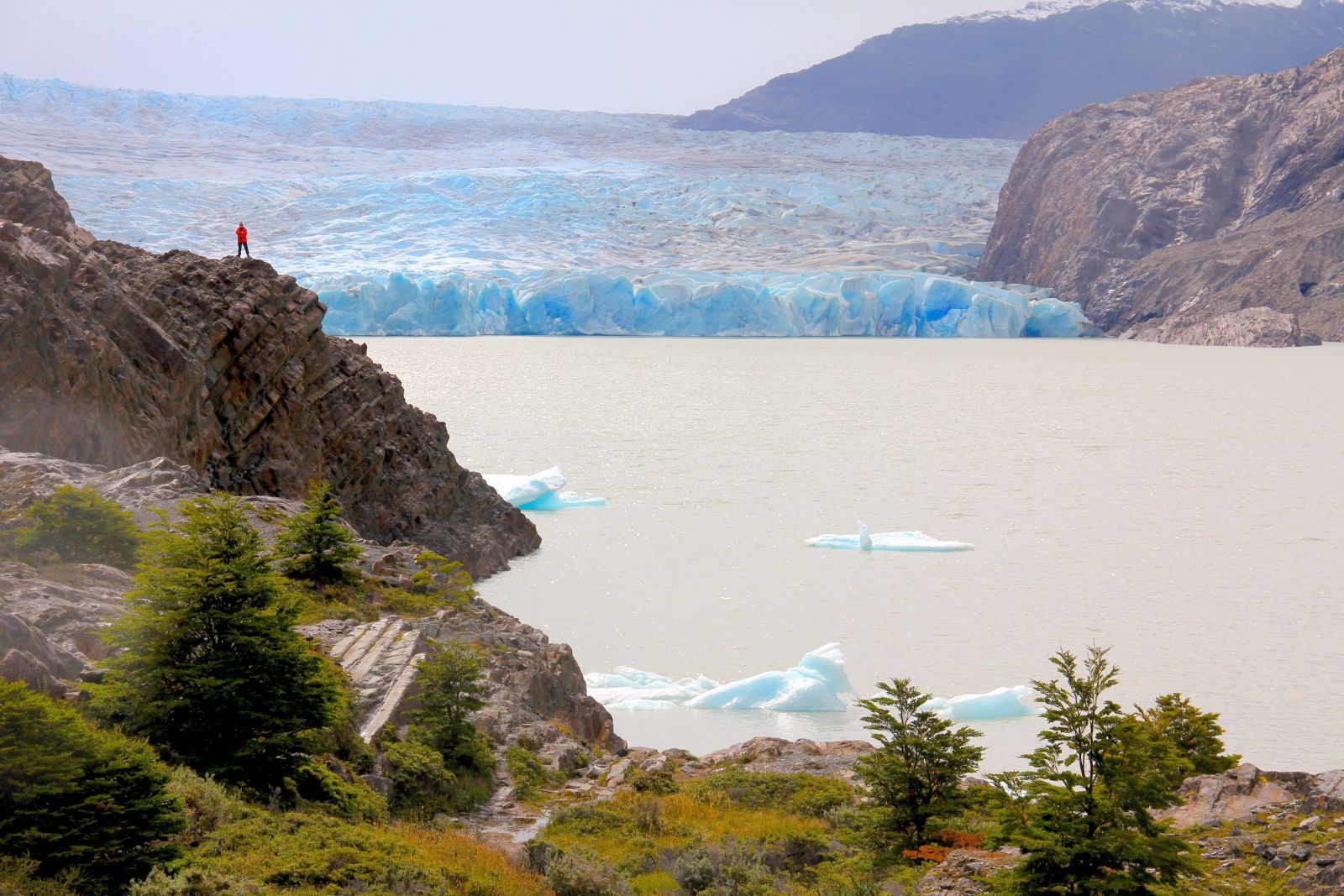
Looking at Glacier Grey from the top of the pass felt like we were in the presence of eternity. The silent glacier rested in the valley beneath us, with ice stretching back through the valley and piling up the mountainsides, eventually melting into the flat white of the February clouds. It looked like a pencil drawing, a scene in black and white. Except for the blue. That weird blue that only exists in layers of snow and ice. Like a cross between turquoise and electric blue, but with a hint of indigo and a neon glow. The blue showed up where crevasses in the surface of the glacier allowed us a glimpse into its depths.
It was hard to believe that this seemingly infinite glacier was just one small bit of the massive Southern Patagonian Ice Field. At 104 square miles, Glacier Grey forms less than three percent of the 4,773-square-mile sheet of ice stretching across southern Chile and Argentina. The ice field represents the remnant of an even bigger ice sheet from the last glacial period, and now feeds dozens of glaciers across the continent. These glaciers are still carving the landscape of the region, scouring valleys and moving mountains with their incredible force.
The mountain didn’t allow us to enjoy the view of Glacier Grey for too long, forcing us to keep moving to escape the barrage of wind and snow. And so we descended, down the steep and muddy trail into the camp. Down beneath the snow, into clouds and rain and five more mornings of wrestling the tent into its bag at various levels of saturation, and into the more crowded section of the circuit trail, where we were soon to squelch ourselves into over-packed cooking shelters and swap trail stories with dozens of other trekkers.
And of course, we trekked down under the watchful gaze of the mountain, who stands sentry over this section of Patagonia as countless hikers scramble circles around her formidable base. I believe it is something about the juxtaposition of unique beauty and exhaustingly dark conditions that draws these hikers to submit to the shifting weather and experience the awe-inspiring bit of nature that is Torres Del Paine.

 Laura works as a civil engineer to afford her true passions: backpacking, mountain biking, traveling, and writing. At the moment, she lives near Denver, Colorado, where she spends her free time playing in the Rocky Mountains and writing stories to share her adventures with others.
Laura works as a civil engineer to afford her true passions: backpacking, mountain biking, traveling, and writing. At the moment, she lives near Denver, Colorado, where she spends her free time playing in the Rocky Mountains and writing stories to share her adventures with others.
The post How To Pack A Wet Tent: A Trek Through Torres Del Paine, Chile appeared first on The Expeditioner Travel Site.
]]>The post Why I Brought My Baby to Egypt appeared first on The Expeditioner Travel Site.
]]>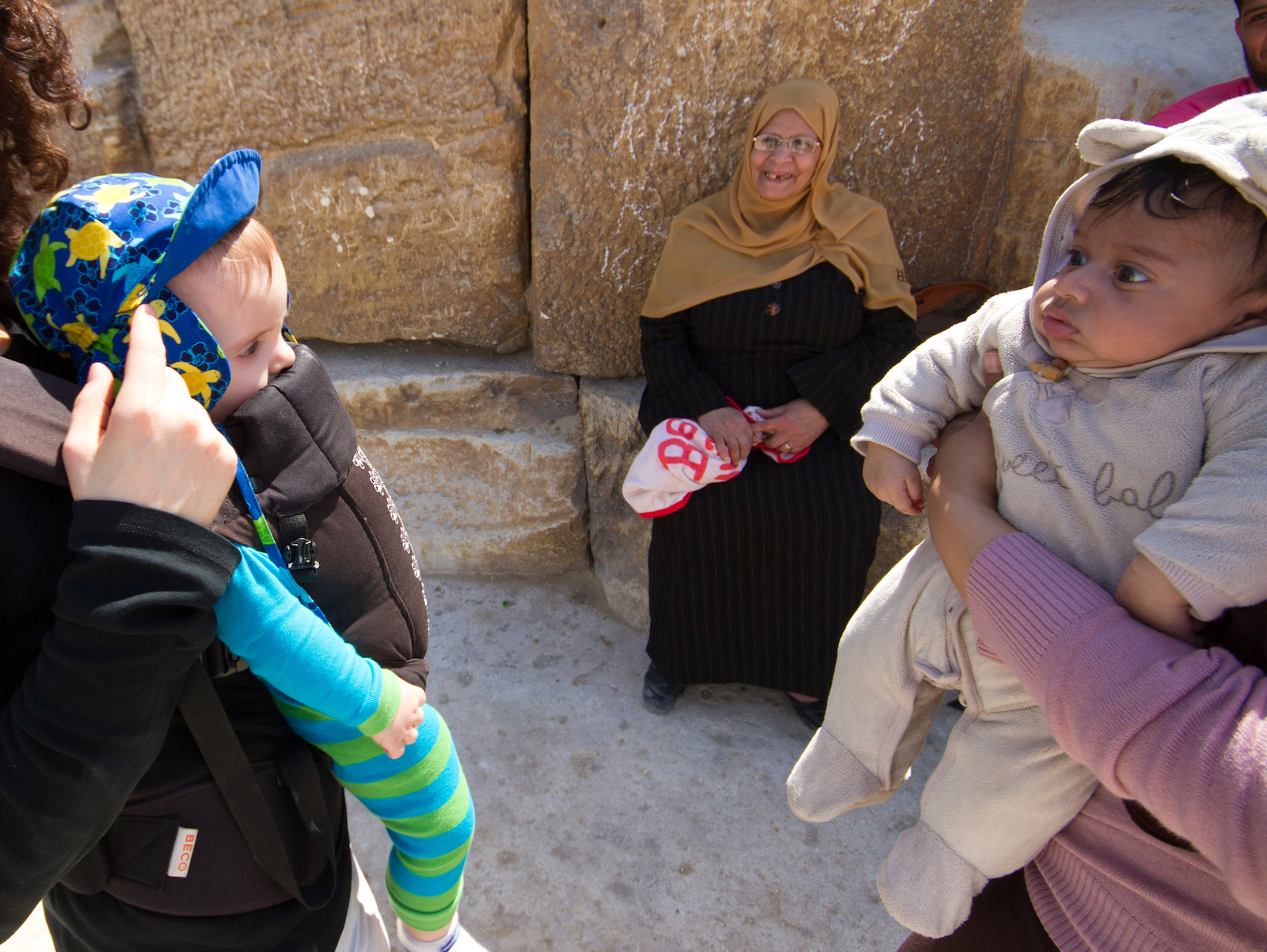
Shortly after 3 a.m., I was asleep on an overnight train from Cairo — until I wasn’t. Until my 10-month-old son started thrashing in my arms and convulsing. Until my husband stumbled down from the top bunk to help, until he flipped on the light in the tiny compartment, until he crashed against the bottom bunk, his head narrowly missing the metal ladder.
Our baby’s eyes were swollen shut with creamy yellow pus. It looked like the foam people use to prevent rats from getting into their house and smelled like something rats would probably gobble right up. His screams ricocheted off the windows, blocking out the sounds of the train blasting along on its way to Luxor. The noise did not, however, mask the whomp my husband’s body made as he thudded to the floor. I didn’t hear Garrett’s eyes roll up into his head, but roll up they did.
I had a sick baby, an unconscious husband and one thundering question: Had everyone been right?
*
When Garrett and I told people about our plans to take our baby son to Egypt, reactions ranged from the gently judgmental (“Hmmm . . . that’s different”) to the downright hostile (“Are you crazy? What about the terrorists?”). My mom said she’d join us — and pack a gun. My dad didn’t speak to me for two weeks.
We could thank the media’s typical portrayal of Egypt as one tweet away from crumbling into anarchy for these attitudes. As is the case with most of the Middle East and North Africa, it’s rare to see positive coverage, let alone coverage that makes you want to hop on a plane with your kid.
Unfortunately, much of the media’s coverage reflects a violent reality. In recent months, militants had begun targeting various areas, including tourist sites, as part of an increasingly coordinated campaign against the government. On balance, the country is more dangerous than, say, Canada or Bermuda. So why go? And why bring a baby?
Garrett and I will travel just about anywhere because we believe just about everywhere is worth visiting. We got married in West Africa, had The Talk about getting pregnant after a long hiking trip in Nicaragua and tried to conceive on a train from Moscow to Ulaanbaatar. (It was February in Siberia and there wasn’t much else to do.) I felt the baby kick for the first time, one perfect bubble rising up from my middle, during a concert in Prague. Traveling is part of who are as a couple and who we plan to be as a family.
Baby was 12 weeks old when we took him to get his passport. In the photo he looks like a sad sack of potatoes no one wants to buy at the grocery store, his head lolling to one side, his features a conglomeration of puffiness. In short, he looks like most everyone does in passport photos, only smaller.
We picked Egypt the way we’d picked so many destinations over the years: we got a good deal on flights. The guidebooks said that Egyptians like kids, but what guidebook in the history of the world doesn’t say the same?
Besides, Egypt is one of the oldest continuous civilizations in the world, and you don’t last that long without knowing a thing or two about taking care of offspring. We wanted to see our little baby crawl in the shadow of the Pyramids which were old even when Cleopatra went to visit them. A wee, new life juxtaposed against evidence of an almost unfathomably ancient one felt worth the price of airfare.
At Baby’s age, going from the living room to the kitchen constitutes a life-changing trip. Obviously we knew that he’d remember nothing about Egypt. Indeed, given the choice as well as the ability to make the choice, he might prefer to stay at home. We went anyway, because we didn’t want to wait until some mythical point in the future when he’s “old enough” to start seeing the world.
No one in Egypt questioned the wisdom or sanity of bringing our baby to a place still reeling from revolution. No one wondered why we’d take him to a country where tanks stand in the capital’s main square and suicide bombers have roamed the roads, necessitating that visitors travel in armed caravans in some areas. Instead, people wanted to know what kinds of diapers we used and whether we were satisfied with his crib. They wanted to know if I was breastfeeding him and how we brushed his teeth. We were asked more than once whether his Cheerios were iron-fortified.
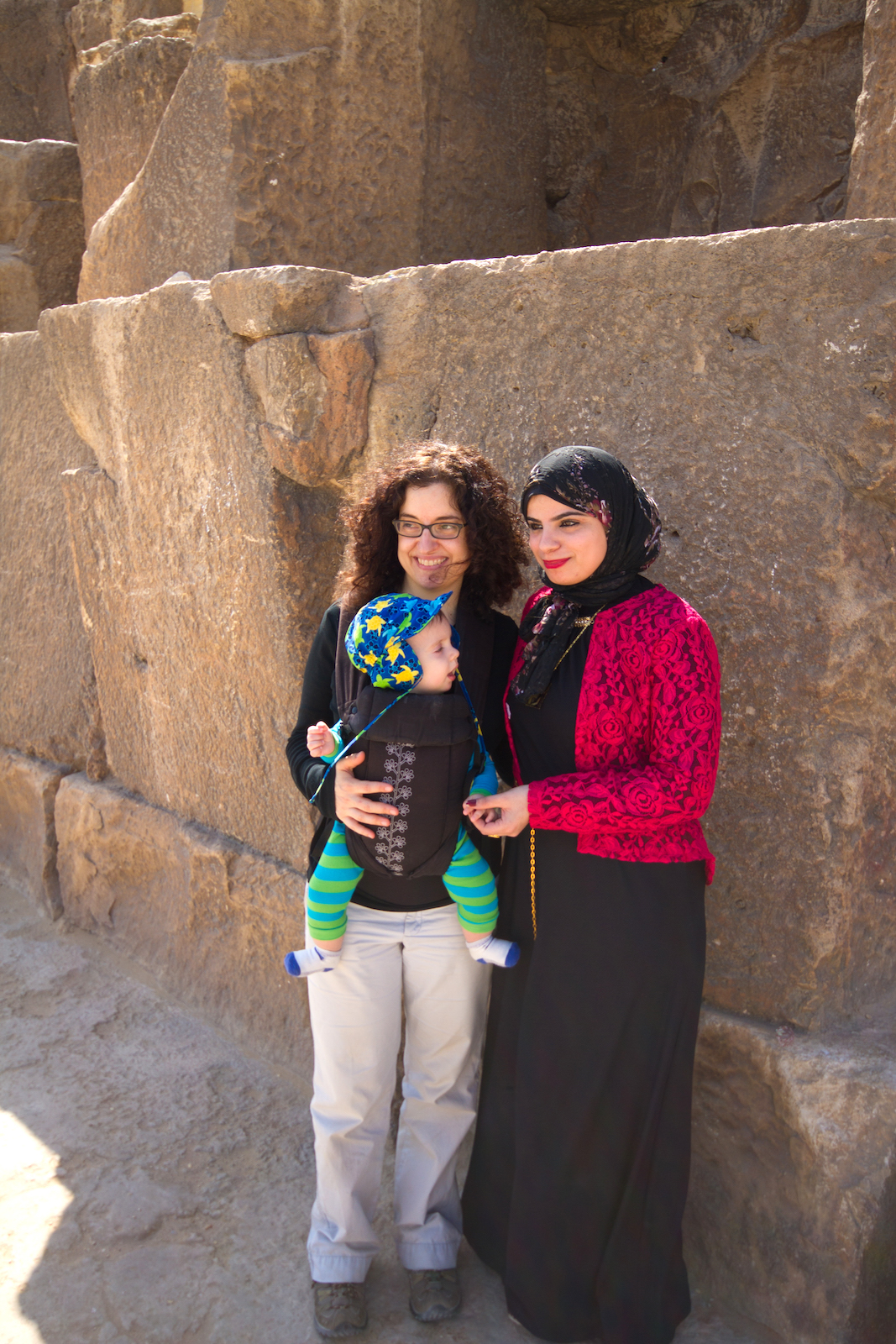
Nevertheless, shaking the concerns of our loved ones proved hard. When a young woman in a hijab slung her arm around me in the shadow of the Sphinx, I assumed I was about to be pickpocketed. As she fumbled about my waist, I calculated how many Egyptian pounds I had and tried to remember where we’d stashed our passports. All she wanted, though, was a picture of herself posing with the baby and me, but she couldn’t figure out where to put her hand amongst the straps and snaps of his carrier.
The three of us had some adjusting to do, for sure. The first time a person hissed at my fair-haired, blue-eyed baby, I jumped about a foot. Ditto when someone snapped their fingers in his little face. My hand rose to shield him, while a lie — “We’re not American! We’re Canadian! Caah-nay-di-aaaaaaan!” — rose to my lips. I jerked less the second, third, fourth, twenty-eighth time. As it turns out, hissing and snapping at babies in Egypt are akin to coochie-coochie-coo-ing and stroking babies under the chin in the United States: It’s what you do to show affection and maybe induce the giggles.
Everywhere my husband and I went, our son was kissed, blessed, fawned over, caressed, hissed at, snapped at and cuddled. Teenage girls swarmed us to get a closer look. Old women stroked his cheek and pinched his feet. Hardened dock workers dropped their cigarettes to press coins into our palms for luck. We were often complimented on the masculinity of his name, Wolf.
People drew out the “l” so that it became “Wollllllllllllllllllllllllf.” The baby accepted the attention with ease, and never once cried or fidgeted when strangers approached. The only thing Wollllllllllllllllllllllllf didn’t like during the entire 10-day trip was falafel.
*
That night on the train, I balanced the baby against my body with one hand and soothed my husband awake with the other. I managed to maneuver Garrett back into his bunk before scraping the crud off every single one of Wolf’s eyelashes, using tissues, bottled water and an entire bottle of Purell.
He opened his eyes long enough to seek out mine for a single second, then blinked back to sleep. The next day we went to a pharmacy, where a nice man named Ans translated English to Arabic and helped us get eye drops to combat the dust and dirt that were causing the infection. At home in New York a few weeks later, our pediatrician said she would have recommended the very same medicine.
I am not easy in the world, but I want my son to be. I want him to be imaginative and inquisitive, comfortable in cities and in the country and enthusiastic about all kinds of adventures and interactions. Going places — from hiking in nearby New Jersey to visiting friends in Los Angeles to traipsing around Egypt — will help him develop those characteristics, and traveling will teach him the sometimes subtle difference between being cautious and being afraid.
At a late lunch a day or so before leaving Egypt, Garrett and I tried to trade off childcare as we slurped soup and dipped pita into hummus. The manager of the restaurant rushed over, arms outstretched, offering to watch Wolf since the restaurant didn’t have a highchair.
He picked the baby up and wandered off. As the minutes went by, Garrett and I looked at each other, wondering which of us should go find our son. No matter what kind of parents (and travelers) we’re striving to be, someone we didn’t know had, after all, taken our kid somewhere we couldn’t see. Just as Garrett stood up, the manager came back, followed by a cook, a waiter, another cook, and two dishwashers — pretty much the entire kitchen staff. Every single one of them wanted to get a picture holding the baby “to put on Facebook.”
We put our photos (of the baby taking a cruise down the Nile, of him trying to pet a stone cat, of the three of us beaming in front of incredible temple after incredible temple) on Facebook too. We got some likes and a fair amount of glad-you’re-back-safe-and-sounds. A few people asked where we’re headed next. Amsterdam, we typed back. Copenhagen. Then to Florida to see family. After that, who knows?
My favorite comment came from my mother-in-law. “I can’t believe my little grandson has a passport and I don’t,” she said.
So she got one. Now, at age 67, she’s planning her first trip to Europe.

 Jessica Allen has written about street art for Mental Floss, Harlem for The Boston Globe, books for The Washington Post, baby personalities for McSweeney’s, and what to eat on the Trans-Siberian Railway for Serious Eats. She lives in New York with her family.
Jessica Allen has written about street art for Mental Floss, Harlem for The Boston Globe, books for The Washington Post, baby personalities for McSweeney’s, and what to eat on the Trans-Siberian Railway for Serious Eats. She lives in New York with her family.
The post Why I Brought My Baby to Egypt appeared first on The Expeditioner Travel Site.
]]>The post Tokyo Travel For The Food And Culture Obsessed appeared first on The Expeditioner Travel Site.
]]>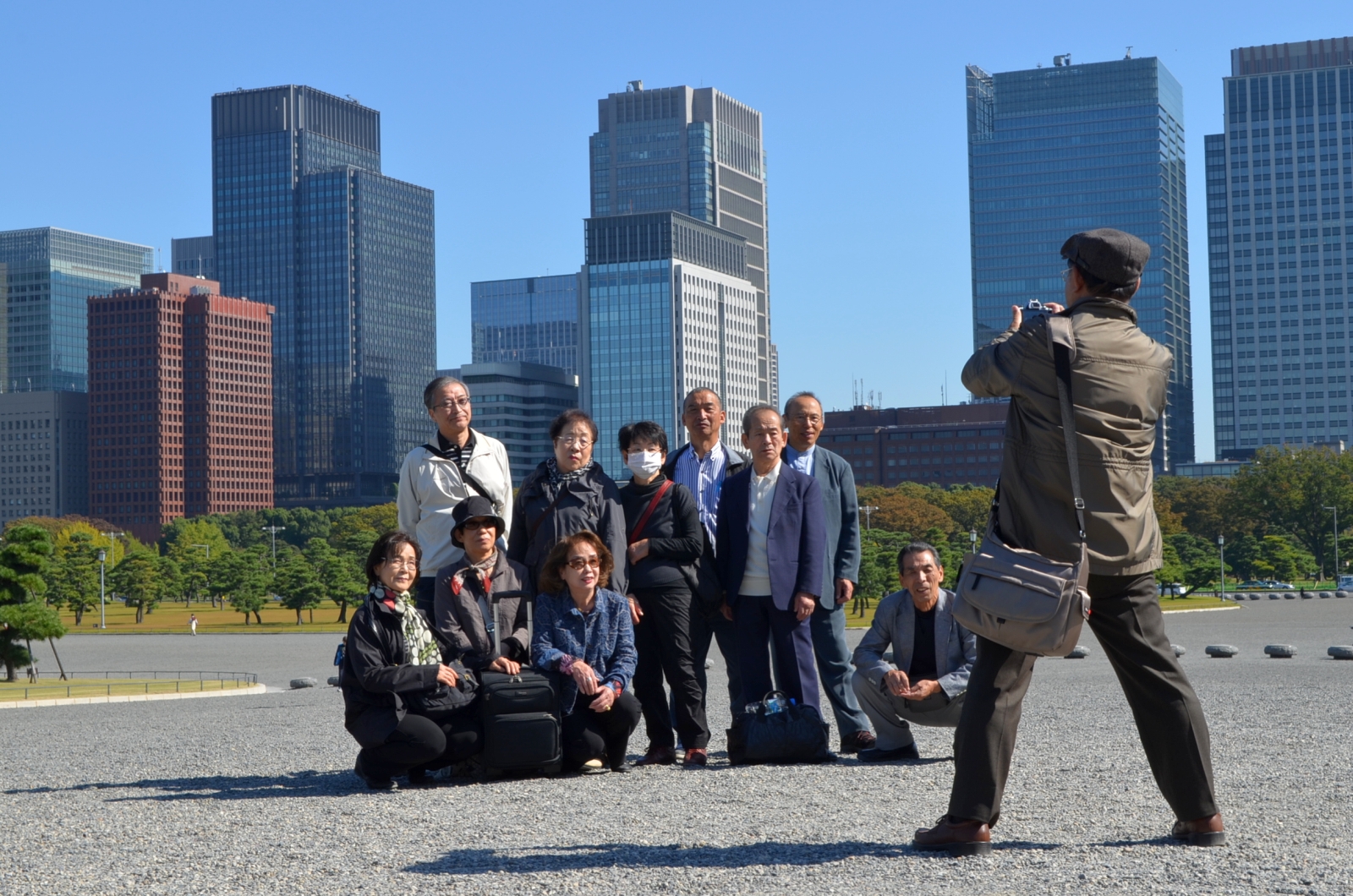
When you travel to Tokyo, it’s hard not to fall back on certain well-worn travel clichés to describe the experience. Whether it’s the ever-present pull you see and feel between ancient Japanese tradition and the realities of modernity, the experience of walking through chaotic cityscapes then finding yourself in a serene Shinto shrine, or the sensation of sitting down to a meal completely foreign to you but at the same time feeling like you’re home, all I know is that after numerous once-in-a-lifetime meals, several laser-emitting robots and one urban kimono wandering later, my trip to Tokyo will be hard to forget.
Before us a small wedding procession snaked its way along the perimeter of the shrine in Tokyo as white-gloved guards in black suits herded the many hundreds of onlookers off to the side to provide way for the group. Behind the wedding party the towering Shinto shrine Meiji Jingu cast a long shadow over the pavilion where we stood, and the stoic couple — the groom clad in black and the bride in a white kimono and wearing the traditional wedding headgear known as the watabōshi — looked impassively forward as the Shinto priest bowed before them, completing a ceremony that dates its roots back thousands of years. The group then proceeded through the nearby torii (gate) and the crowd quickly dispersed back into somewhat organized chaos, taking selfies in front of the shrine and heading to the nearby souvenir booths.
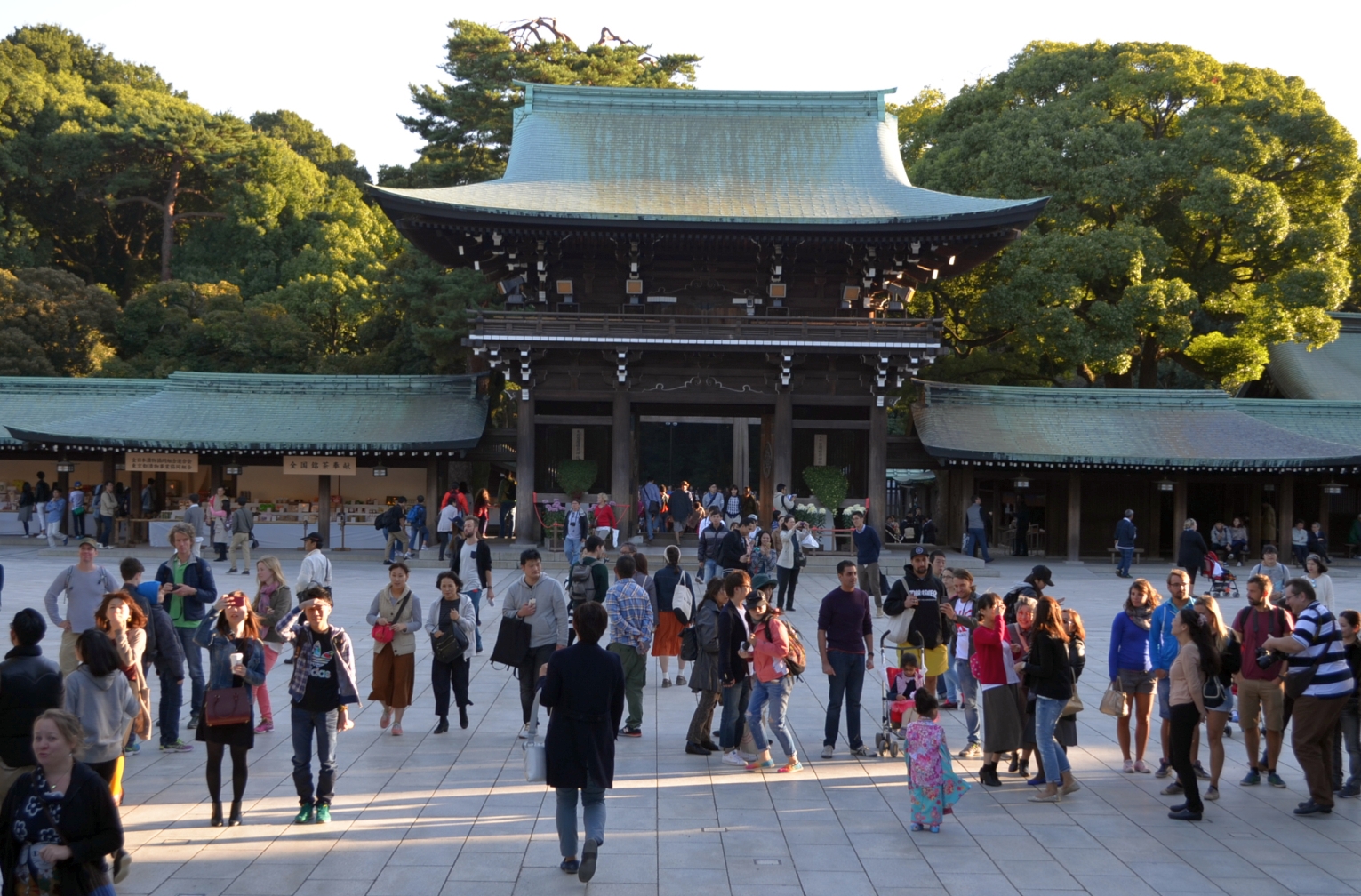
And thus concluded our introduction to Japan. We had just landed in the country the night before and it was now late afternoon on a Saturday during the last week of October, which according to my questionable math skills, meant that back in New York it was around the time I was normally entering into the second stage of REM sleep, and I would have been hours away from being able to comprehend such basic questions such as how to convert 730 yen into U.S. dollars or why I felt so relaxed and peaceful in a city that is at the center of the world’s largest metropolitan area (37.8 million people at last count).
This was a feeling I was to have many times during my week-long stay here in Japan which included stops in Tokyo and Iwate Prefecture to the north. A country that is so routinely associated with bright lights, crowded streets and manic crowds by those of us who have never been is more often anything but. I was regularly reminded of this, including when I was walking down the crowded streets of Tokyo and the lines of people around us would shift to the left to make way for those walking in the other direction, or when we would step into a crowded subway car and sit down on a plush seat and listen to the eerie silence of hundreds of commuters quietly making their way to work as if they were sitting through a piano recital, respecting each others’ need to sleep, read or enjoy a few minutes of peace without interruption. New York City this was not.
The night before we had arrived from New York via ANA (All Nippon Airways), which offers daily direct flights from JFK to Narita, Tokyo’s largest airport located about an hour outside of the city. Of course, this being a Japanese airline, the difference in service was immediately apparent. From the overly courteous flights attendants handing out hot towels upon seating to the peaceful mood that pervaded the entire overnight flight, it would be difficult to ask for a better way to be hurled across 14 times zones over a 12 1/2-hour time period. After arriving a good half-hour early, we grabbed our bags and headed to the nearby bus pickup line where our luggage was immediately loaded and we were on our way for the quick 60-minute trip to the Hyatt Regency near Shinjuku station in the center of Tokyo.

Located on the northeastern edge of Shinjuku Central Park, the Hyatt Regency Tokyo offers amazing views over the park and off into the distance across greater Tokyo. Just minutes from Shinjuku Station — the world’s busiest train station with over 1,000,000 commuters and travelers using it on a daily basis — the hotel is a quiet oasis featuring over 700 rooms, a rooftop spa facility, indoor pool, access to the Tokyo subway system just below it, and perhaps most welcoming, one of the best breakfast buffets I’ve ever encountered served daily from their all-day restaurant, Caffè.
We also were given the chance to stay in a Regency Club room, which besides such amazing Japanese hotel amenities such as a kimono, a centralized light control system and perhaps the most complex but satisfying digital toilet anyone could ask for, it also provided access to the Regency Club high atop the hotel with sweeping views of the city and complimentary snacks and drinks throughout the day. The locals we met were even familiar with the property and knew of its reputation, and I couldn’t have asked for a better place to call home while in Tokyo.
First Things First: Food and Drink

On our first full day out and about Tokyo, we decided to forgo the hotel breakfast buffet and start the day the Tokyo-way: with Kaisen Don (a large bowl of assorted sashimi over rice), and what better place to experience this then the famed Tsukiji Fish Market, the epicenter of the fish trade that is central to the city’s love of seafood?
Home to a 2,000-ton fish trading operation involving over $15 million dollars of fishy trade daily, it’s no surprise the market is one of the best places in the city to get a simple, fresh seafood meal. Comprised of the Inner Market and Outer Market, the Inner Market is where the auction and trading actually happens (and where you need to plan on getting in line sometime in the middle of the night to get tickets to access the premises), and the Outer Market just down the street, which is home to hundreds of different vendors and food stalls where you can buy goods or grab a counter seat and order breakfast like we did at one of the many food stalls.
With a healthy mix of both locals and curious Westerners sitting on both sides of us, the very serious and dedicated chefs quickly prepared our breakfast (salmon, squid, tuna, tofu, ikura) with a side of miso soup, and placed it in front of us on a tray with a pot of hot tea to wash it all down.
After a winding stroll through the vendor market outside, we headed to the center of Ginza, the neighborhood known as “Tokyo’s Fifth Avenue,” and home to some of the city’s priciest stores and real estate (at one point during the height of the country’s real estate bubble in the late 1980’s, one square meter in Ginza was worth $200,000).
Here our group signed up to experience a traditional tea ceremony with Ginza Chazen, a tea ceremony that began with us donning traditional kimonos at a nearby shop then walking down the street to the site of the tea ceremony, an experience I would have thought would have garnered a few more curious sideward glances from people passing us on the street. I credit my natural samurai-like demeanor for fitting right in and appearing authentic in traditional garb.
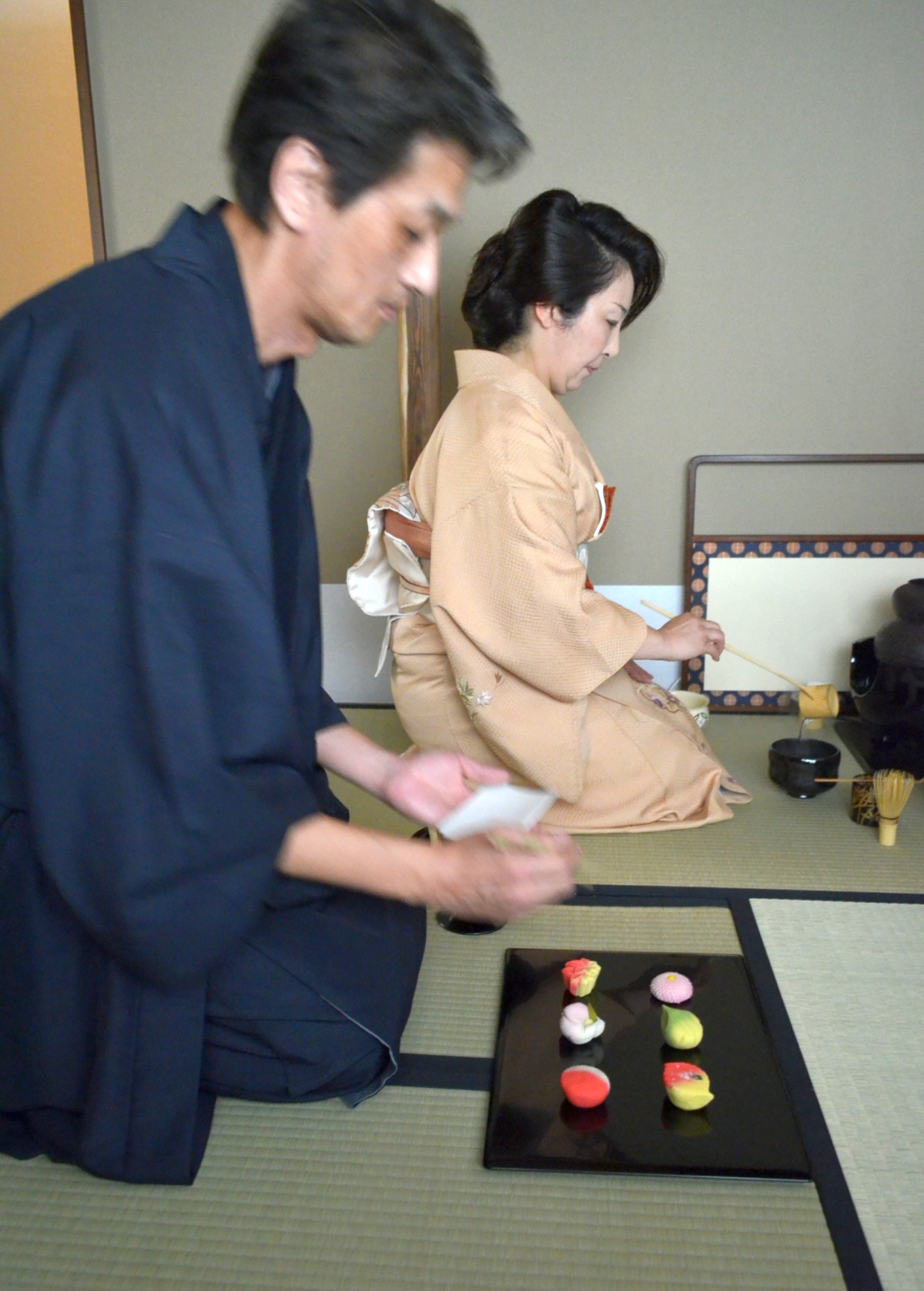
Upon arrival we were given a quick introduction by the host about the history and importance of the tea ceremony (or Chanoyu), then we ducked our heads and crawled through the small entranceway to the tea room, the nijiriguchi, and sat on tatami mats.
Traditionally, the tea ceremony has its roots in Zen Buddhism and dates back to the 9th Century where its practice was brought over from China. The ceremony itself is not only a social ceremony to welcome guests, but it also serves as a democratizing event where participants of all importance enter through the same humble entryway and consume Japanese green tea known as matcha along with a small sweet snack. Our host brought out the matcha tea as we sat along the edge of the small room and prepared cups for us, then explained to us the intricacies of drinking the tea, including how to pick up the cup, how to rotate it and drink from its edge, then finally how to purify the cup afterwards by wiping it clean with a cloth then placing it properly back in front of you.
Walking In the Footsteps of Geishas
In keeping with the traditional theme of the day, we headed north to the quiet neighborhood of Kagurazaka, one of Tokyo’s quaintest neighborhoods full of traditional cobblestoned alleyways and hole-in-the wall upscale bars and restaurants. At the beginning of the Edo Period, this area was home to the city’s geisha culture, home to numerous homes and restaurants where geishas would entertain the male guests and where many a clandestine affair was said to have occurred in the private nooks and crannies of the maze-like pathways.
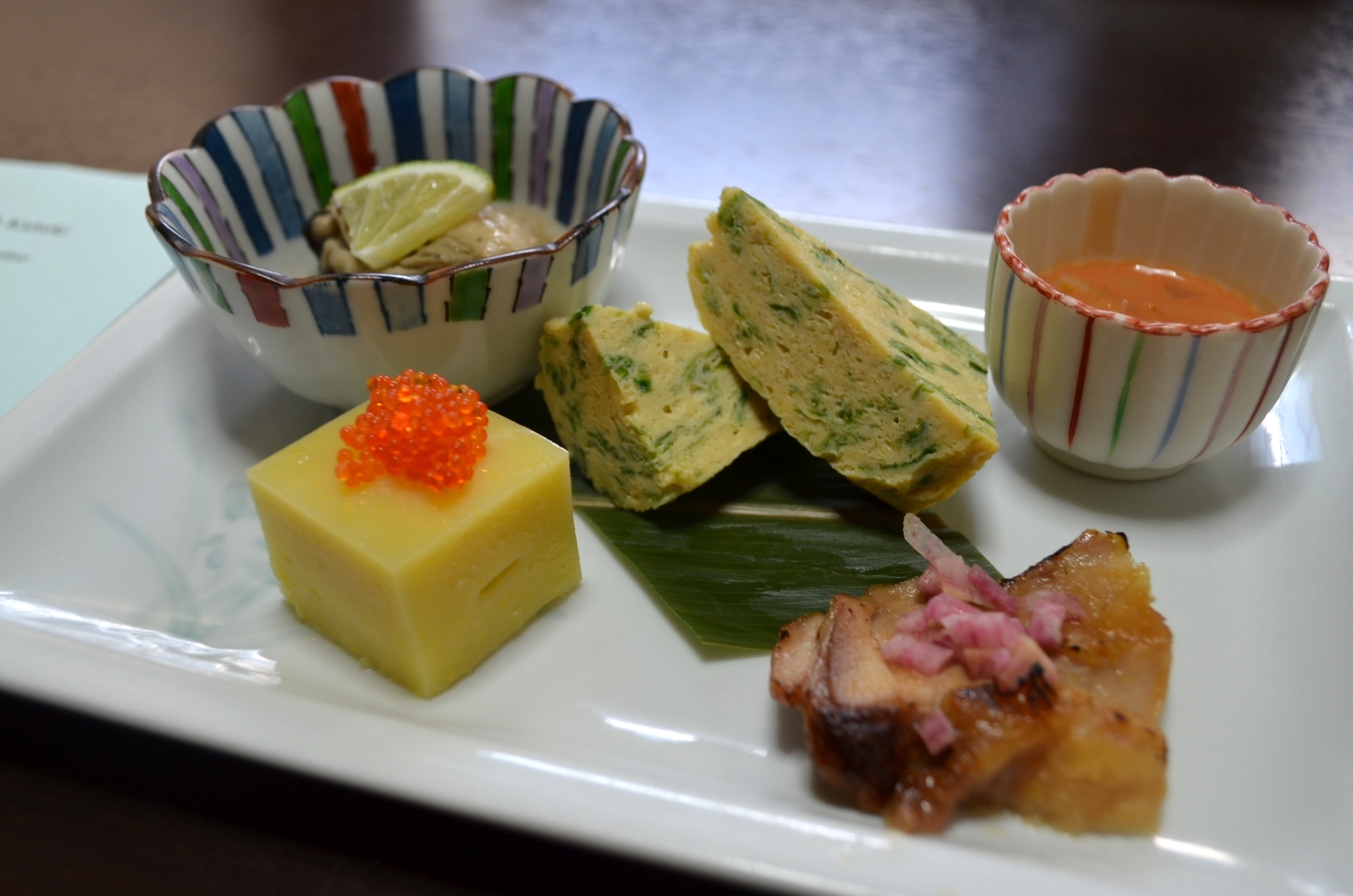
On one of those side streets down the block from Zenkoku-ji Temple, we stopped in for lunch at Kagurazaka Shizuku, where we were ushered into a small dining room and presented with a multi-course meal (kaiseki) over the next hour. Our meal began with a corn-flavored tofu to keep up with the season and a seaweed-infused omelette for an appetizer, followed by sashimi (spanish mackerel, sea bream), and our main dish: thin strips of duck served Teppanyaki-style, which meant we grilled it ourselves on a small skillet set up in front of us. Just to make sure we were plenty full by the time we left, our meal concluded with a variety of tempura, inaniwa udon and green tea ice cream.
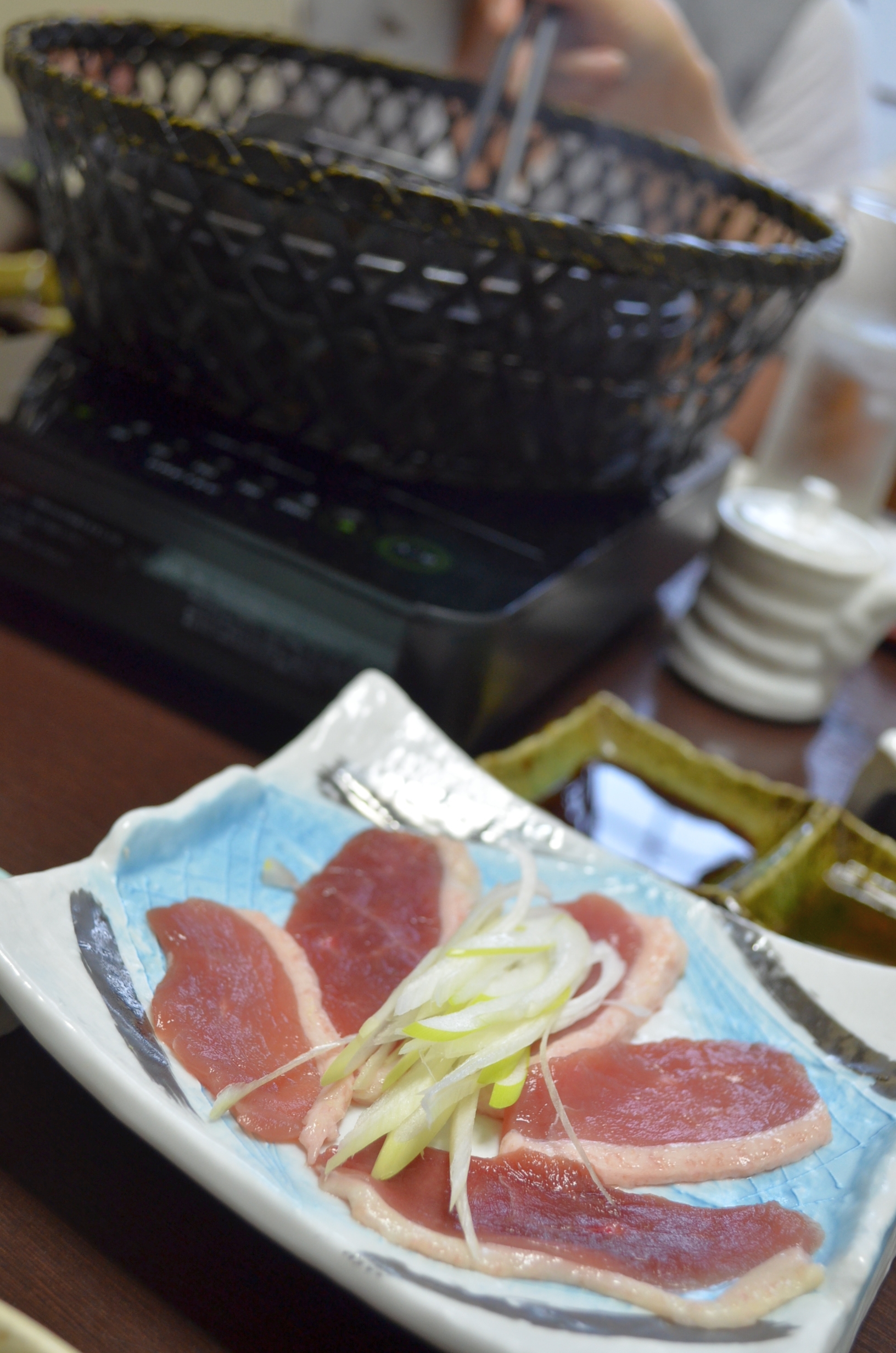
Bright Lights, Big City, Animatronic Robots
One of the more convenient parts about getting around Tokyo is the number of ways one can actually do this, including subways, express trains, white-gloved taxi drivers decked out in formal suits (you’re not going to see that in most of the world) and bike rental. To get from one end of the city to the other, I would suggest ditching the bike and saving yourself the hassle of buying a pass every time you were going somewhere and picking up a PASMO card like we did.
At any station, for a small deposit you can pick up a PASMO card, which is a rechargeable contactless plastic card utilizing RFID technology which allows you to pay for entering a subway or train by simply placing the card near the reader at the gate. The best part about the PASMO, and dangerously its most addictive utility, is the fact the PASMO acts as payment at thousands of different locations, including restaurants, stores, coffee shops and vending machines. Instead of hassling with change and wasting time trying to figure out how much each ride is going to cost, do yourself a favor and pick up a PASMO and save yourself lots of time and hassle.
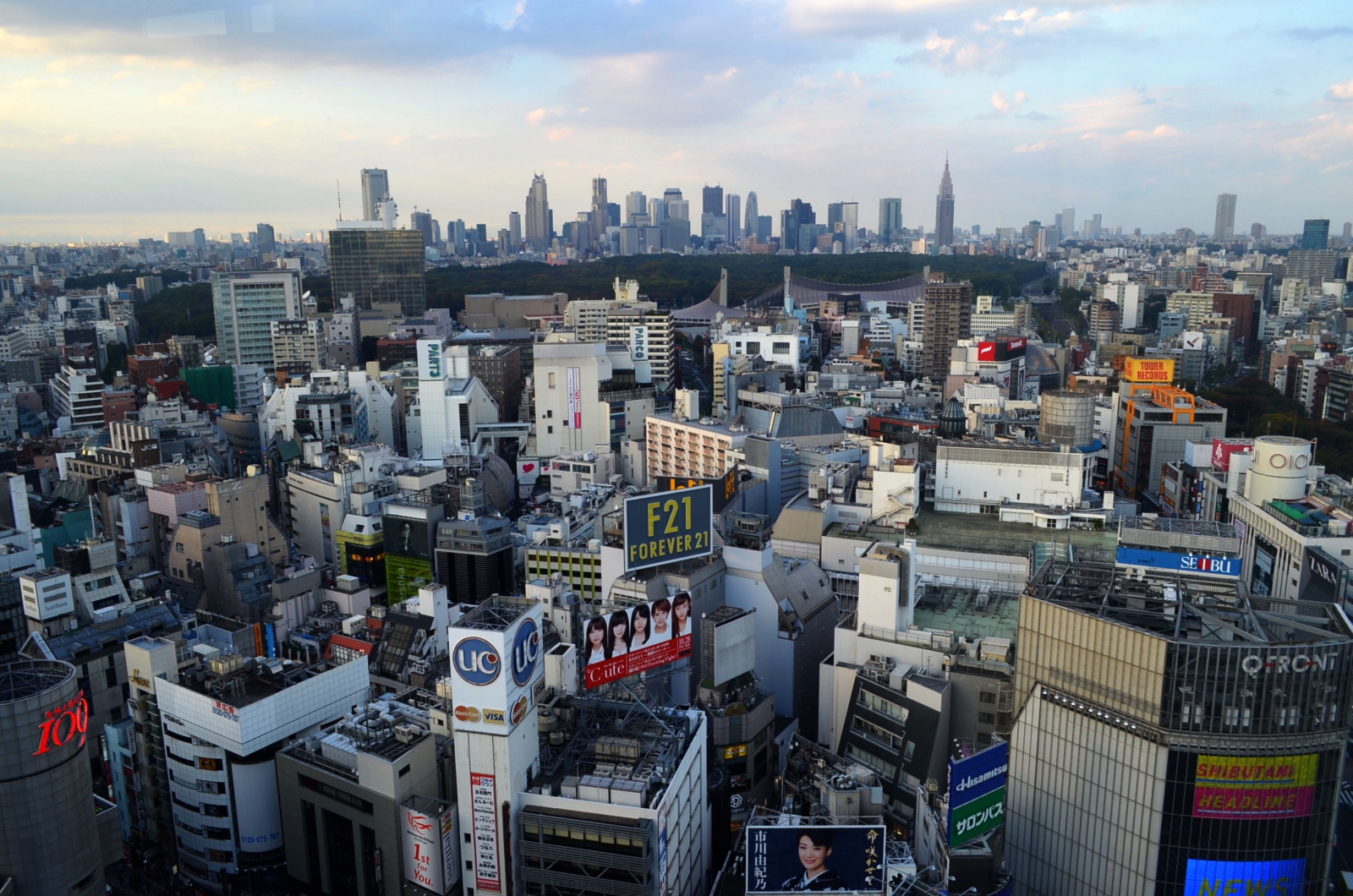
With PASMO in hand, we hopped on the subway (known as the Tokyo Metro — look for the distinctive blue “M” outside to find a station), and headed to one of the world’s most famous crossways, Shibuya Crossing. This multi-path street crossing and the towering advertisements on the buildings surrounding Shibuya Station is what Times Square is to Tokyo: frenetic, hypnotic, chaotic, somewhat aggravating after a few minutes, but a must-see for any visitor to the city.
After stopping by to see the famous statue of Hachikō (the statue dedicated to the loyal Akita that used to greet its owner after work outside of the station every day and continued to do so for nine years after his owner died), we made a few adventurous crosses then ditched the masses and headed to the top of nearby Excel Hotel Tokyo where its several restaurants and bars 25 floors up provide some of the best views of the city and of Shibuya Crossing below.

Making our way back up to Shinjuku, we decided to grab dinner at one of many dozen Izakayas situated in the small enclave of tiny alleyways and small, two-storey wood buildings that call Golden Gai home. A throwback to pre-war Tokyo, this low-key neighborhood is a far cry from the bright lights and towering buildings around the corner. Here, along the dimly-lit pathways and overhead power lines snaking across each other, you will find numerous bars and restaurants whose closet-like size can barely fit more than a large group, but whose intimacy with their chefs and owners across the counter offer a unique way to kick back a Sapporo or five and have an inexpensive meal quickly prepared before you.
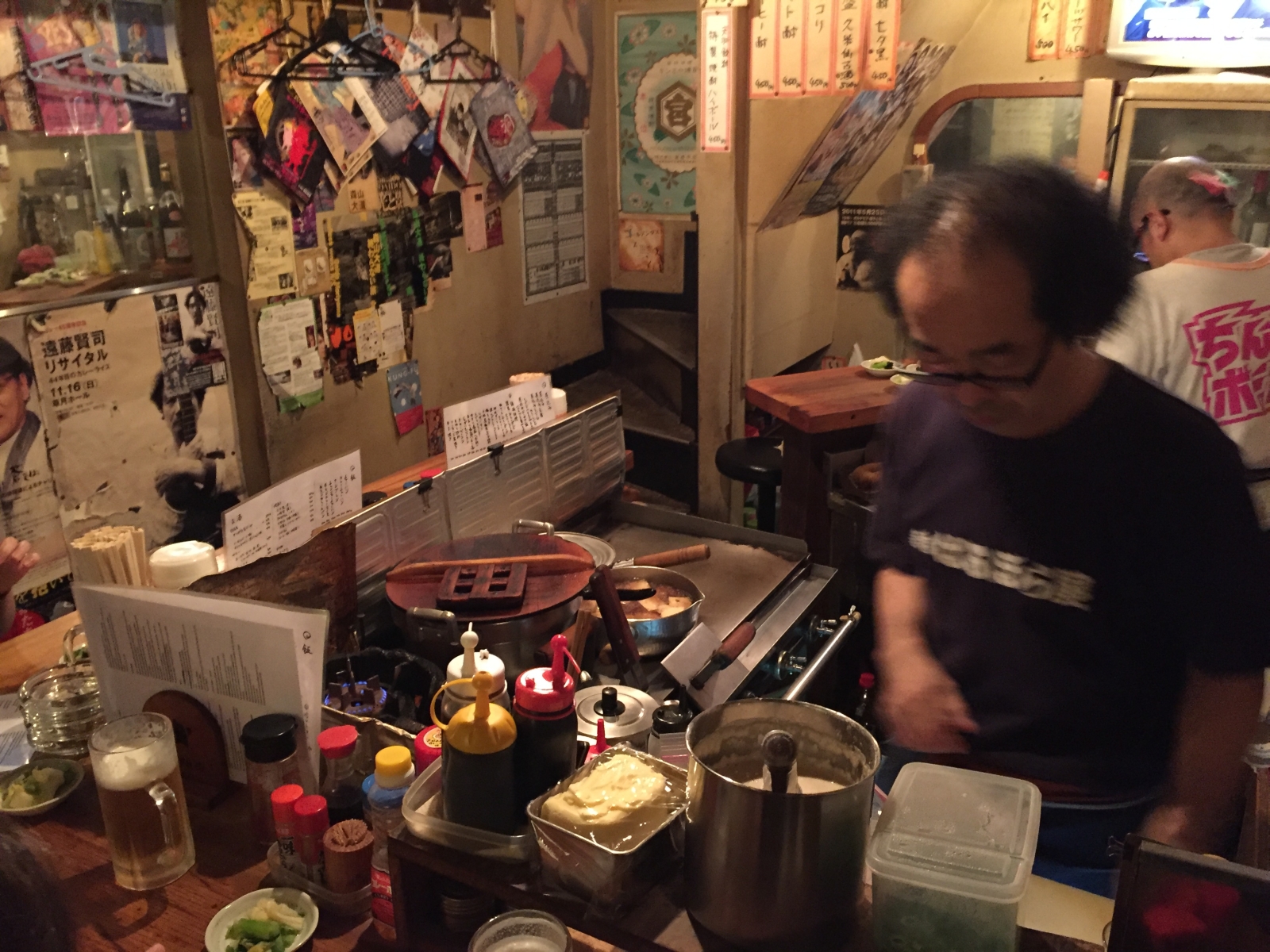
We chose a local favorite, Baruboraya, with its faded concert flyers covering the walls and its friendly chef and bartender shoveling food and drinks our way as fast as we could order them. After several Japanese lagers and dishes including curried udon, grilled edamame, assorted sashimi and okonomiyaki all shared family-style, we squeezed our way outside and finished up the night in classic Shinjuku style: a visit to the famed Robot Restaurant.
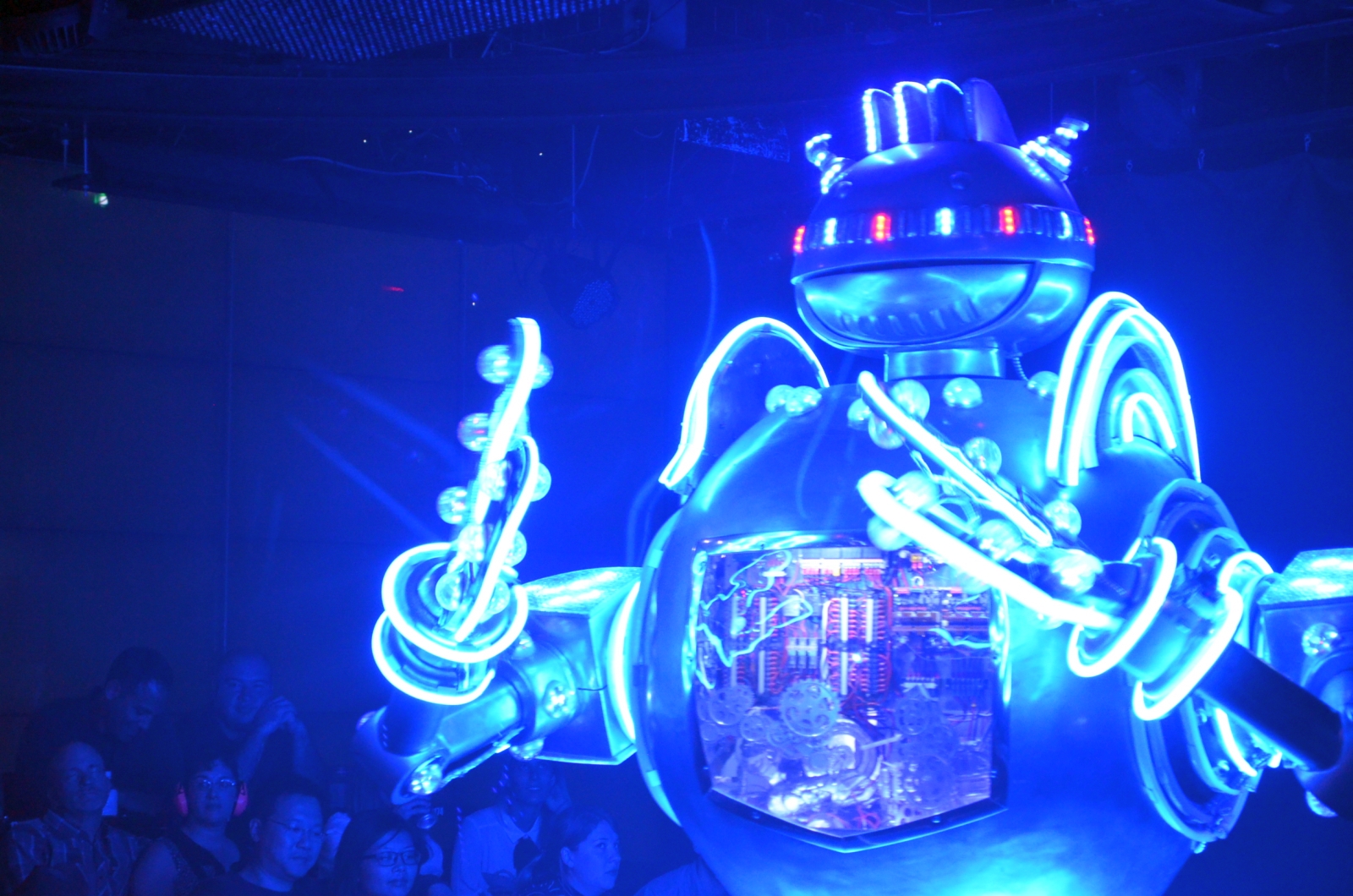
Little visited by locals, but gracing the Facebook pages and Twitter feeds of Western tourists since its opening, Robot Restaurant is a hallucinogen-inspired dinner show part-Manga and part Liberace, with a bit of Mad Max thrown into the mix. Since opening in 2013, the restaurant has become a favorite for visitors to the city looking for an only-in-Tokyo experience (and, what seemed to be the common theme from everyone I spoke to there, just something you need to do at least once while in town).
The restaurant itself is less restaurant and more Vegas-style performance, with a several “acts” performed while bento-style food is served. The show’s narrative itself is hard to follow, but each performance shares a common theme of brightly-lit costumes, robotics, scantily clad 20-something Japanese women, lasers and a throbbing musical soundtrack that will leave you in a daze an hour and a half later as you stumble onto the busy streets outside.
After the show concluded, we hailed a cab and the driver pushed a button, automatically opening the back door, and we quickly found ourselves back in an oasis of solitude, the bright lights of the city’s signs reflecting past us on the car’s windows as we slipped away, back into the quiet area we were calling home. The excitement, noise and bright stimuli fading into memory, close at hand, but gone for the evening.

See
Eat and Drink
Stay
/
 Matt Stabile is the Founder and Editor-in-Chief of The Expeditioner. The Expeditioner began in 2008 and is headquartered in New York City. You can read his writings, watch his travel videos or contact him at any time at TheExpeditioner.com.
Matt Stabile is the Founder and Editor-in-Chief of The Expeditioner. The Expeditioner began in 2008 and is headquartered in New York City. You can read his writings, watch his travel videos or contact him at any time at TheExpeditioner.com.
The post Tokyo Travel For The Food And Culture Obsessed appeared first on The Expeditioner Travel Site.
]]>The post The Sound Of Music And Rain In Salzburg appeared first on The Expeditioner Travel Site.
]]>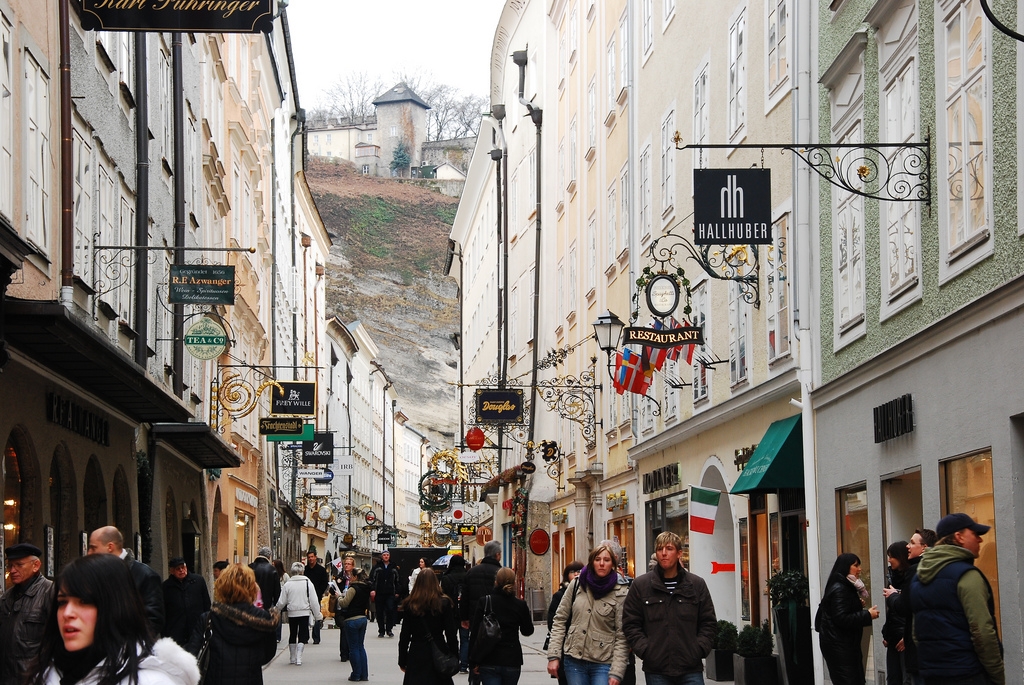
When the airport of a city or town is named after a local but deceased celebrity, upon arrival in said city one can expect a challenge in avoiding the posthumous paraphernalia and celebration of the eponymous home-grown hero.
For example, touching down at Liverpool’s John Lennon airport, one can expect to be inundated in the city center with the numerous seedy joints with by-lines claiming to be “John’s favorite bar,” hotels with names such as “Hard Day’s Night,” and promoters lingering on each street corner with the intention of luring hapless tourists on trips to Penny Lane and Strawberry Fields.
I expected similar scenes upon arrival at Salzburg’s W. A. Mozart Airport. Besides home of the birthplace of Mozart, Salzburg is principally known across the English-speaking world as the home town of the Von Trapp family up to the 1930’s, and subsequently the setting for the sun-drenched film The Sound of Music.
The city is saturated with bobbing teddy Wolfgangs on elastic, and murals of children strapped in Lederhosen singing with a backdrop of bright blue sky; pictures of Christopher Plummer on-set bedeck café walls and one can buy chocolates in the shape of Mozart’s profile on the counter at most newsagents. However, what was apparent to us as we approached the city center was that, as Liverpool is well worth a visit even to people who preferred Mick Jagger to the Fab Four, so Salzburg can be an intriguing destination for those who have no interest in the city’s musical prodigies.
Driving into the city from the airport, once through the suburbs, the pastel coloring of the former merchants’ houses lining the roads start to emerge and above them you can begin to spot the baroque church steeples and domes that rise up from the city. More striking at first glance than the architecture is the hulking Kapuzinerberg that sits in the center of Salzburg; a fully forested hill whose summit at 2, 087 feet is the highest point in the city.
Running at the foot of the Kupuzinerberg is the city’s river, the Salzach, flowing in a luminous, light turquoise color like cloudy mouthwash. Just a few steps down from the street one can perch upon white rocks that sit tumbled on the banks, dipping feet into the glacier cold water and feed plump and indifferent ducks seeds from a fresh Voll Korn Brot.
The Alt Stadt (Old Town) of Salzburg lies between the river and craggy Mönchsburg upon which perches the city’s fortress. The Festung Hohensalzburg is the largest and best-preserved fortress in Europe and provides a striking and imperial backdrop to the city. Construction of the Festung Hohensalzburg began in 1077 by the Archbishop Gebhard, and it was occupied and enlarged by his predecessors who ruled the city autonomously until the end of the 19th Century.
Visitors can walk freely along the undulating paths through the trees that surround the fortress, and within the high walls there are guided tours where one can visit the torture chamber inside and from the Reckturm watchtower enjoy a panoramic view of the city and the misty Alps beyond.
The fortress also offers a great view of the Alt Stadt below — the twisting cobbled alleyways just visible between high rooftops, leading out upon the sprawls of numerous squares each centered with a fountain or statues. In winter these Plätze offer ample space for a variety of Christmas Markets fit with stalls offering steaming, scented Glühwein, caramelized chestnuts and delicate mahogany Baby Jesuses. In the summer the fountains offer a chance to cool down, while old men draw caricatures for children and newlyweds amongst bars with stands with red patio umbrellas serving steins of Heffeweisen and Stiegl.
Alas, when we visited Salzburg in early September, we were greeted by heavy clouds and a prevailing, splattering drizzle. The artists and their paintings were draped in identical transparent smocks, and huddled tourists sheltered under the patio umbrellas with not a beer in sight. Our guidebook told us that summer in Salzburg suffered regular spells of heavy rain, which the locals called Schnürlregen (string rain).
Though heavy, we read that this rain could disperse in a matter of hours when the warm south wind known as the Föhn blew over the city. We convinced ourselves that the Föhn would be here any minute, and so along with hardy groups of Chinese — consistently the most diligent and thorough of all tourists in my experience — we ignored the rain, dismissed the umbrellas and began to climb the steps leading up the Mönschburg.
In the shadow of the great fortress, nestled in the side of the hill, is the Nonnberg Convent, offering visitors a serene and more subdued experience than the grand St Peter’s Abbey and Salzburg cathedral down in the Alt Stadt. Following a path circling the north side of the hill under crumbling archways one can slip through iron gates into an off-kilter and weedy courtyard. Around the corner are the heavy wooden doors leading into the musty convent, where through more iron gates one can peep into confessional booths and rooms carved like grottos for private meditation.
Outside the convent we walked back onto the path to the lip of the hill where a low stone walls runs. At this point the path and wall loop out and back in again, creating a rounded ledge where a spherical tree stands circled by a wooden bench. Here we sat, partially sheltered under the leaves, looking out at the domes and minarets bellow, the ramshackle roofs of the east end of the town and in the distance to the south, the foreboding Untersberg, its great mass just visible through the clouds.
The Untersberg is the highest mountain in the region, and it is over its craggy heights that in The Sound of Music, Captain Von Trapp proposes that he and his family climb, so to escape capture at the hands of the Nazis. One of many irregularities in the film is that fact that if the von Trapps had indeed taken this course, they would not have ended up in Switzerland as the benevolent captain promises, but in Bavaria. Indeed, they may even have stumbled, skipping and yodeling, into the lap of Hitler himself, reclining at his summer chalet in the mountains just beyond the Untersberg.
We didn’t make it as far these mountains but we did take a bus out to the country house Hell Brun. This was the summer residence of a prince of Salzburg, Markus Sittikus. Built between 1613 and 1615, cast in corn yellow and terracotta orange, one can recognize much of the villas of Tuscany in Hell Brun and even in the downpour we could appreciate how splendid this place would look in summer.
Dripping and shivering, we joined a tour group at Hell Brun to see the “trick fountains” built into the gardens by Sittikus so to drench guests who outstayed their welcome. Our jovial guide led us sloshing about the ponds, pools and little gravel paths of the gardens and up to a stone table with four seats on either side and another at the head. Twisting a tap hidden in the bushes, he broke into applause and chuckles — just as, no doubt, Sitticus himself would have done — as jets of water arose from the seats of the stone chairs where the prince’s guests would have sat.
These displays were greeted with half-hearted tittering and forced sounds of approval from us in the group who were afflicted by the effects of the weather a little more than our guide. There was even less congeniality on our part when he took us into a little grotto towards the end of the tour, and after another preamble over Sittikus he stealthily twisted a nozzle concealed in the stone wall and water began gushing out, not from the pit we were gathered around and looking into expectantly, but instead from above our heads and below our feet. Modest Brits flung themselves against stiff Germans as we all attempted to avoid a further drenching as the sound of our guide’s microphoned cackle reverberated about the grotto.
Our tenacity and good cheer had taken a battering at Hell Brun and in a slightly subdued state we returned to the city and took our place in a mini-bus heading out to the lakes that surround Salzburg. Our Italian driver and guide was in as good a spirits as the chap at Hell Brun, and like the latter, he ignored our despondency and instead giggled at the grim weather.
As we reached a vantage point on the road looking over the spectacular Fuschlsee, what should have been a stretching mass of glistening azure, we instead looked out upon drifting clumps of grey fog, through which at points one could spot a darker grey which we assumed must be the hidden lake below.
“Yes, yes, cannot see anything today!,” the Italian brightly commented standing next to us. “Nope. Hahaha. Nothing today!”
On the way back to the city we barely looked out at the impressive Mondsee. Slumbering and sodden, with the tones of Mozart’s Requiem on the minibus stereo, we made plans to find a traditional restaurant that evening, order some Austrian Goulash, sit by a log fire, take off our socks and dry our numb feet.
On vocalizing our plans to our driver, he insisted that he take us to the best Italian restaurant in town. He dropped us off, waved us goodbye and we entered into the restaurant-cum-delicatessen and immediately saw that there was no Ghoulash, certainly no fire, and we were to sit on a table next to a gently vibrating glass counter serving cold meats.
The Föhn came during our last night in Salzburg and we woke up the next morning under blue skies and clear, sparkling sunlight. There was a light mist still hovering over the fields as we rushed down the hill after leaving our hostel, determined to see as much of the city in the sun as possible before catching our bus back to the airport an hour later.
We rushed first to Mirabel Gardens, where accompanied by diligent droves of Chinese tourists — who else? — and amongst the geometrically designed pink flower beds, we took action shots of each of us dancing around the fountain like the Von Trapps singing “Do-Re-Mi,” frolicking in the sun light and dancing on dry feet.
The fantasy of Salzburg in the sun endures in our minds as a wonder only partially tasted. Yet the merit of a town that can appear so peaceful and exciting, when wet and dispirited is a testament to the fact that even those who are not Mozart nuts and cannot yodel to “The Lonely Goatherd,” will find much to appreciate in one of Europe’s finest gems.
Schnürlregen or not, you can have confidence in Salzburg.

[Signs on a Salzburg Street by Joel Bez/Flickr]
 Bertie is an English Literature graduate from London currently living in Berlin. Most of his time is spent reading, drinking and trying to learn German. More of his writing can be found here at BertieDigbyAlexBlog.blogspot.co.uk.
Bertie is an English Literature graduate from London currently living in Berlin. Most of his time is spent reading, drinking and trying to learn German. More of his writing can be found here at BertieDigbyAlexBlog.blogspot.co.uk.
The post The Sound Of Music And Rain In Salzburg appeared first on The Expeditioner Travel Site.
]]>The post Book Excerpt: ‘The French House’ By Don Wallace appeared first on The Expeditioner Travel Site.
]]>
The following is an excerpt from The French House: An American Family, a Ruined Maison, and the Village That Restored Them All, by Don Wallace.
Chapter one
Far Breton
It’s another day in Kerbordardoué.
Up at eight, before the others. The sun doesn’t set until nine thirty or ten during summer at this latitude, so it feels early. Treasuring the quiet, moving like a French Country Ninja, I put on the water, light the gas stove, quietly clean off the wineglasses, dessert plates, and empty bottles from last night. I ease open the window facing the dining table. A giant flowering bush pushes inside. It has to be pushed back outside every evening, like a last inebriated guest. I inhale herb–scented air, listen to the buzz of the bees. The square is empty, the village silent, the sky pink from sun diffused through a cottony marine haze.
With a faint crunch of gravel underfoot, Suzanne strolls into view, hands clasped behind her back, trailed by a kitten. She’s in her usual blue apron over her usual blue–black shirtdress, the same outfit she’s worn every day for the last ten years, and probably every adult day of her life. The kitten dances with her heels and boxes the hem of her dress.
Suzanne moseys over to the well in the wall. Terraced sides of uneven stones form a veritable Hanging Garden of Babylon with the clippings she has inserted into the moist crevices. Her fingers fuss, tamping and fixing. She plucks a few live shoots to tuck into her apron pockets and transplant elsewhere. Then, hands clasped behind her back, she continues her promenade up the lane, past our door, eyes sweeping the flowers and shrubs along our thin verge of garden, most of which she’s planted and tended when we’re away, back in the States. If she were to raise her eyes, she’d see me. But like most older Bellilois, she tries not to look into windows or open doorways. Or at least if she does, to not get caught.
A hiss from water spitting from the pot breaks the spell, sends me back to the stove. She probably knows I’m watching, anyway.
Tap–tap–tap. Work has started somewhere. Peering out through the lace curtains on our door’s window, hand–knitted by Suzanne, I spot a close–cropped head rising above the tile roofline of the tall A–framed cowshed across the square. Rolling a dozen nails between his lips, Loup slides slates into place and tap–tap–taps. Another slate down, nine thousand to go.
A well–muscled guy with a large tattoo of his German shepherd on his bicep, Loup is single–handedly rehabbing the long, narrow building. He’s restored the exterior walls to simple drystone glory, a seventeenth–century skill he had to teach himself. He’s ripped out the cow stalls and laid a floor of antique salvage oak, then an upper story where once swallows nested and shat. I’ve seen the future of the cowshed and it’s gorgeous: a building that sat ignored and decaying for forty years will soon be mistaken for an elegant village relic. Parisian women will set their snares for Loup, only to find themselves flustered and outsmarted by his first love, work. Meanwhile, one more blackened tooth in Kerbordardoué’s crooked smile will be restored.
Clad in chic powder blue running togs, the blond wife of the Unforgiving Couple steps out into the square and does a quick set of bends and stretches. Fifteen years ago, the couple bought the empty lot across from us, a field of weeds spanned by rusted arches of iron that formerly supported the roof of a barn. Mindy and I took the loss of our view—-a blue line of sea—-stoically. One day the arches would be attractive hazards for our son and the village children, we thought.
But before we could meet the couple, they submitted plans for a three–story McMansion to the Mairie de Sauzon, or mayor’s office. Once enough people had taken a look and gagged, Gwened the Archer led a charm offensive. The couple blew her off. Gwened took our protest to the Mairie de Sauzon, who dismissed her as a mere second–home owner, even though her grandfather was from Belle Île and she had been coming here her whole life.
When she informed him about the regulations on the books and how they forbade a third story, he patronized her. That did it. Gwened went door to door with a petition, the first, some said, in island history. About half of the second–home owners signed it, but not us—-Gwened felt having un étranger Américain would backfire. The Bellilois elected not to sign: such is the strength of feeling here about imposing one’s opinions on others. When Gwened returned to the Mairie, he shrugged. Madame, we have never been presented with a petition and this is not the time to start.
That left the fate of that lot to our village’s widowed matriarch, owner of the surrounding fields. No way the stern and reserved Madame Morgane would sign anything so forward as a petition, but she agreed to go to the post office, which was next door to the Mairie de Sauzon, who happened to be in, with his door wide open to the street. Naturally he greeted her. A conversation took place. The subject almost didn’t come up. Then he scoffed at all this foolishness. She replied that the new house would be “too tall.”
Too tall? The Mairie frowned. The first plan was rejected. A second came in with two stories—-but enormous glass walls. This was actually easier for the Mairie to reject. There are laws against that sort of thing. Belle Île enjoys national heritage status, which specifically covers home construction and renovation.
The couple responded by building a house without any windows facing the square, which was fine with us once some ivy grew up the blank white wall. In fifteen years, I can’t remember them once waving hello. It’s really too bad.
Oh, well. They don’t come from here. They don’t even come from somebody, as the political machine hacks say in Chicago.
At least we come from “somebody” — and gratefully. Gwened. She lured us here—-invited us to Belle Île when we were reeling around Europe fifteen years ago, our dream of living and writing in Paris having come undone. Mindy had been her student long before, in the campus abroad program where Gwened taught. Gwened had offered us her house and ended up changing our life.
The wife runs off, hippity–hop, classic le jogging style. Spooning out black mounds of cheap supermarket coffee, as good and aromatic as any of the expensive beans I noisily grind in our kitchen back in New York, I pour the boiling water into a cone filter wobbling atop a brown pot hand–thrown by our Scandinavian potter neighbor. Suddenly a voice echoes in my head: My very own randy Dane up the lane…
It’s my sister’s joke, from her visit a year ago, and a bit unfair—-though the potter certainly did trail Anne around his atelier in the fields. What a view to a seduction he had: fat yellow heads of buckwheat bending to the breeze, then a dark dense green windbreak of cypresses, and after that, the wide, glittering blue–steel sea. The Atlantic. Pure horizon.
His tanned fingers kneading Anne’s arm, finding more muscle than expected, he cried out in English: “But you are strong!” Excited, as if imagining her churning butter on his Viking homestead, walking behind the plow, a baby crooked in each arm.
“Merci,” she said, mustering all her French. With a flutter of her eyelashes she pulled away. “Unfortunately, we really must be going.”
“Just think,” Anne sighed that day, after we rode away on our rickety bikes, the potter waving forlornly to our backs. “If I ran away with him, we could live in adjoining villages and pay each other visits at teatime.”
“That would be nice,” said Mindy.
“We could have Earl Grey in cups made by my very own randy Dane up the lane.”
“Anne!” Mindy shrieked. Et voilà! The quip attached itself to the pot like a superfluous handle.
Mindy always says Anne is the sister she never had. They laugh together, joke together, surf Huntington Beach’s Chair 16 together. But we don’t see enough of her. Since at different hours of the day Anne is a mother, a wife, a stepmother, a daughter, a schoolteacher, a golf teacher, and a writer, I’m sure nobody sees enough of her. Living on opposite coasts doesn’t help, which is our fault for moving to New York City.
As I sat there, watching the coffee drip into the brown potter’s cups, I missed my sister and considered how hard that trip must have been for her. Getting Anne over here is a project of ours. She’s chafed at living in our hometown all her life. Once or twice she almost left, but for some reason at the city limits, life always pulled a U–turn.
The first time she was about to make her escape from Long Beach, on a yearlong surf safari down to Mexico and South America with her boyfriend, the car broke down on the freeway on–ramp. Our parents came down hard on the guy, and they broke up. Before I even heard about any of this, she was engaged to the son of our father’s business partner, who proposed, I think, on the golf course. Anne had two young kids before the marriage went bad. She might have gone south to make a new start, but in the same week she was diagnosed with stage IV throat cancer. Divorced and healed up after miracle surgery and radiation, she found a man. He wouldn’t commit.
Then the current one came along, a carpenter who surfed and read The New Yorker. Ideal, right? She married him. But already there were strains. Anne’s teenaged daughter was acting out big–time. And, underlying everything, a deeper tension rattled my sister’s confidence. She’d confided to me that she’d glimpsed the pattern of her life and vowed that, no matter what, she’d bust out one day, if only to Seal Beach, just across the county line.
As I was helping Anne to engineer her escape to Belle Île, I fed her air routes and plans for her whole family to come. Circumstances combined to whittle it down to just her and her son. When she hesitated, I supplied rationales for a vacation from the tempestuous daughter, the teaching job, the old dog, cat, and plants—-oh, yes, and from her husband’s three kids on alternate weekends. She definitely needed a break, I argued. And successfully.
But what I didn’t realize was how selfish that was. All these people loved her and had legitimate claims on her. I was beginning to see I really wanted her to validate Belle Île for me. I wanted to see Belle Île through her eyes. And to watch her fall in love with it. After so much family criticism over our coming here, of all places, rather than closer to home in California, I wanted to see her pick up on the way the island was like all those idyllic Pacific coves and beaches we knew when we were children, before the bulldozers and housing tracts. Like those places, but better. I wanted to give Anne this, and then surely she’d do as we’d done—-make every effort to return every year.
Belle Île was already Mindy’s and my alternative base from home, established over the protests of our families. Now, like every breakaway republic, we were recruiting, and because Anne was the shining light, the radiant one, among the Wallaces, I’d introduced a conflict of loyalties, forcing her to choose between us and the rest of the family. She saw it. I didn’t, not yet.
Once I got my wish and she was here, of course Anne would be Anne. On her third day here last summer, she watched me prepare for a picnic with the kids at the Hidden Grotto of Swimming Lizards. “I want to play that thirteen–hole golf course,” she said. “Sarah Bernhardt’s golf course. The first course started by a woman. I can sell a story about that to Golf for Women and pay most of my expenses here.” She tossed her head back and laughed, as if feeling the fingers of the wind coursing through her hair. “You can write one, too, Donny. And you, Mindy. We can make so much money and expense dinners at the Hôtel du Fart.”
*
“Du Phare,” corrected Mindy, laughing at Anne’s wicked mispronunciation of our island’s most picturesque restaurant. “Pronounced far, meaning lighthouse.”
“Wait! Then what’s that dessert we had at Hôtel du Pharrrrt? ”
“Far Breton.”
“Lighthouse cake?”
“Noooo…”
Anne was having such a good time mangling the language that it actually made me jealous. Normally that was my gig. At dinner at the Hôtel du Phare she’d feigned confusion at every menu choice, fruites des mer becoming “fruit of a female horse” instead of a seafood plate and so forth, ending with the rubbery egg and prune concoction called “Far Breton.”
“Wait—-how can phare be a lighthouse and far a cake?”
“One word is French, the other Breton,” I explained.
“Well, I think that for you, Far Breton means ‘sweet distance,’” she replied curtly.
Snark from Anne was a surprise. “Meaning?”
“You didn’t just go for the Far Breton,” she said mock accusatively. “You went for the Far, Far Breton.”
“Look, I like Long Beach.” Our hometown.
“Funny way to show it, going ten thousand miles away.”
“Only five. Look at Mindy. Hawaii’s even farther.”
“Far, far, far.” Anne shook her head. Message delivered: we were too far away. Though I still didn’t know from whom, I could guess: Mom.
But, being Anne, she immediately deflected the point of the barb toward herself. “And I still can’t get out of Long Beach.”
This actually caused a pang of remorse. I felt she’d read my mind, that she thought that I thought she’d missed out on life. Stuck in the old hometown, repeating herself. I couldn’t reply.
*
My morning reverie comes to an end when our eleven–year–old, Rory, and David, Anne’s son, tumble downstairs and briefly struggle over which of the deep wicker chairs to sit in. There’s no difference, except for a matter of placement. The far end of the table is the prize. Mumbling good morning, they attack their waiting cups of hot cocoa and Krispy Rolls “Suedoise”—-a kind of Swedish hardtack.
But all is repetition here, too, I should’ve protested to Anne. If only she had come this year, too—-but, instead, she sent her giant teenager to eat us out of house and home. Fortunately, we love Devo, a six–foot–four high schooler. Even better, he came bearing an envelope of cash with “Feed Me” written on it.
Mindy has been upstairs for a while, writing in her journal. Now she comes for her coffee and Krispy Rolls. We have only a few scrapes of blackberry jam left in the jar but plenty of butter. Only in France do we put butter on bread. There’s no point in trying it in the States; I’ve tried, and it doesn’t taste anything like the incomparable beauty of French beurre.
Crunching and sipping, the boys lean over the chessboard and begin setting up the pieces.
“No!” shouts Mindy. “No chess until you make a surf check.” Mindy can’t plan her day unless she knows whether there are waves.
“Hmm,” says Devo. “No surf check until checkmate.” He moves his pawn.
“No lunch unless you make surf check. Chop–chop! Now!” Mindy claps her hands loudly. Yesterday the boys started playing a game and didn’t leave the house until early afternoon. This plays hell with our schedule, such as it is. The threat of no lunch usually works. When it doesn’t, and we abandon the boys to their own devices, there is a definite danger that the house won’t be there when we return, due to the combination of Devo’s appetite and the stove, knob-less after several explosions.
“Your move.”
“I’ll make you an omelet if you check surf now,” Mindy pleads.
“Hmm. What kind of omelet?”
“Chorizo and tomatoes and Gruyere.”
“Okay.” Devo looks at Rory. Then, with a crash, both shove their chairs back and race for the door. There’s a struggle at the handle that Rory loses, being a foot shorter and seventy pounds lighter than his older cousin. But he’s faster and arrives first at the bikes leaning against Gwened’s barn. One bike’s chain slips; the other doesn’t. Another struggle begins.
“Peace at last,” I murmur. “More coffee?”
“Sure. And an omelet.”
“Hey!”
“I want to write while it’s quiet. Everything is so noisy here.”
This is a slight exaggeration, considering that in New York City, garbage trucks groan and drunks sing and clubbers fight and hookers hook and then swear at each other under our windows from midnight to dawn. But everything is relative. I understand that.
Through the window I see the boys whiz past down the rutted lane. I grit my teeth and wait for the crash at the bottom turn. Nothing happens. Good.
A surf check means we have at least twenty–four minutes of peace—-nine for the boys to pedal madly up the road, take the shortcut across the fields, descend the treacherous dirt lane to the paved road, pedal madly up to the turn to the village of Kerhuel, pedal madly through Kerhuel dodging free–range chickens and sleeping dogs and one–eyed cats, then pedal madly to the cliff and the overlook. You can’t do an honest surf check from where the road ends, so they’ll have to run to the cliff edge, which takes three minutes. We’ve charged them with providing specific answers to our questions, so that means at least two minutes watching, though we’d prefer ten. The return trip is a bit faster, involving less uphill.
“Maybe we have time?” Mindy nods at the stairs and arches an eyebrow.
“Well…” I check my watch. “Twenty minutes.” We look at each other, counting off the seconds. Once the boys made it back in nineteen. We trade glances: too risky. Not relaxing.
“Okay,” Mindy says. “Make sure they rinse their feet at the door.”
Back to the stove I go. Chop garlic and onion, slice rounds of hard Spanish chorizo, the Don Moroni brand that I smuggle back to the United States each year. Diced green peppers and tomatoes also go into the skillet. While they’re cooking, I crack six eggs into a bowl, add some milk, and stir.
Spatula in hand, I drift over to the front door, open it, and stand barefoot on the concrete stoop, worn by weather and summer feet. Pushing through the billowing hydrangeas that mask her patio and front entrance from the square, Gwened emerges holding a paper high in the air.
“Oh, Don! I have a letter from Daniel!” She’s wearing a simple floral frock with a scooped neck that shows off her deep tan, cleavage, and a gold orb on a chain that dangles there. On her feet are the rope espadrilles that Gene Kelly and Bridget Bardot made famous. You can always rely on Gwened for a fabulous entrance.
She switches into French for my daily grammar workout. We talk about Daniel, her son who lives in the United States. He’s found a job doing art therapy at a hospital. Life is good. His wife is trying her hand at writing articles for a newspaper. Will I correspond with her, pass along advice and encouragement? Of course.
Recalling my duties at the stove, I dash in to slide the sautéed vegetables onto a plate and pour the beaten eggs into the skillet. Gwened waves and moves on down the lane, letter in hand. I suspect she will stop at Suzanne’s plain stone house. Then, if Le Vic is out sunning himself while his sons and wife garden, she’ll pause at his white picket fence for a chat, then sweep up the road to Madame Morgane’s.
That is, if she doesn’t do a quick hook around to the house of the Accomplished Academics. Yes, she’ll go there. Their daughters are wonderful musicians, budding professionals whose violin and viola sweeten the air all summer. After that, it’s on to Celeste and Henry, the village psychiatrists. (Freudian.) Yes, Kerbordardoué is a full–service gossip stop for anyone, but especially empty–nest parents like Gwened. We’ve got everything you need right here.
*
As Gwened moves off, letter held high as a flag, I smile. If only my Anne had seen her like this, she wouldn’t have been so suspicious. “Tell me more about Gwened,” Anne had demanded early in her visit. “That’s her house above ours? She’s the one? The reason you’re here? You said she’s a professor. What else?”
“She’s a witch,” I said.
“No! Not really.”
“Mom believes she tried to seduce Dad with some kind of potion.”
“What? I can’t believe this! Mindy—-Donny’s making this up, isn’t he?”
“She was doing some kind of witch thing,” Mindy confirmed. “Right in front of your mother, she was casting a spell. And he really was falling for it.”
“I can’t believe it! This is so bizarre! How did she cast a spell?”
“Near the end of the trip, your dad cut his leg in the hotel swimming pool, and it got infected. Gwened noticed when we were having aperitifs. So she went over to her well and pulled out a handful of this slimy green moss and made a poultice out of it. Put it on his shin.”
“You’re telling a story. You’re both making this up. Donny? Is Mindy telling the truth?”
“All I can say is, it really did feel strange. I couldn’t believe it was happening myself. Gwened was chatting away in this very lulling voice, and Dad had this big smile on his face. He couldn’t take his eyes off her.”
“He couldn’t take his eyes off her boobs, you mean,” said Mindy. “She kept bending over right in front of him. She found a way to pop a button.”
“You mean he was falling for it? Dad? Nooooo! ”
“Women have their ways.” Mindy looked wise. “French women especially.”
“I think she scares me a little,” Anne said with a little shiver. “And I can’t wait for her to come to dinner tomorrow.” Laughter. “What will you guys cook?”
“Lotte, tomatoes, green beans, chorizo, zucchini, green salad, goat cheese.”
“Ooooh. Donny, where did you learn to cook?”
“I always cooked. In Boy Scouts, in college.”
“Not like this. I tasted your cooking in Santa Cruz. So where was it?”
“Here.”
“Who taught you? Gwened?”
“No…” Anne kept staring at me, so I shifted in my chair and started over. “I guess I started tasting food, really tasting, when Mindy first brought me to France. First tasting, then really paying attention to ingredients, then practicing in New York. One month in Belle Île, then the rest of the year trying to duplicate recipes, tastes. You can find anything in New York. Well, almost. I haven’t tasted a good American peach for years.”
“This is so amazing,” Anne said. “You know, it’s a whole world you have here. I want to spend more time here. Can I come next year?”
“You’d better!” Already, though, I had my doubts.
The boys are back, pulling up on their bikes to shout through the window: “No surf !”
“You’re sure?” I ask. “Who was in the water?”
“Nobody.”
“Will you be quiet, please?” calls Mindy from the dormer above.
“Sorry.”
“I’ve been going crazy listening to your mangled French all morning, discussing the most incredible banalities under my window.”
“Time to feed the Mommy,” I say to the boys, loud enough so Mindy can overhear it. To feed Mindy means dividing the omelet—-to Devo’s dismay—-then cutting bread and setting out little goat cheeses from my friend the cheese lady, who appreciates my French. Tomatoes and lettuce, oil and vinegar. At the foot of the staircase I call: “Lunch!” It’s only eleven o’clock, but food fuels good humor as well as activity.
And we must have activity.
The boys lay out their spear guns and masks and wet suits, talking of the fish they’ll hunt today when we finally head out. They eat, then resume the chess game. Time stops. I grab a book and sit out on the thin ledge of concrete that runs along the base of the foundation, toes in the grass. Bees buzz around. Swallows dip and nip midges. An hour passes. The king is trapped, the game resigned.
“Let’s go!” shouts Rory. We fill the bright Duty Free and striped Lancôme gift bags, now redolent of salty fish guts and sand, load a straw bag with towels, a thermos of hot tea, cookies, a Wiffle ball and bat, the Herald Tribune.
At the last second, Mindy joins us and insists we strap her surfboard on the roof rack. The old Renault turns over, smoking and shaking. As I work the choke in and out and feather the gas, the bright car of the movie starlet who lives at the top of the lane creeps out from between the hedges. She’s got her Garbo goggles on and a Japanese Red Army Faction head scarf, right out of a Godard film (which she hasn’t been in). Her blond daughter, Rory’s age, is nowhere to be seen, thank heavens. Or maybe that’s a bad thing—-we have to keep an eye on her. She grew up in Hollywood, and there’s a touch of Lindsay Lohan in her tempestuous nature.
Once the movie star is past, I can back up and point the car’s nose down the rutted lane. Staggering, blowing blue smoke, we scrape between Suzanne’s massed hydrangeas. The blossoms beating against the windows remind me of cheerleaders waving their pom–poms at football players as they emerge from the stadium tunnel.
Twenty feet later, the car stalls in front of Le Vicomte’s. “Rick” and Yvonne are sitting under an umbrella playing cards in cardigan sweaters and flannel trousers, while one bare–chested son, Thierry, smokes a cigarette and stuffs weeds into the flaming open hearth of a roofless sixteenth–century ruin. Everyone waves and offers salutations as I try to start the car.
Eventually we crawl up the road through the tunnel of trees. Madame Morgane scuttles away up her drive, her daughter–in–law going
the opposite direction to her own house. We exchange nods. At last we’re through the gauntlet and into open fields. But here comes an oncoming car. It’s Pierre–Louis and Sidonie, another psychiatrist couple—-Lacanians—-who live ten villages away from us. Stopping alongside, chatting through open windows, reaching out for a handshake, we make plans for an aperitif the following day and drive on. We’re getting there.
“God, it takes so much time to do anything here!” Mindy shifts irritably in her seat.
We take a left turn and run past the former surf shop, now reverted back to a cottage, the half–pipe gone where skateboarders used to practice roller coasters and rail grabs. We pass the house of the lawyer for the Big Important Newspaper, hidden by a dense palisade of tall straight Norfolk pines.
After a switchback series of turns into and out of dirt lanes and paved roads, passing the estate of the Majestic Madame Who Fought in the Resistance and Survived Auschwitz, we reach the stark “Village of Merde,” as we privately call this windswept cluster of houses, and slo–mo slalom around cats, ducks, chickens, a hog, several small children in Wellingtons splashing in lakes of animal shit, and finally a string of horses and Shetland ponies, all saddled up and ready to go. Poney Bleu à votre service, Monsieur et Madame! Stages, randonnées, promenades…
“Surf check,” Mindy says at the next crossroads. The boys complain, but they sound guilty. They probably blew it off this morning. Then again, boys always sound guilty.
Past some hunched–over whitewashed houses, once again in open fields, we carefully overtake cyclists and the occasional oblivious couple pushing a baby carriage in the middle of nowhere. And there’s Dede, pedaling his old clunker. The proprietor of the village, he is a large man in blue overalls and Wellingtons, huge head tucked into a newsboy’s cap, tin pail in his hand, going blackberrying on his lunch hour. “What’s for lunch?” asks Devo. Because it is, incredibly, lunchtime again.
The road dead–ends at the old ramparts of a fort, either Roman or Celtic, later repurposed by Napoleon and tweaked again by the Germans during the Occupation. Now it’s just a grassy ring by a graveled car park. At the cliff’s edge, we look down on Donnant, the most changeable beach in creation. After a minute Mindy decides she’s staying to see if the tide will bring a bump to the thin, glassy waves. She unstraps her yellow board and shoulders her backpack with towel, wet suit, second lunch. Down the cliff she goes on a narrow rock ledge, sure-footed on her wide–splayed toes—-luau feet, they’re called in Hawaii. Below on the glitter–green sea a couple of our surf crew float on their boards, talking.
With the mommy gone, the car goes tribal. Devo takes shotgun and slaps the venerable cassette into the car stereo. There’s only one song for going spearfishing: “Stand!” by Sly and the Family Stone. Heading down the corrugated dirt road with dust boiling in our wake, we sing at the top of our lungs while I pump the brakes in time.
Today’s dive spot is a rocky fjord with a beach of round stones. Ten feet out, a subterranean stream creates an underwater freshwater spring over a sand bottom. Thick kelp stalks swing in the slow pulse of swells. Once the boys signal that the water quality is good, I take off on foot up a narrow trail and follow the shattered cliff edge of the Côte Sauvage back toward Donnant. I bring my swim fins in case there is surf, but one look at Mindy and the crew floating on their boards is enough to keep me high and dry.
Walking back to the cove on a rabbit trail, I feel the sun drawing near and discharging great ripples of heat over the moor. Spongy mossy knobs under my feet sprout little red and blue and white flowers, and the gorse flares yellow. Even the thorns shimmer invitingly. When I reach the cliff overlooking the fjord, the boys are directly below, swimming slowly about a hundred yards from the rocky beach. They dive, cruise deep, surface with snorkels spouting.
Climbing down, I take up a place on a flat shelf of rock that isn’t too uncomfortable, lie back on my towel, and open my newspaper. Every few minutes a shout goes up, Rory and Devo devising tactics to drive their quarry into the open. I nap. When I open my eyes again, a fat, lime–green fish impaled on a spear is being thrust at me by a creature wearing a glass mask, with lips blue and teeth chattering. Fish and boy look remarkably alike.
*
So far the dive at the fjord has resulted in the single vieille, a soft–bodied rock cod of no great taste. I’ll need to supplement it with another fish, so a visit to Sauzon, our nearest town, is in order. I’ll have to fight the crowd at the quay when the boat comes in. The prospect makes me savor the Herald Tribune, squeezing every last drop of useless information out of its twenty–two pages. Financial tables, European soccer news, Italian politics—-as long as it is in English, I’ll read it.
Eventually the boys tire and strip off their wet suits and drape themselves over hot rocks. Then we load the car and shudder up the dirt road, over ruts like small canyons. I drive back to the old ramparts and we head down the cliff, only to find Mindy freezing and ready to leave. The thermos of tea and a slice of bread and cheese revive her. She decides to walk up the valley to the village to warm up and enjoy a quiet house. The boys join a loose gang in kicking a soccer ball over the long, wet sand flat left by the ebbing tide. A game starts.
The French lunch hour is over. People appear at the gap in the sand dunes where Les Sauveteurs en Mer have constructed a wooden stair. The families carry folding chairs, tents and sunshades, parasols and rubber boats. Babies cry; young people run, scattering sand. The tap–tap of endless paddleball games begins. Lifeguards stroll up and down in their bright emergency orange vests and Speedos, carrying waterproof walkie–talkies and swim fins clamped under one armpit. The elegance is itself reassuring.
It’s now or never for me, so I grab my fins and start down to the water, wishing Rory, Devo, and I could rethink our pact to never wear wet suits when bodysurfing. The water temperature is 61 degrees! Oh, the things we do to impress our kids and teach them the proper hardiness…
Of course, I want to impress the French, too. Show them we are true Americans, Californians, Hawaiians, endowed by our creator with a superhuman ocean sense and testicles that shrink to the size of raisins in the icy temps. Mustn’t let down the side. With a shudder, I push into the first ankle–high waves and begin the slow slog out to the impact zone a hundred yards offshore.
Forty–eight minutes later, I emerge to find half the village lounging on the hot sand. People leap to their feet to kiss my cheeks (and wince at how cold they are): Celeste and Henry, our village psychiatrists; Sidonie and Pierre–Louis, the psychiatrists from ten villages down; Yvonne, wife of Le Vicomte; and a handful of friends visiting from other villages or Paris. Gwened lies on her towel a discreet thirty yards away—-like Mindy, she prefers calm and quiet, less of a rhubarb, one of those quaint English words that has never lost the ability to provoke laughter in France.
The soccer game breaks up and the boys of several villages crash the circle of towels, plundering sacks of cookies: Le Petit Ecolier, Sablés Beurré Nantais, and the chocolate–and–orange–zest–covered marshmallow domes whose name we never tire of saying: “Goooters.” Girls scoot their towels closer, joining the circle. A couple of the older teens light up cigarettes, drawing eye rolls from the adults—-except for Sidonie, who turns to a fifteen–year–old.
“May I bum a smoke?” she asks in English, deadpan. Looks at me: “Bum is correct, Don? It eez not ze same as ass, no?”
I nod, but Celeste’s husband, Henry, wags a finger. “No, ze bum is ze ass, but only for ze Anglais. Yes, Don?”
“No, Henry,” I reply. “One must not forget that, pour les Anglais, ze ass is ze arse.”
Sidonie’s husband, Pierre–Louis, smacks his head. “Oh, but of course! Ze arse Anglais.”
The kids blush, trying not to look shocked but totally flustered. The cigarette pack goes back into a purse. Score one for the psychiatrists. Everyone cackles, trading double entendres, and an hour passes in beach blanket Babylon: French people trying to speak English, French teenagers practicing American rapper slang with the American boys, and the lone American adult addressing men as women and women as men and referring to himself as both—-a psychiatrist’s idea of heaven, for sure.
A football comes out and the boys began throwing and catching, moving ever closer to the sea. At their gestures, I heave myself up and join them—-activity, we must have more activity! Running brings the heat back into my limbs. Another hour passes.
Even at four o’clock the sun is bright, high overhead, but by French rules it’s getting late. People pack and drift back through the dunes to the parking lot. Just as I’m wondering what to do about dinner (I’ve missed the boat at Sauzon), Mindy comes across the sands carrying a straw basket filled with salami, apples, baguettes, beets in vinaigrette, and an oval fresh–baked cake.
“Hmm,” says Devo, eyeing the cake. “The chocolate football.” Another hour passes. With Mindy here, the conversation switches back to French, too fast and subtle for me to do more than nod and smile.
The crowd at the beach thins out. The twenty or thirty who remain scattered over a half mile of sand and rocky cul–de–sacs are revealed as a class: lovers and beachcombers and a few Bellilois come for an after–work plunge. We know quite a few. We are all thankful that, at this hour, discreet waves of the hand may be substituted for the usual getting up, going over, and kissing.
A loud air horn indicates Les Sauveteurs en Mer are going off duty. True lords of their domain, they receive salutations as they stroll up to their shed. Henry and Celeste and Sidonie and Pierre–Louis say they must go. We decline offers to join them for an aperitif and they don’t press the issue, knowing from long experience and surprisingly earnest debate that at certain tides, we simply will not leave the beach.
Our village rises as one, gathering towels and heading up through the dunes and into the grassy valley. As they go, they pass the next shift arriving: local surfers coming for the evening glass–off. Soloists scramble like goats down the cliff, boards snug under one arm and already in their wet suits. Others with families march up the sandy throat of the canyon loaded down like Bedouin caravans.
It is seven o’clock and I’ve been outdoors for five hours. Yet this is when the real action begins. The tide is coming up, and the little bump of this morning is now a swell with two distinct lines in the middle, a point break at each side caused by the rock islets that bookend the beach, and even a decent shore break where the kids with bodyboards go wild. The surfers are mostly Bellilois, with a few regular summer visitors. The lifeguards come down and join us, shedding their orange vests. Everybody in the water!
I join Rory and David and Celeste and Henry’s son, Marc, in the bare–chested bodysurfing brigade. We duck dive and kick under the onrushing white water. Eight minutes later, we’re on the outside looking in, floating on the heaving Atlantic with the cliffs and golden sand dunes glowing in the evening sun. An hour later and we’re still there, plus or minus a few friends who’ve come or gone, giving and taking waves.
The sun sinks slowly, yet I’d swear the water feels warmer. It’s because of the waves, of course—-our engine rooms are stoked by the constant kicking, diving, stroking, and best of all, the adrenaline rush of sliding down the steep faces. Sluicing along in the concave half–pipe of green sea. Making section after section, passing your friends paddling out, hearing them hoot.
I gather myself at the peak of a large swell. As it starts to topple forward, I slice down on my chest and angle for the heart of the tube. Inside, for a moment, all is quiet and hissing, then the walls implode. The breaking wave takes me into an underwater world that alternates from light to darkness, rolling me and spinning me. My heels strike the sand bottom a good ten feet deep as the wave plunges silently past, like a waterfall. A hard hold–down, followed by a twitchy release from the ocean’s coils that says: Okay, I’m done with you, for now. Just don’t try that again.
Far inshore, on the beach in the advancing shadows, I can just make out specks of people walking the beach. The after–dinner contingent has arrived. And still we linger.

/
 Don Wallace has written fiction and non-fiction, journalism, films, reviews and opinion pieces, even the odd poem and song. He writes about a number of diverse environments: France, surfing, military history, business and entrepreneurs, the boating world, bass fishing, high school football, civil rights and Hawaiian music.
Don Wallace has written fiction and non-fiction, journalism, films, reviews and opinion pieces, even the odd poem and song. He writes about a number of diverse environments: France, surfing, military history, business and entrepreneurs, the boating world, bass fishing, high school football, civil rights and Hawaiian music.
He has been a magazine editor at Time Inc., Hearst, the New York Times, and Conde Nast and was most recently Film Editor at The Honolulu Weekly. From Long Beach, California, he attended Long Beach Poly, UC Santa Cruz, and the Iowa Writers’ Workshop; with his wife Mindy Pennybacker he lived in New York City for 27 years before returning to Mindy’s native Honolulu in 2009.
The post Book Excerpt: ‘The French House’ By Don Wallace appeared first on The Expeditioner Travel Site.
]]>The post I Took A Day Trip To Niagara Falls From New York City: This Is What It Was Like appeared first on The Expeditioner Travel Site.
]]>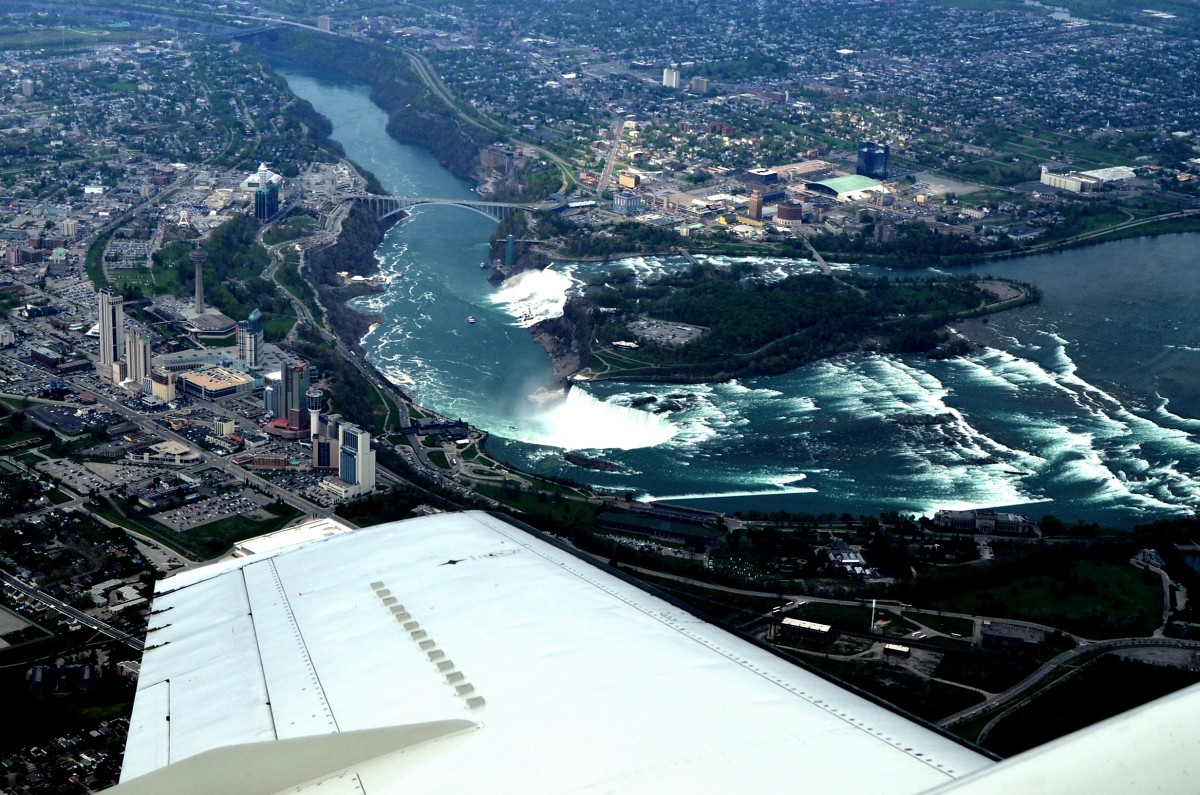
“Hey Matt, any interest in taking a day trip to Niagara Falls on Sunday?”
It was an innocuous enough question to receive by email, especially for someone that runs a travel blog, but I had to wonder: Did the sender realize I lived in New York City which, at last check, was not normally considered a convenient starting point for a day trip to the largest waterfall in North America (Google Maps pegs the drive to Niagara Falls from New York City at 411 miles and nearly 7 hours by car)?
But, alas, this was no usual day trip, this was the inauguration of a new trip organized by Viator, the travel tour and experience booking site called, aptly enough, Niagara Falls Day Trip from New York by Private Plane.
“Sure,” I replied, “What time do we leave?” Very, very early, it turned out.
*
My day began in Brooklyn at 5:45 a.m., a time too often reserved for heading to bed for me, not for waking up. However, on that particular morning, I took a quick shower and hopped in a cab to our meeting point at the Sheraton Tribeca in Lower Manhattan where a chartered bus was scheduled to pick me up at 6:30 a.m.
After buying a much-needed coffee at the deli next door to the hotel, (which, I might add, was miraculously open at that hour; I’m not sure if they were still operational from the night before or were just opening for the day), I hopped in the bus and we drove through the empty Sunday morning streets of Manhattan (if you want to see the “City That Never Sleeps” asleep, take a drive down Canal Street at 6:45 a.m. on a Sunday morning). We then drove an hour west to Republic Airport, the small, regional airport located in East Farmingdale, Long Island.
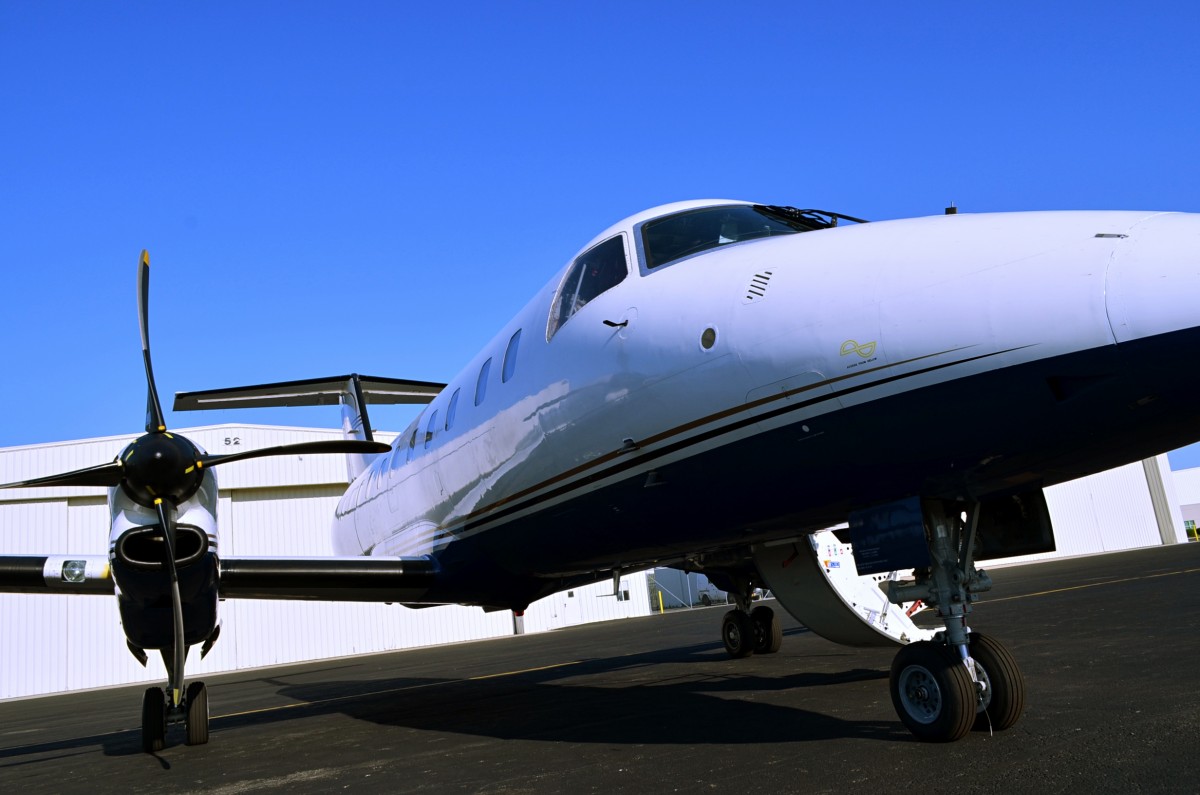
Of course, when traveling in style, i.e, chartered plane, there’s a little timesaver involved called “skipping TSA.” When we arrived, our bus drove through the airport parking lot and straight onto the tarmac, directly next to a waiting plane, an Embraear 120, a Brazilian manufactured, 30-seat twin-turboprop commuter airline whose length measures a manageable 66 feet, and which maxes out at a cruising speed of 378 m.p.h.
Just minutes later we were strapped in and making our way down the runway for takeoff, a surreal experience for anyone used to lining up and waiting on the seemingly always crowded runways at nearby LaGuardia and JFK Airports.
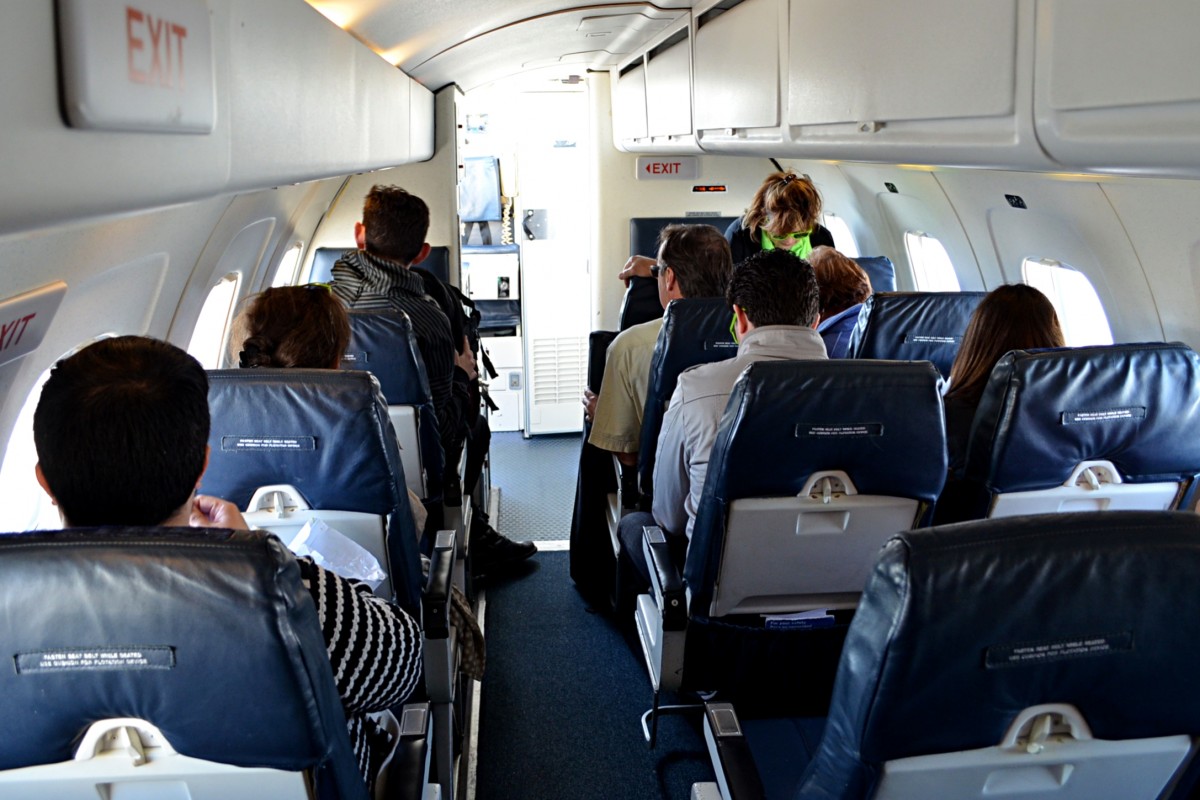
Once airborne, the flight itself was a svelte 1 hour 10 minute-long jaunt northwest over the length of New York. On board was a chipper flight attendant who served us drinks to accompany the bagged breakfasts consisting of a croissant sandwich, fruit cup and yogurt that were waiting for us on our seats.
As everyone around me quickly passed out and napped the entirety of the flight, I worked my way through an issue of Time Out and then only through the introduction to the newest issue of Vanity Fair before the pilot announced that we were beginning our descent, a record accomplishment of futility in reading for any trip — a sure sign of briskness.
While on board, I was informed by Viator they had put this trip together due to growing consumer demand from travelers looking for unique one-of-a-kind day trip experiences from New York. Utilizing private coach buses and local regional airports, the trip focuses on convenience and efficiency to maximize time spent at the falls. It also focuses on people who have lots of cash-money on hand. The trip isn’t cheap — $579 — but isn’t all that expensive given the amount travelers experience for that price.
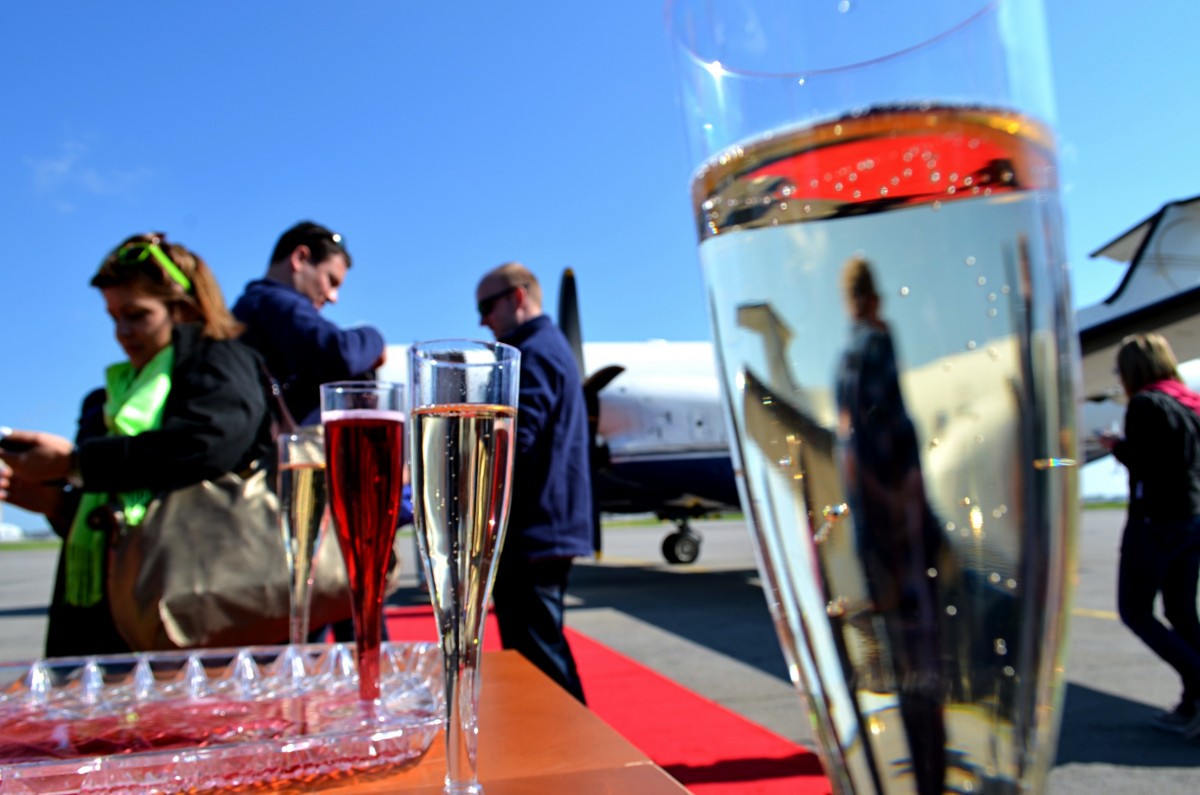
By 9:52 a.m. (according to my Twitter feed), we had landed and made our way down the red carpet that had been laid out for us, leading to a table topped with champagne flutes, always a welcoming sight upon arriving at any airport. I’ve been told the red carpet and booze will not be a normal occurrence for day trippers, but I’m sure arrangements could be made in advance for special occasions or potential visiting dignitaries.
Of course, FAA regulations would likely bar such activities at Buffalo Niagara International Airport, which was located 18 miles to the southwest from where we had landed. But, lucky for us, we had landed at Niagara Falls International Airport, located 18 miles closer to the falls, and more importantly, on the opposite side of Buffalo, meaning we were just a short 12-minute ride to our destination. Yes, it doesn’t get much easier than that.
For the same price, travelers can choose to visit either the American or Canadian side of the falls. For those unaware of the layout of the area, Niagara Falls themselves are actually a series of three waterfalls — Horseshoe Falls, the American Falls and the Bridal Veil Falls — which are collectively located about halfway up the isthmus where the Niagara River flows northward, connecting Lake Erie in the south to Lake Ontario in the north.
Where the falls are located, the river has abruptly turned north after having made an abrupt right angle turn to the west. The larger falls closer to Canada that create the “elbow” in this turn is Horseshoe Falls and is in Canada — the American Falls and Bridal Veil Falls are just to the north straddling the American side of the river, and are thus considered U.S. territory.
What this means for visitors is that if you want see the falls from the Canadian side, bring your passport: the bus drops off those who want to stay in America at the entranceway to Niagara Falls State Park (American’s oldest state park in fact), and those that want to make their way to the more built-up, casino-and-high-rise-hotel-laden side of the attraction, can stay on the bus and make their way over Rainbow Bridge (so named for the nearby rainbows that are prone to crop up due the mist kicked up by the falls) to Canada.
After a quick stop-off at customs on the Canadian side, we were dropped off at Table Rock Welcome Center, located at the edge of Horseshoe Falls. We were then led into the welcome center where we were handed lanyards with “Adventure Passes” attached (they sell for $50), which allow you entrance to, most importantly, the river cruise run by Hornblower Niagara Cruises, the behind-the-falls hike known as Journey Behind the Falls, and White Water Walk, a boardwalk that runs along the base of the falls.
By this point it was 11:00 a.m., and our group was told that our bus was scheduled to head back at 2 p.m., leaving us a few hours to explore. With waterproof GoPro, DSLR and videographer in tow (you know, normal travel entourage), our group of three travel bloggers headed straight to the river cruise, located 10 minutes away down a scenic path that overlooks the falls and the river they feed hundreds of feet below.
As my article researcher (otherwise referred to as “Mother”) later informed me, 2014 is the first year there are two difference companies offering river cruises at the falls. Since the mid-1800’s, the famed Maid of the Mist tour boats have led poncho-clad visitors from both the American and Canadian side of the falls to the falls. After losing their contract in 2013, Hornblower Niagara Cruises now has exclusive rights to launch their two 700-person catamarans from the Canadian side.
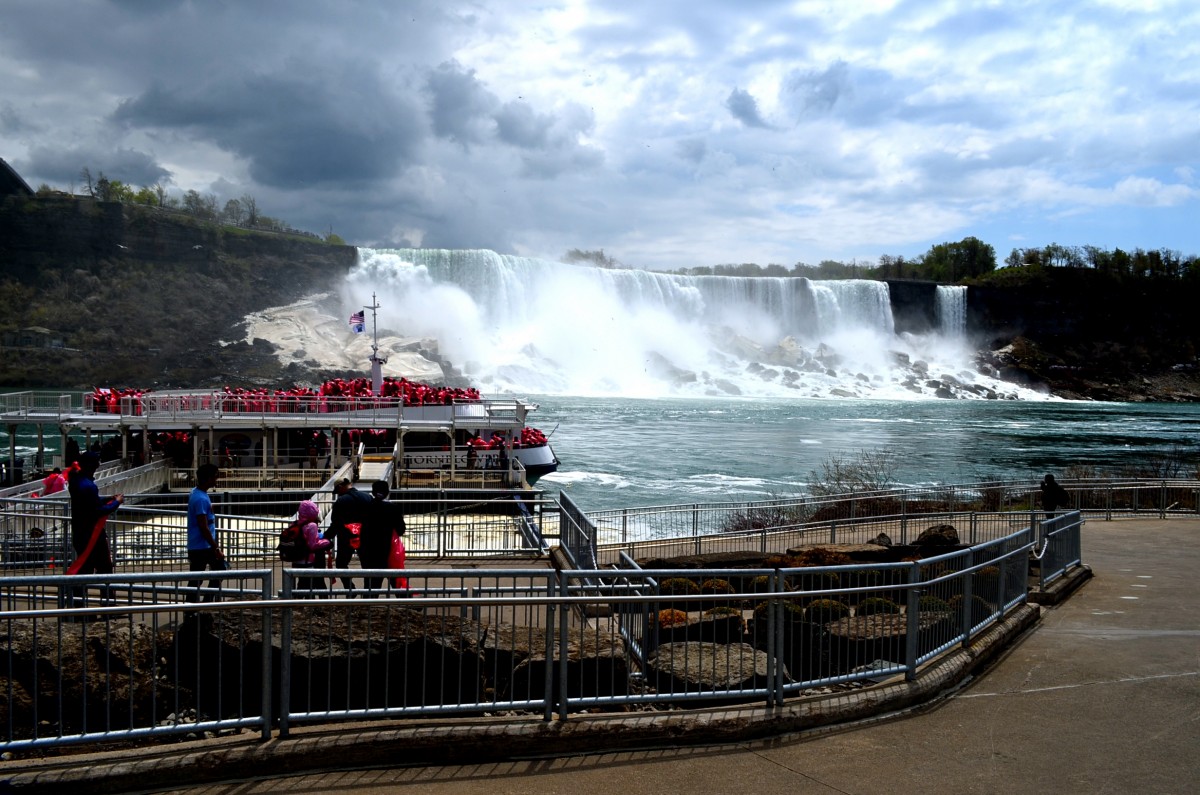
After making our way down a long walkway to the boats, we were handed red ponchos (Maid of the Mist uses blue ponchos, and I’m sure the two dueling colors are some sort of Star Wars reference), and joined a couple hundred visitors on the boat, most of whom had rushed to the upper deck of the boat. After kicking off from the shore, the boat quickly made its way past the two falls on the American side, then charged headfirst toward the center of the Horseshoe Falls, which then caused a flurry of extremely wet and harried people to rethink their vantage point and quickly make their way back to the deck below.
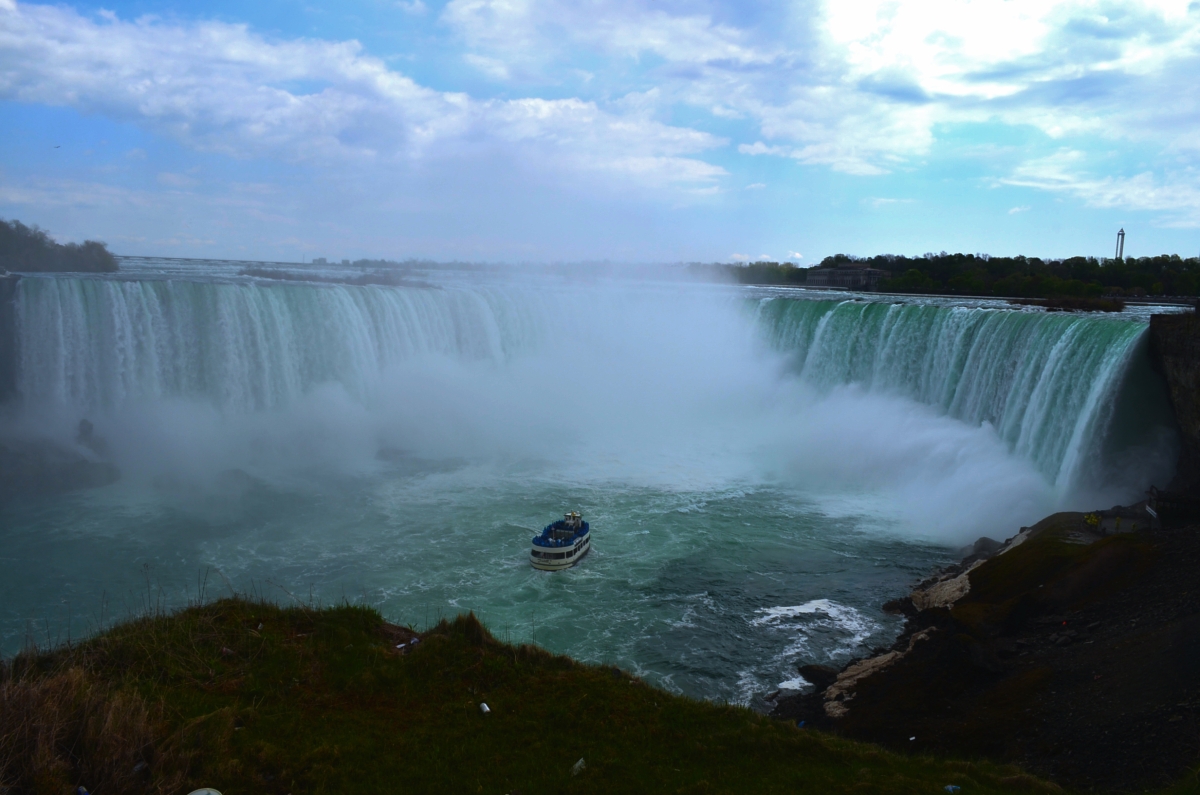
The fact is, Horseshoe Falls, measuring 188 feet high and appropriately shaped like a horseshoe, expels a lot of water. Actually, Horseshoe Falls account for 90% of all the water that flows over the falls from the the Niagara River — an estimated 6 million cubic feet of water per minute — so that produces mist. Actually, that creates a lot of mist, hence the extremely wet humans rushing to make their way to dryer conditions after what seemed like a large portion of that 6 million cubic feet of water in mist form had been directed at our boat from a gust of wind.
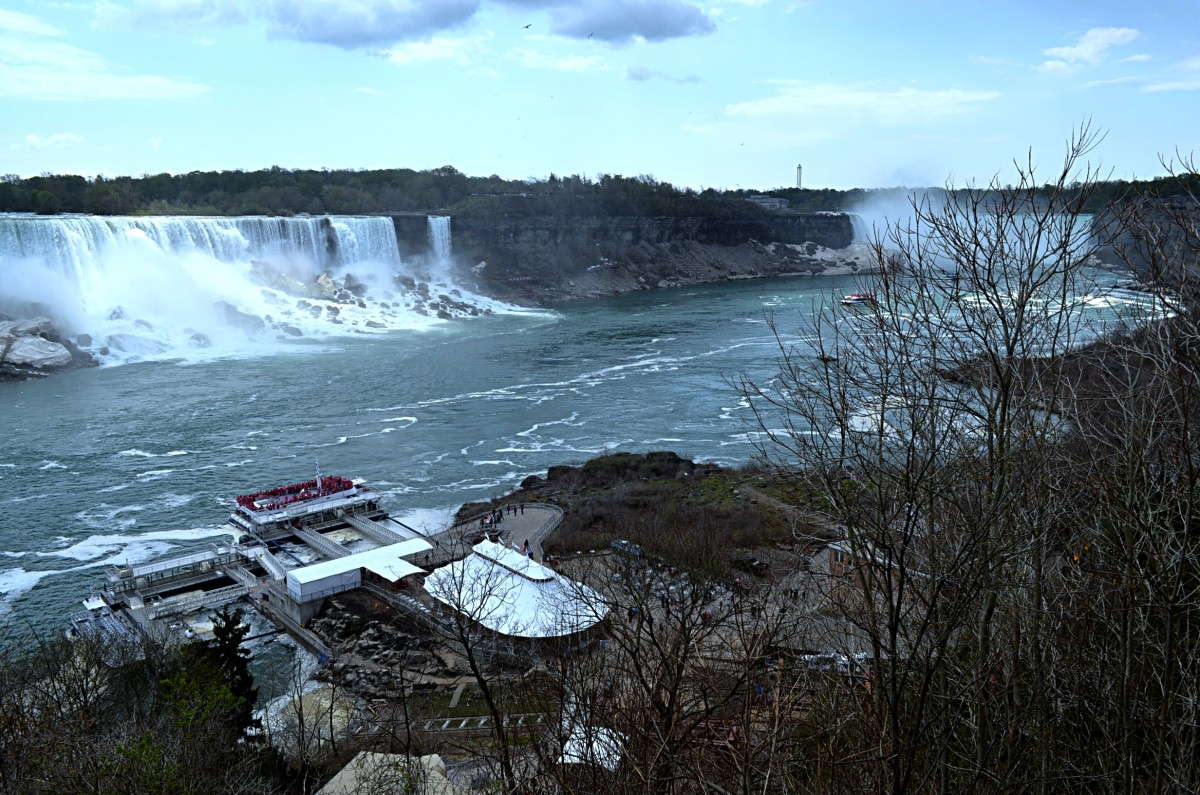
The cruise itself was short, about 20 minutes, and before long we were docking back on the mainland and drying out our jackets on the benches along the riverside. After checking to make sure my various electronic devices were still working (miraculously, and with help of the ponchos and a messenger bag, they were), we headed up the walkway and back toward the welcome center.
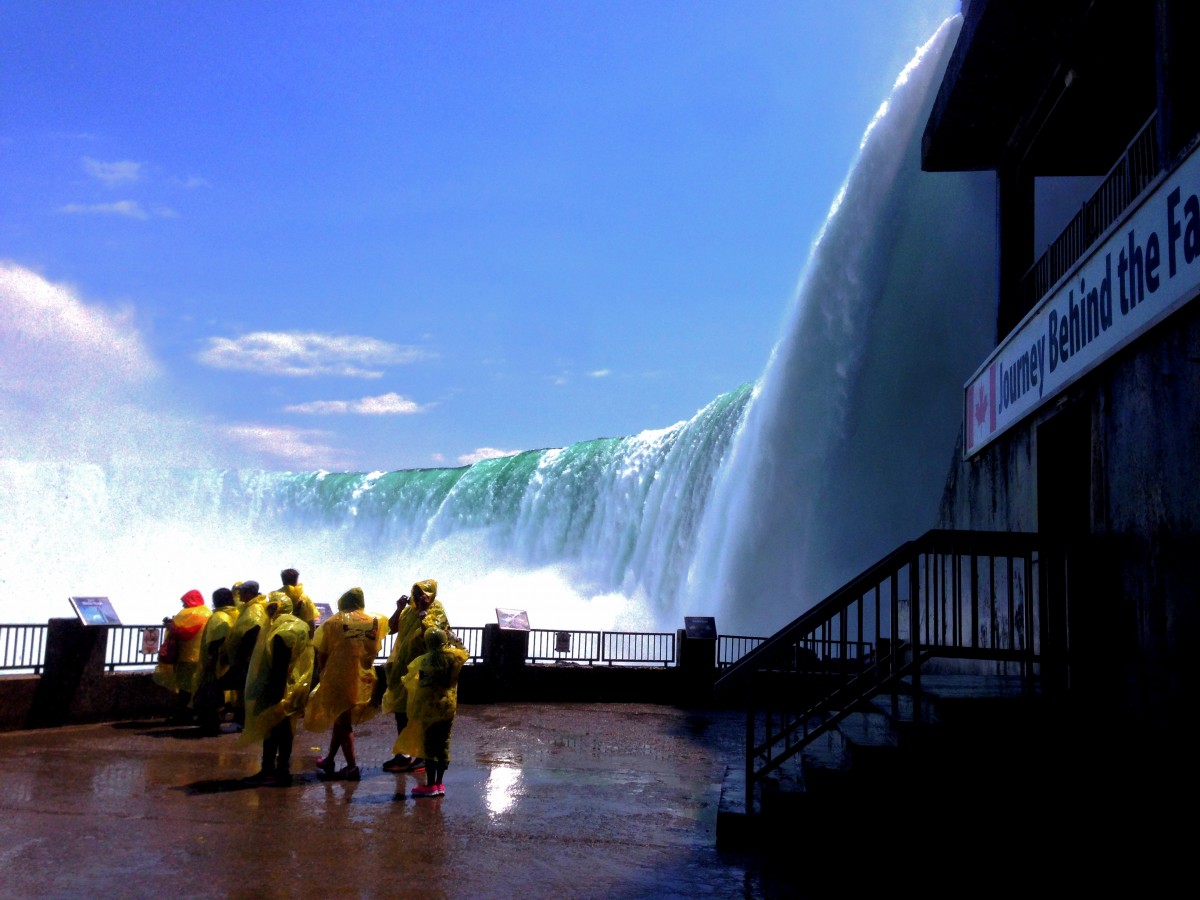
Given our delays taking pictures, Instagramming, sending out tweets, taking video and posting our pictures to Facebook (this is what happens when you travel with bloggers), our time was already running short.
With about an hour left, I ditched my dawdling companions and took an elevator 150 feet down from the welcome center to the Journey Behind the Falls, the tunnel complex located about as close to the base of the falls as you’d want to get, which allows you access to an outside promenade at the base of the falls, as well as to a tunnel with two offshoots that allow you to walk up to a vantage point located just behind the actual falls. If you’ve ever wondered what 739,700 gallons of water falling at nearly 20 m.p.h. looks and sounds like close up, the answer is that it’s both awe-inspiring and somewhat frightening.
With time running out, I met the rest of the group at the waiting bus and got going back to our return flight home. Our delay at the border getting back to the U.S. was considerably longer that heading into Canada, but anyone who’s traveled internationally would not be surprised by this in the least (you’re also at the whim of how many, and where the people are from, in the buses that happen to be in front of you in line).
Once back on U.S. soil, we picked up the rest of the group at the park entrance, snaked our way past an inordinate number of Indian restaurants in town, and were back aboard our plane on the tarmac minutes later, ready to whisk us back to the city.
By 7 p.m. I was at home uploading pictures to Facebook and fielding questions from friends about when I had traveled to Canada. This morning, I replied, just a quick day trip out of the city.

/
 Matt Stabile is the founder and Editor-in-Chief of TheExpeditioner.com. You can read his writings, watch his travel videos, purchase the book he co-edited or contact him via email at any time at TheExpeditioner.com.
Matt Stabile is the founder and Editor-in-Chief of TheExpeditioner.com. You can read his writings, watch his travel videos, purchase the book he co-edited or contact him via email at any time at TheExpeditioner.com.
The post I Took A Day Trip To Niagara Falls From New York City: This Is What It Was Like appeared first on The Expeditioner Travel Site.
]]>The post Facing The Feces Factor: Tasting My First Cup Of Kopi Luwak Coffee appeared first on The Expeditioner Travel Site.
]]>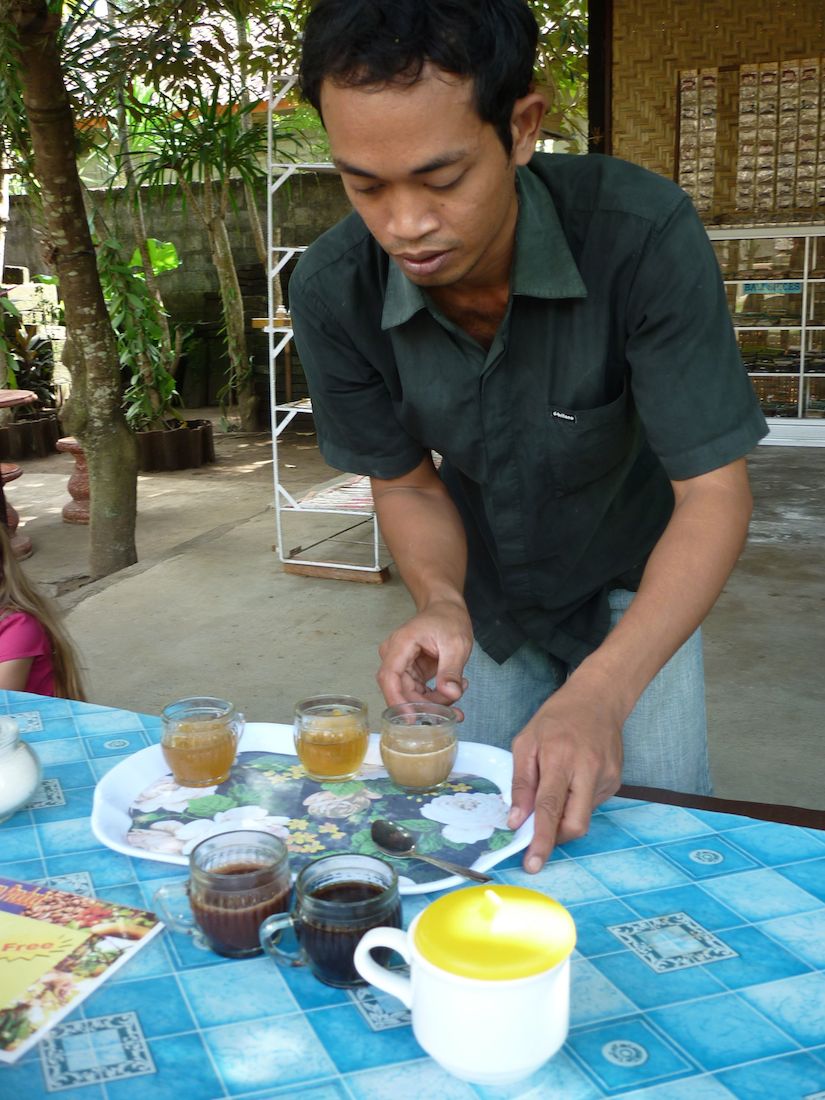
My first cup of Kopi Luwak coffee, sometimes better known as “cat poo coffee” or the rarest beverage in the world, was a memorable introduction into the highly envious world of extreme luxury, though this tasting occurred far outside the confines of the dining room of a fine-dining restaurant in Hong Kong or New York where cups of Kopi Luwak can run upwards of $50 (or $600 if you wanted to purchase a pound of these coveted beans).
In my case I was sitting at a picnic table covered with a blue-checkered tablecloth near the outskirts of the Indonesian jungle with my husband, Kurt, who had also noticed a hyperactive mongoose pacing in a cage nearby. It seemed rather random, but we were in Southeast Asia where we didn’t understand the local pet protocol.
We were far more focused on sipping the many varieties of teas and coffees offered by one of the hosts of a family-owned coffee compound outside of Ubud, Bali. After having toured the grounds along with our kids, we had been invited to the tasting.
However, we soon learned that the mongoose was actually a closely related animal called a civet, and it was not just an anxious pet ready for a romp in the rainforest. At this particular compound, the family produced a highly prized coffee, Kopi Luwak, which is processed in the stomach of the civet. The coffee farmers feed the beans or “coffee cherries” to the civet, and then the enzymes and acids in the animal’s stomach essentially marinate and break down the bean, thereby eliminating bitterness and creating the most expensive coffee beans in the world.
The catch: the only way to get the processed beans is by waiting for the civet to release them into the wild. Yes, until they defecate. Once this has happened, someone gets to pick the beans from the dung and remove the outer layer of the bean, so it is finally ready to be roasted. Our host explained this to us and gave us a flyer to read.
Frankly, it sounded like something that Eddie made up. Like any five-year-old, most of his revelations and stories involved poop, farts, boogers or any other product that shot or drained out of an orifice. Kurt and I looked at each other, considering the reality of this coffee. Our host offered each of us a cup.
“How about some Fecal Folgers?,” “A tall cup of nonfat, no foam turds, please,” “Well, I prefer a grande carmel macchiato from Starbutts.” It was too easy to make jokes, but should we drink it? Our dilemma was whether to be culturally sensitive and embrace the offering or to come off as lame, mistrustful tourists.
Kurt shrugged his shoulders and then both of us picked up the cups. If ever there was a one-of-a-kind cultural experience, this was it. I swished the coffee around in the cup. It looked like regular coffee — no suspicious residue readily visible.
Time to down the dung. It was really quite smooth, almost creamy. Actually, it was delicious. The host smiled and nodded as if he knew what we were thinking. He then gave cups to the kids. I almost put my hand out to halt him, but then I stopped. Normally, I wouldn’t let the kids, who were five and three years old, drink anything with caffeine, but what the hell? Why not?
Kurt and I drank the stuff. Plus, we hadn’t brought the kids to Bali to drink rainbow sparkle smoothies with Mickey and Minnie. At worst, we’d have a night of family bonding and barfing.
Both Eddie and Kasey grinned at each other after they drank the beverage. Part of the thrill, I’m sure, was that they were consuming something they knew was for adults. We also avoided telling them about the feces factor. However, we did inform them that they were drinking a “special” coffee.
Special indeed. In fact, coffee connoisseurs from around the world want these expensive coffee beans, which can cost hundreds of dollars per pound.
They also note that Kopi Luwak has seen a growth in popularity in recent years decades after almost disappearing as a beverage in Indonesia. Although historically Kopi Luwak has experienced various trendy times, especially with foreigners living in Indonesia. Dutch colonists consumed the Kopi from the 1600’s to the end of their rule at the beginning of World War II. Then, during the war, while Japanese soldiers occupied Indonesia, they developed a taste for the turdy beans.
And who can blame them? At the moment, I really couldn’t think of anything I’d rather do than hang out at Balinese family-owned coffee compound in the jungle and drink poop coffee with my own family and a hyper civet.
By Steph Glaser

ABOUT THE AUTHOR
 A freelance writer, teacher and traveler, Steph Glaser studied in the Netherlands during college and then updated a chapter on the country for the now defunct budget travel guide series, The Berkeley Guides. Additionally, as an American exchange teacher in Australia, she became fluent in Aussie teenage slang courtesy of her high school students. Currently, Glaser lives with her family in Colorado where she teaches public speaking and writes about her travel blunders for her blog, TravelOops.com.
A freelance writer, teacher and traveler, Steph Glaser studied in the Netherlands during college and then updated a chapter on the country for the now defunct budget travel guide series, The Berkeley Guides. Additionally, as an American exchange teacher in Australia, she became fluent in Aussie teenage slang courtesy of her high school students. Currently, Glaser lives with her family in Colorado where she teaches public speaking and writes about her travel blunders for her blog, TravelOops.com.
The post Facing The Feces Factor: Tasting My First Cup Of Kopi Luwak Coffee appeared first on The Expeditioner Travel Site.
]]>The post Travel Guide to Maui, Hawaii (Part 5) appeared first on The Expeditioner Travel Site.
]]>In part five of my travel video series from Maui, Hawaii, I travel to the Surfing Goat Dairy Farm, Maui’s premiere (and only) goat farm, where I am put to work feeding and milking the goats, and rewarded with an artisanal goat cheese tasting.
Then, with my trip coming to a close, I head to the nondescript restaurant Da Kitchen, one of the best places to try out classic Hawaiian cuisine, including Kahlua Pork, Teriyaki Chicken and of course, Spam.
Finally, I wrap up by providing my thoughts about the island. Be forewarned, sentimentality and reflection ensue.
Click here to watch the entire five-part series: Travel Guide to Maui.
Click here to view all videos at TheExpeditioner YouTube channel.
By Matt Stabile

ABOUT THE AUTHOR
 Matt Stabile is the founder and Editor-in-Chief of TheExpeditioner.com. You can read his writings, watch his travel videos, purchase the book he co-edited or contact him via email at any time at TheExpeditioner.com. (@TheExpeditioner)
Matt Stabile is the founder and Editor-in-Chief of TheExpeditioner.com. You can read his writings, watch his travel videos, purchase the book he co-edited or contact him via email at any time at TheExpeditioner.com. (@TheExpeditioner)
The post Travel Guide to Maui, Hawaii (Part 5) appeared first on The Expeditioner Travel Site.
]]>The post The Shark Whisperer Of Belize appeared first on The Expeditioner Travel Site.
]]>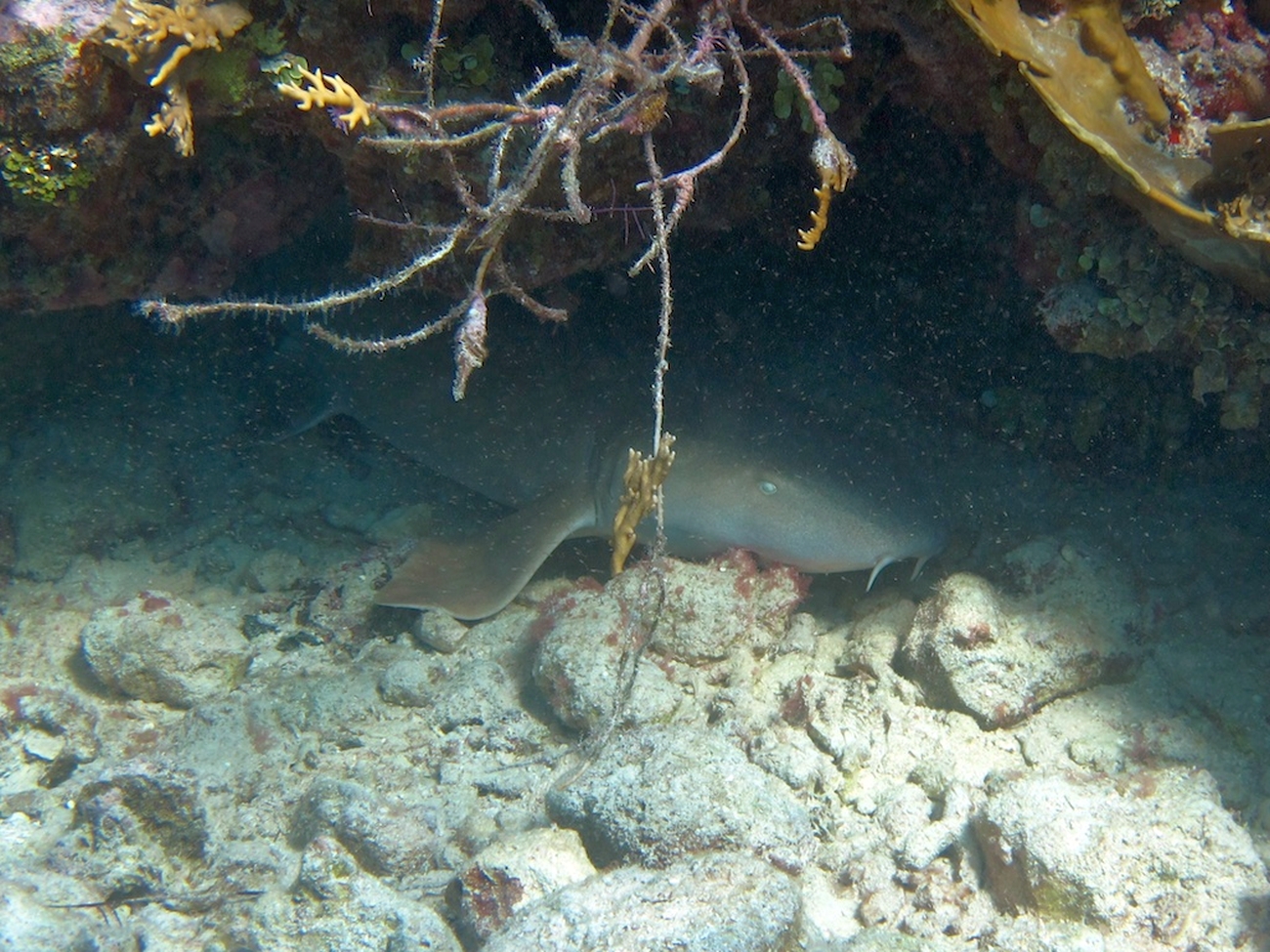
“What do you mean, he’s the Shark Whisperer?”
The bartender grinned slyly as he handed me a halved coconut brimming with rum punch. “I won’t give it away. You’ll see for yourself. Just try not to think of Steve Irwin and you’ll be fine.”
Belizean culture, I had discovered, was a sizzling fusion of Mayan ancestry, colonial influence and Caribbean flair. I was on the island of Caye Caulker, where brightly painted huts sold fried fish on the beach and locals spoke Kriol with a rubbery drawl. Once a sleepy fishing village, the island first became a backpacker haven for hippies following the Gringo Trail in the 1970’s.
Nowadays, Caye Caulker’s primary attraction (aside from its endless supply of colorful hammocks strung between shimmying palms) is its proximity to the Belize Barrier Reef. I had initially planned to dive the famous Great Blue Hole, but scuba excursions proved more expensive than I’d anticipated. And so, not wanting to transform my bank account into my very own Great Hole, I opted to follow the bartender’s advice and snorkel with the legendary Shark Whisperer instead.
I arrived at the yellow hut with the hand-painted sign the next morning at 10 a.m. — the crack of dawn by Belizean standards. I paid my USD$35 to register for the snorkel tour and chatted with a handful of other backpackers until our guide sauntered in at quarter past 11. He was a Rastafarian in his late forties with hip-length dreadlocks that were thicker than cucumbers. Without introducing himself (as the Shark Whisperer or otherwise), he led us down to the pier and onto a small fishing boat with an outboard motor.
The lolling sea was the same shade of brilliant turquoise as the Jell-O shots the bar had served the night before. The sky was stark blue save for a distant smudge of cirrus clouds. As parts of the Belize Barrier Reef are actually connected to Caye Caulker, it only took a few minutes to reach our first snorkeling spot.
“Shark Ray Alley,” our guide intoned as he killed the motor.
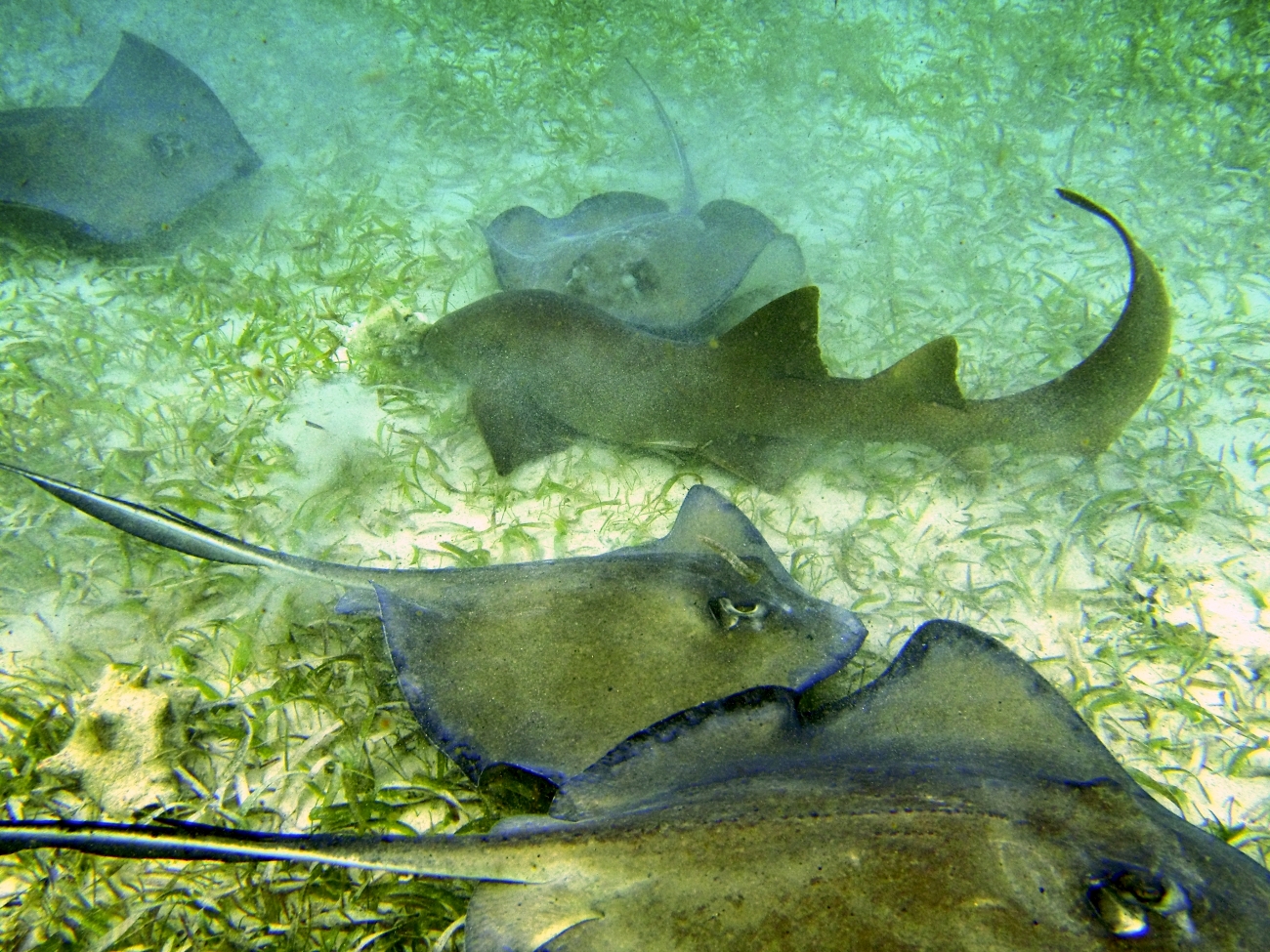
We donned our masks and fins and splashed into the water. It was less than seven feet deep, and I struggled to keep my flippers from making contact with the frying pans that blanketed the ocean floor. Wait—frying pans? I peered closer and realized that they were in fact southern stingrays.
Their bodies were diamond-shaped and ranging between one and five feet in diameter, with shadowy backs, pale bellies and barbed whiptails. Some lay flat against the sand — fluttering skittishly when my fins got too close — while others cruised through the blue like flying saucers.
Our guide slipped into the water beside me without making a splash. Unlike the rest of us — so excited we floundered like the fish of the same name — he moved with gentle grace. His tranquility was soon registered by the animals and a few swam up right beside him, unconcerned as he reached out and slowly stroked their backs
Suddenly, in one swift, controlled movement, he grabbed a stingray by its pectoral wings and held it up to face him. Despite finding itself immobile and arched in a U-position, the animal didn’t appear panicked. As I gawked in disbelief, the guide turned and handed me the ray.
I tried to mimic the Rastafarian’s composure, but my arms trembled uneasily and the ray’s tail began to thrash back and forth. Don’t think of Steve Irwin, I ordered myself. Still, I was unable to calm my nerves and the ray continued struggling, so I let go and watched it dart off into the aquatic ether.
We clambered back into the boat and puttered to our next point: The Channel. This time, our guide chummed the water with chunks of pungent raw fish before we flopped overboard. Within seconds a feeding frenzy ensued. Nurse sharks with moustache-like barbels slithered over one another with such fervor I thought for sure they were attempting to climb into the boat. Just when the commotion was at its zenith, our guide slid down into the heart of the action and gestured for us to follow suit.
I recalled that nurse sharks were mostly harmless, but that didn’t prevent the Jaws theme from echoing in my ears as I splashed into the water. Leathery skin writhed against my torso and a dorsal fin caught me sharply in the armpit. Once again, the guide tenderly caressed the fish. All of a sudden, he grabbed one of the animals in a giant hug. He wrestled with it for a few seconds before seizing its snout and flipping it onto its back.
The shark fell instantly into tonic immobility — a paralytic state which can be induced either by flipping the shark over or by rubbing its snout. Our guide relaxed his grip until he was cradling it like an infant before yet again passing the animal over to me.
My heart pounded as I embraced the nurse shark. Its spine was stiff yet it was completely still, as if in a state somewhere between rigor mortis and nirvana. As the sunlight streamed into the shallows, I found myself conflicted between the serenity of connecting so intimately with nature and the terror of clutching a real live shark (even if it was only a nurse shark).
I glanced up and discovered that our guide had wrangled enough sharks for everybody to hold. I smiled, inviting a rush of seawater into my mask. He really is the Shark Whisperer, I thought to myself.
Now, how the heck do I let go of this thing?
By S. Bedford
[Nurse Shark by jE norton/Flickr; Stingrays by Antti T. Nissinen/Flickr]

ABOUT THE AUTHOR
 S. Bedford is from Toronto, and has backpacked over 50 countries. Her skills include navigating a wide variety of toilet styles, miming “vegetarian” and choosing the bed that doesn’t have bedbugs. She is currently writing a novel about her travel misadventures. (@sbedford86)
S. Bedford is from Toronto, and has backpacked over 50 countries. Her skills include navigating a wide variety of toilet styles, miming “vegetarian” and choosing the bed that doesn’t have bedbugs. She is currently writing a novel about her travel misadventures. (@sbedford86)
The post The Shark Whisperer Of Belize appeared first on The Expeditioner Travel Site.
]]>The post What Do You Think Of Our New Site Design? appeared first on The Expeditioner Travel Site.
]]>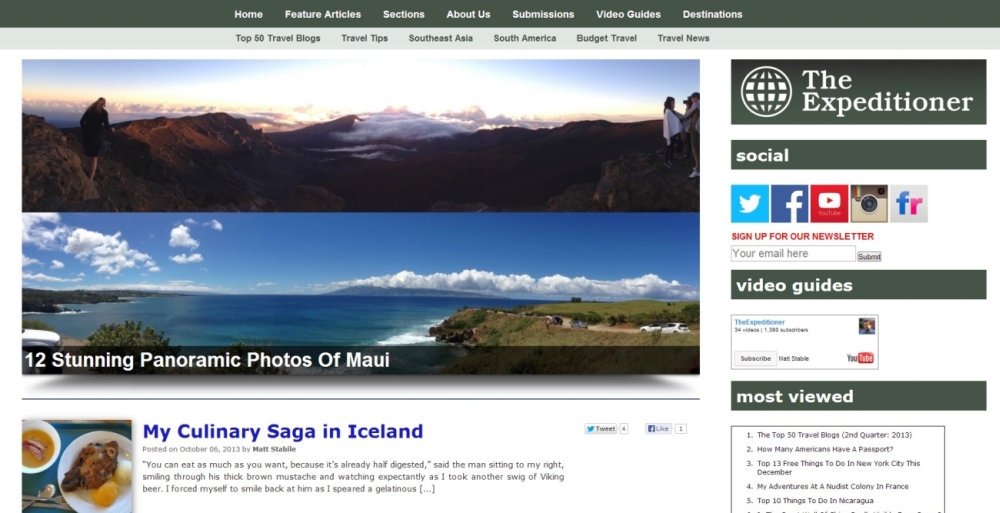
Notice anything new about the site? Less cat pictures — yes. Removal of that late-night rambling post I wrote late one night connecting the JFK assassination to the Illuminati, the moon cycles and Rick Steves’s khakis — check. Complete site redesign and overhaul for your reading pleasure — hell yeah!
If you haven’t noticed already (or you read the site primarily on a tablet or phone, in which case you shouldn’t be noticing much of a difference at all), I spent the weekend working the team of underpaid South Korean The Expeditioner coders to the bone to implement a site-wide redesign. So what’s different? Let me run you through the changes.
1) Responsiveness
The site is now designed be fully responsive. This means that the site’s layout will adapt to whether you are reading it on the largest of system monitors, down to the smallest of smartphones. I’ve actually had the mobile design in place for some time now, and I’m glad I did so. My most recent review of the site’s statistics reveals that about 1/3 of you are reading The Expeditioner on a phone or tablet. For everyone else, you’re reading the site on more sizes of monitors than ever before, ranging from netbook-sized monitors up to full HD-ready monitors.
With the redesign, this means that the site will now take advantage of all those extra pixels for those of you reading the site on a large monitor, with less white space to the left and right of your screen. For those on smaller monitors, there will be less of a noticeable difference . . . except for the pictures.
2) Pictures Fit For a Travel Site
Let’s face it, this is a travel site, and something tells me that large, colorful, inspiring pictures are of more importance to someone reading about travel than, say, reading about Rush Limbaugh (who, let’s face it, large photos do not serve a beneficial purpose). If you look through any travel magazine, the one common denominator is their reliance on large, bold photographs, and I want The Expeditioner to emulate that more than it has (or was able to) in the past.
I have now super-sized the slider on the home page to really emphasize the great feature articles we spotlight on the site. I have also begun to increase both the number and size of the images used within each article and post. Again, given the size of your monitor, these images will change in dimensions, but in any format, they should appear with more prominence. I do realize that this means the site will take slightly longer to load depending on your internet connection, but I believe this is a necessary evil in the interest of quality. Oh yeah, get a better internet connection if this is a recurring problem.
3) Bigger Logo
I moved the logo to the right column bar and made it larger. I don’t have much of a well-thought-out justification for this other than a few people have said to me, “Matt, you should make the logo bigger.” Okay, I’ve done it, so can you get off my back now? But seriously, hopefully this will aid in immediate visual recognition for those new readers that land on the site and haven’t visited before. I also hope that it draws the eyes a bit more to the right and encourages people to click on those social media buttons and the YouTube Subscription box in greater numbers.
What Do You Think?
All my designers have now gone on permanent strike, so there’s little likelihood of many drastic changes or revisions in the future. However, that being said, I’m always up for feedback. Do you like the site’s layout in general? Are you having any problems with it on your computer? Any suggestions for changes you would like seen to the design?
If so, feel free to leave a comment below, tweet me, leave a comment on the Facebook page, or if your comment involves profanity or personal insults, feel free to email at: Matt.Stabile@TheExpeditioner.com.
By Matt Stabile

ABOUT THE AUTHOR
 Matt Stabile is the founder and Editor-in-Chief of TheExpeditioner.com. You can read his writings, watch his travel videos, purchase the book he co-edited or contact him via email at any time at TheExpeditioner.com. (@TheExpeditioner)
Matt Stabile is the founder and Editor-in-Chief of TheExpeditioner.com. You can read his writings, watch his travel videos, purchase the book he co-edited or contact him via email at any time at TheExpeditioner.com. (@TheExpeditioner)
The post What Do You Think Of Our New Site Design? appeared first on The Expeditioner Travel Site.
]]>The post Learn A Language For Free And Change The World With Duolingo appeared first on The Expeditioner Travel Site.
]]>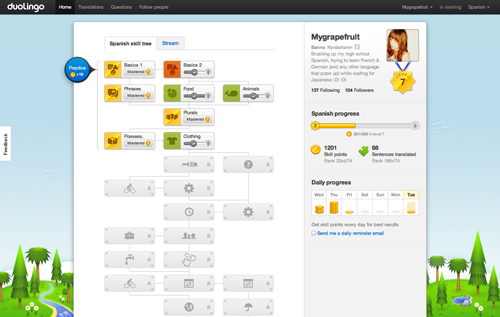
After my grand Pan-American journey came to an end, I moved to Montreal and was faced with two somewhat serious problems: I was completely broke and, if I wanted to find a decent job, I would have to learn French. The problem: no money, no language classes. They call this, un shitload de problèmes, in Quebec. Thankfully, through the magic of the Google, I came across Duolingo, and to put it frankly, the website has helped me realize the true potential of the internet in years to come.
Duolingo is free, user-friendly language education delivered to a screen near you. From smartphones to desktops, the program allows users of all skill levels to learn Spanish, French, Italian, German, Portuguese and English in short, intensive lessons that feel more like games than homework. Still, it works. The Wall Street Journal recently said Duolingo is “far and away the best language learning app.”
“We started Duolingo because we wanted to give equal access to the best language education method to everybody, regardless of their socio-economic status,” Duolingo co-founder Luis von Ahn told The Expeditioner. “Duolingo is free and always will be.”
The program was launched a little less than a year and a half ago by Von Ahn, a professor at Carnegie Mellon University in Pittsburgh, and Severin Hacker, his PhD student. Since then, without a single ad placement, the website has attracted over three million users on computers and iPhones and the numbers are sure to keep growing with the recent release of the new Android app.
The reason Duolingo is free is because users do translation work as they learn. It’s brilliant, really. First, users take lessons and work their way through an extensive skill tree that rewards them with points as they unlock new levels. Then, when they have a basic knowledge, they can test their skills by translating texts from Duolingo clients — Wikipedia for example. Duolingo then employs a crowdsourced model where other members upvote, downvote and edit translations until the texts are fully translated.
“The final translations are extremely accurate,” Von Ahn said. “As accurate as those from professional translators.
Through this model, Duolingo users practice their language skills and, in return, receive free intensive lessons in six different languages, with more on the way. It’s rumored that a Mandarin program may soon be available, but Von Ahn wouldn’t confirm it.
This is good news made better by an independent study that found 34 hours of Duolingo is equivalent to one semester in a University-level course. That’s right, according to the 8-week study, a semester usually takes more than 34 hours of work, so the study implies Duolingo is more effective than going to school.
I asked Von Ahn what we can expect next from Duolingo, and he said more languages and never-ending improvements inspired by user feedback.
“We try to read and listen to everything our students say and based on that, we constantly improve the site. Even though Duolingo is already great for learning languages, we think it can be 10 times better,” he said. “We will continue improving the learning experience, including a better way to practice conversations.”
By Diego Cupolo

About the Author
 Diego Cupolo is an independent journalist, photographer and author of Seven Syrians: War Accounts From Syrian Refugees. He serves as Latin America regional editor for Global South Development Magazine and covers international affairs as a freelance journalist, having reported on Syria, Turkey, Bulgaria, Nicaragua, Peru, Argentina and Chile. His work has appeared in The New Yorker, The Atlantic, Associated Press, The Village Voice, The Australian Times, Discover Magazine, UpsideDownWorld.org and Diagonal Periódico.
Diego Cupolo is an independent journalist, photographer and author of Seven Syrians: War Accounts From Syrian Refugees. He serves as Latin America regional editor for Global South Development Magazine and covers international affairs as a freelance journalist, having reported on Syria, Turkey, Bulgaria, Nicaragua, Peru, Argentina and Chile. His work has appeared in The New Yorker, The Atlantic, Associated Press, The Village Voice, The Australian Times, Discover Magazine, UpsideDownWorld.org and Diagonal Periódico.
The post Learn A Language For Free And Change The World With Duolingo appeared first on The Expeditioner Travel Site.
]]>The post Your Instagram Travel Pictures Are Making Your Friends Miserable appeared first on The Expeditioner Travel Site.
]]>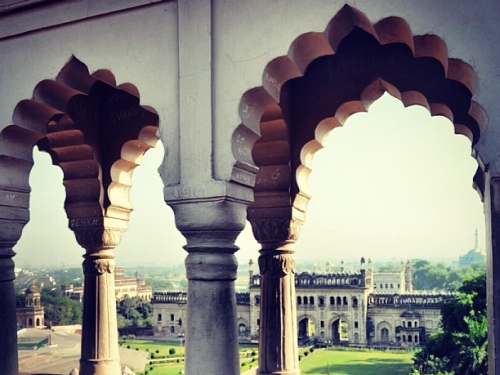
In case you thought that sharing on Instagram that #picoftheday of your #amazing picture from your #incredible #vacation from that exotic location that you happen to find yourself in is something your friends want to see, well you’re wrong. It’s actually making them miserable, and there’s science to prove it.
As Slate recently detailed, scientists who have done research in the — what I can only assume to be — nascent subject of social media in the sociological realm, have found that your friends’ “passive consumption” of your Facebook feed “correlate with feelings of loneliness and even depression.” And even worse, “‘passive following” on Facebook triggers states of envy and resentment in many users, with vacation photos standing out as a prime trigger.” My guess is those pictures of you frolicking on the beach or dining al fresco with the Eiffel Tower in the background tend to trigger these feeling more than, say, those pictures of you stranded at the terminal eating from a bag of Fritos because your flight was delayed for the third time, but I digress.
As the article points out, the problem is that Instagram, with its focus solely on images and basic “liking,” highlights the three aspects of Facebook that are most likely to trigger people to want to head to their unventilated garage with a bottle of aspirin and a garden hose: “loitering around others’ photos, perfunctory like-ing, and ‘broadcasting’ to a relatively amorphous group.” This can lead people to an “envy spiral” (the need to try to outdo others’ photos), and a desire to spend more and more time “self-promoting,” rather than living their own lives, as a need to compensate for that envy.
And by the way, did I mention I just recently started getting back into posting travel photos on Instagram (shameless plug here). Which begs the question: why bother? Am I trying to outdo others who populate my Instagram feed (which to be honest, is essentially a bunch of people posting their very own travel pictures all day long), or am I truly looking to share my own fond memories?
And how do I feel after I look at all those other photos in my feed? Better, worse, inspired, envious, dyspeptic? Maybe a combination of all of the above, but it hasn’t made me want to stop using it. I also get little envious of the guy I see outside my building every day who plays drums with plastic buckets for money (seriously, does it get much better than that?), but I’m not about to drop everything and go out to the nearest hardware store and buy supplies to hang my own sidewalk shingle.
I think that it’s a matter of balance. Yes, I have recently been posting pictures from my recent trip to India (I did take over 800 of them in a span of 17 days), but I figure I may as well put them to use rather than allowing them to gather dust on my hard drive as they’re doing now. But I also attempt to refrain from posting on Instagram — as well as on Facebook, Twitter, Pinterest, Vine, Flickr and Youtube, to name just a few of my social networks — every single, slightly interesting, social or scenic experience of my life.
I’ve seen far more sunsets than I’ve taken pictures of, and I’ve had plenty of great drinks with friends throughout the years without feeling it necessary to announce online that I’m doing so. I spend many a night sitting at my home computer typing or watching documentaries on Netflix from the comfort of my bed to pretend that my social network feeds are an accurate portrayal of my everyday life.
Maybe some people care what I’m doing throughout my day, and most likely they don’t, but the fact remains, I’d rather it was someone else, rather than me, who may be invoking those negative feelings with their “friends.” For me, I hope that those experiences that I do take the effort to share are unique, inspiring, funny or interesting enough to warrant recording them electronically. And I also hope that others realize they represent my “Greatest Hits,” not my normal Tuesday, and I hope they know I know the same about them. And what will I miss out by not actively sharing every experience? Not much in the long run. I’ve got a one-man social network sitting on top of my shoulders that is a plenty-good-enough place to record those memories.
By Matt Stabile

About the Author
 Matt Stabile is the Founder and Editor-in-Chief of The Expeditioner. The Expeditioner began in 2008 and is headquartered in New York City. You can read his writings, watch his travel videos or contact him at any time at TheExpeditioner.com. (@TheExpeditioner)
Matt Stabile is the Founder and Editor-in-Chief of The Expeditioner. The Expeditioner began in 2008 and is headquartered in New York City. You can read his writings, watch his travel videos or contact him at any time at TheExpeditioner.com. (@TheExpeditioner)
The post Your Instagram Travel Pictures Are Making Your Friends Miserable appeared first on The Expeditioner Travel Site.
]]>The post You Haven’t Experienced A Sunrise Until You’ve Done So In Tikal, Guatemala appeared first on The Expeditioner Travel Site.
]]>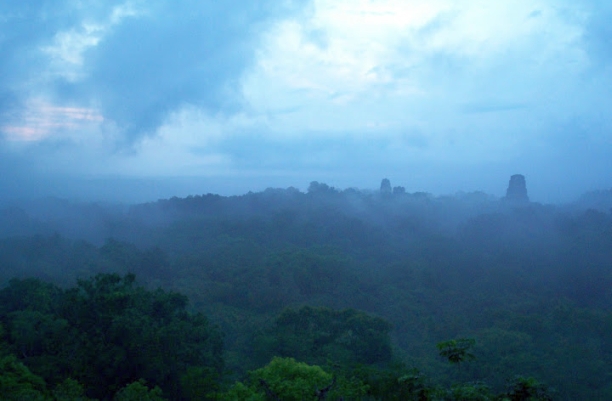
The only thing more magical than hiking through a jungle in the dark, following a path that must be made of white gravel because it glows faintly in the full moon, is hiking through a jungle in the dark past big black hills — blacker than the sky behind them, blacker than the trees that catch the moonlight — hills you know just have to be pyramids. This is Tikal, Guatemala. And getting up at 2:30 a.m. to make the sunrise tour suddenly feels worth it.
As I walk, I wonder about the guide, somewhere ahead of me in the darkness, urging us on through the night, not winded at all, like I am. This magnificence has probably grown commonplace to him — dull, almost. Does he ever wonder how these never-ending waves of travelers can keep marveling at something he sees every day?
A towering ceiba tree reaches pale arms into the sky, and the guide stops us for a moment. The ceiba, he tells us, symbolizes the connection between the underworld, the terrestrial world and the skies. Certainly I can feel that now as the ceiba disappears into the darkness above and the darkness below.
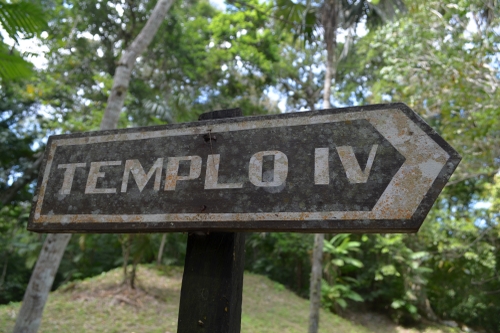
Our guide leads us onward through misty patches and bits of visible ruins. Finally, we reach Templo IV and slowly climb the long wooden stairs to the top, where other groups have already arrived, all sitting in clumps, talking softly so as not to disturb the reverence that swathes this island temple in its own sea of foliage.
It’s barely getting light, the black turning to misty blues and butter yellow as we watch the sun burn off the fog. It rises over an endless jungle, where the only signs of civilization are the tips of Mayan pyramids that have ruled here for over a thousand years.
The birds begin to chirp. Just a few, scattered here and there. Then we hear it: a low rumble, starting at a distance and coming closer and closer. An invisible menace stampeding toward us over the giant leaves of the canopy. It takes me long moments to understand: rain. The patter grows louder, turning into its own sort of music as we pull out cheap plastic ponchos and umbrellas. Still we sit, rooted to the spot by respect — worship almost — for the power of nature. The rain hits hard, drenching us immediately. Just as quickly, it rolls on past. When the roar of the rain turns to a drip-drop chorus, the birds take up the melody, fully awake now — a cacophony of life.
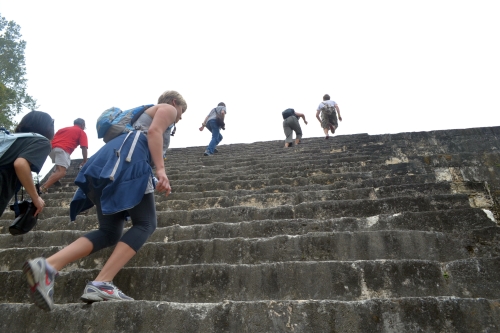
Our guide watches with us, speaking only to call us to silence, for meditation, when some of the young backpackers grow restless. Raindrops and dewdrops in the trees catch the morning sun like strings of Christmas lights. I want to stay forever.
Finally we have to go; there are ruins to see, stories to hear, pyramids to climb. Our guide, apparently not immune to the wonders of his job, excitedly shows us a groundcover plant whose leaves close up when he touches them.”Sleeping,” he says as we poke gently at the plants and jerk our fingers back when they move, animal-like.
He takes us off the trail to smell aromatic flora and look for ant hills, under which dwell the clever leaf-cutter ants, one of the few animals to “process” their food. After they cut their jigsaw pieces of leaf, they leave them to ferment with their own saliva. A fungus grows and they feed the colony from that. I see evidence of their handiwork, now that I know what to look for, but I can’t find any of the actual creatures.
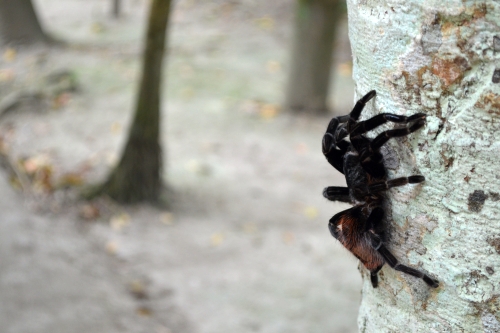
Undaunted, our guide quickly pulls our attention away and points out what some people call the tree of love, because it embraces other trees. Its alternate name? The killing tree, because its embrace eventually chokes the life from its jungle companion. But before we can ponder the symbolism of that, our guide finds us a tarantula and delightedly hands it around. I take it. After all, I’ve just been cave swimming and rope ladder climbing down a waterfall, and Guatemala’s making me brave.
I love the serenity of Tikal: the lack of insistent hawkers, the verdure everywhere you look, the gorgeous steep temples, the foliage that can hide other tourists well enough to give you a temporary sense of solitude.
However, Tikal has not always been so quiet. An estimated 4,000 structures remain, only 20% excavated. Anthropologists believe that the commoners lived in open-sided buildings of wood and palm thatching, which have long since dissolved into history. How huge and bustling this city must have been at its heyday, and all without natural water. The Mayans dug their own wells out of rock and lined them with lime, collecting enough of the 70-some inches of yearly rainfall to last them through the dry season.
It’s hard to believe — while standing beneath the giant trees, or surrounded by leaves half as big as me — that this wasn’t always jungle. The wild beauty crept in only after the Mayans abandoned Tikal 1,000 years ago. I imagine the jungle lurking on the outskirts, like an animal, waiting to take back its home.
At Tikal, they also staged the famous basketball-like games involving ritual sacrifice. One theory is that as a finale, they killed the captain of the winning team because he had proven himself worthy of the honor of fighting against the evil gods in the Underworld.
I stand in one of Tikal’s now-grassy ballcourts, surrounded by steeply slanted stone walls, and I can imagine it all: the carved stone hoops mounted on the walls, the ricocheting ball, the crowds roaring with religious fervor, the muscled and bare-chested warriors locked in a life-and-death struggle. I close my eyes and see those same brave players, dead now, trapped amid the roots of the ceiba tree, trying to break free to fight the unstoppable gods of the Underworld, and I come to the realization that, honor or no honor, this is one game I would try to lose.
After the guide sets us free to explore on our own, I scale Templo V, all 187 feet of it, via a modern wooden staircase so steep it’s more like a ladder. They built it to keep tourists from injuring themselves on the sharply angled pyramid steps. I sit at the summit, dizzy with the height, while across the jungle rises Templo IV, where I so recently watched the jungle wake up. I think back to the day before, and how I’d debated about the sunrise tour. 2:30 a.m? Were people crazy? No. People aren’t crazy. But the world is amazing.
By Melinda Brasher

About the Author
 Melinda Brasher spends her time traveling, writing fiction, and teaching English as a second language in places like Poland, Mexico, the Czech Republic and Arizona. Her talents include navigating by old-fashioned map, combining up to three languages in a single incomprehensible sentence, and dealing cards really, really fast. Check out her blog at MelindaBrasher.com.
Melinda Brasher spends her time traveling, writing fiction, and teaching English as a second language in places like Poland, Mexico, the Czech Republic and Arizona. Her talents include navigating by old-fashioned map, combining up to three languages in a single incomprehensible sentence, and dealing cards really, really fast. Check out her blog at MelindaBrasher.com.
The post You Haven’t Experienced A Sunrise Until You’ve Done So In Tikal, Guatemala appeared first on The Expeditioner Travel Site.
]]>The post Bourdain On Parts Unknown: My Libya Show Was The Best Ever appeared first on The Expeditioner Travel Site.
]]>
Anthony Bourdain’s new show on CNN is not only delivering ratings successes, but it’s providing personal satisfaction to the curmudgeonly host himself. In a recent interview with The Washington Post, Bourdain admits that he thinks the show has been pretty darn good; well better than good, the best he’s ever done in fact, highlighting his recent Libya episode.
[We were] having conversations with really interesting people saying incredible things, where you are sort of holding your breath, thinking, “Just keep talking, keep talking, keep talking, keep talking.” It’s also a beautifully photographed and beautifully edited piece of work.
Viewers seem to think so too. The show has doubled the ratings of its previous time slot, and CNN recently announced it was re-upping the show for a second season. I’ve only caught parts of it (it’s been a busy spring with Mad Men, Arrested Development, etc…), but from what I’ve seen so far, I’ve liked it. It’s different from No Reservations; maybe a freer format that has allowed Tony to stray from food a bit more and integrate some nice cinematic touches to the photography. But there’s no doubt, my DVR will be in overdrive later this year come the late-summer TV doldrums kick in.
Below is a clip of the show where he visits Libya’s own fried chicken chain, Uncle Kentaki, a rip-off title that seems almost ripped from the screenplay of Coming to America.
By Matt Stabile

ABOUT THE AUTHOR
 Matt Stabile is the Founder and Editor-in-Chief of The Expeditioner. The Expeditioner began in 2008 and is headquartered in New York City. You can read his writings, watch his travel videos or contact him at any time at TheExpeditioner.com. (@TheExpeditioner)
Matt Stabile is the Founder and Editor-in-Chief of The Expeditioner. The Expeditioner began in 2008 and is headquartered in New York City. You can read his writings, watch his travel videos or contact him at any time at TheExpeditioner.com. (@TheExpeditioner)
The post Bourdain On Parts Unknown: My Libya Show Was The Best Ever appeared first on The Expeditioner Travel Site.
]]>The post Horsing Around The Masai Mara appeared first on The Expeditioner Travel Site.
]]>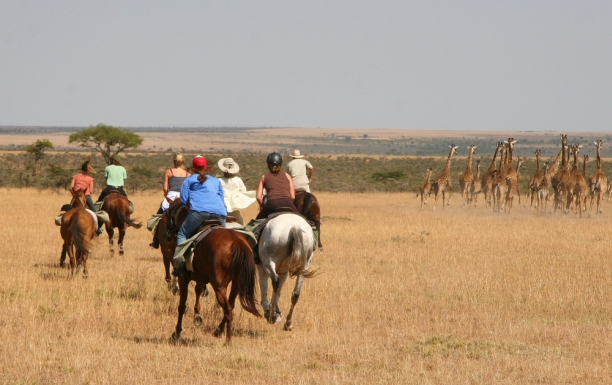
“It’s like the Garden of Eden,” our guide says, looking over the vista of Kenya’s famed Masai Mara National Reserve, “just beautiful . . .” We draw up our reigns to marvel in silent reverence at the vast landscape, dotted with every wild animal we could have hoped to see.
Across this lush, buzzing vista, buffalo herd around impala, eagles soar above wildebeest and elephants charge fruit trees while lions wait patiently in the tall savanna grass, deciding which to eat for dinner.
Getting here is not easy, and it takes days of hard riding to earn a seat at this show.
Our journey begins in the capital, Nairobi, where we transfer through gridlock traffic to an airport and board a 12-seat Cessna, heading southwest over the Loita Plains, above the Kikuyu Highlands and past the volcano-studded Great Rift Valley.
An hour later we’re bumping down on a dirt-strip that doubles as a gateway to the reserve and a social hotspot for colorfully-dressed Masai warriors. With no phone signal and no electricity from here on in, it also represents the eye of a needle through which few First-World foibles may pass.
From here, a Land Rover bumps us along remote, red dirt roads to a campsite set in a grove of acacia trees. This would be the first of three such sites, and traversing between them for up to six hours a day on horseback will require every inch of riding skill we have.
There’s barely time for a cold Kenyan Tusker beer before we’re heading out on our first ride when the sun hangs low enough to bring the wildlife out to feed. Here, the guides quietly make their assessments about your riding abilities and how closely they need to stick to you, and whether you’ve been paired with the right horse.
We’re international bunch: a half-Argentinian, half-Austrian lifer (he started working with our tour company, Offbeat Safaris, at 18, and he’s still there at the age of 33), an Australian polo player from Dubai, a British safari guide from Botswana, and a student volunteer and hunter from England. All told, the guests were from the U.K., U.S., Germany, Italy and Australia.
The horses were Abyssinian, thoroughbred and cross-thoroughbreds, reared on the owner’s farm, and brought into the reserve via a seven-hour horsebox slog. Mine was a pristine, polo-playing gelding named Blondie, looking decidedly bling with his dash of gold flecks and bright yellow mane. After half an hour of sizing each other up at the beginning, we knew we’d get on fine.
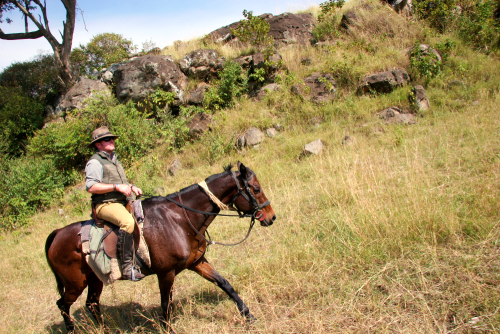
Being confident on your horse could be the most important part of this adventure. Over the next week, we would inch — day-by-day — ever closer to prides of snarling lions, square up to scrappy elephants and push back short-tempered bison, all of which could outrun us, if they wanted to.
Being comfortable riding in English tack is important too, as I noticed the countryside Californians in our group had a hard time adjusting to the bolt-upright British saddles which are at odds with the Western-style “armchairs” they use back home.
The most accomplished riders tail the lead guide as he opts to take the most daring routes, jumping over felled trees left by head-charging pachyderm and playing chicken with lions which may or may not have eaten that day.
Every two to three days, our camp packs up and shifts by truck; with its canvas dining tent, shower, sleeping and toilet tents resembling a well-appointed commune when pitched at each of the three stunning oases.
On every moving day, there is an epic ride to reach the next site, which can be up to 30 miles away. That’s a lot of riding — at high altitude no less — across challenging terrain, galloping across plains pockmarked with aardvark holes and rocks, and cantering through stone-bed rivers with vertigo-inducing banks.
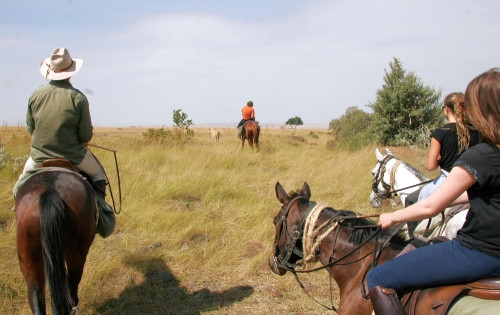
Along the way, animal burrows are a constant hazard, but if you’re lucky enough for the person in front of you to spot one through the dust clouds, avoid it and shout “Hole!” in time, you may not fall down it.
Organizers encourage guests to take out medical insurance prior to arrival, but they also have their own public liability insurance and membership to the Flying Doctors organization, in case of serious injury requiring evacuation.
Nevertheless, there’s a lot that can go wrong in the middle of nowhere. The riding sections will undoubtedly push you to your limits of self-preservation, whether you opt to take the easy option and stay back, or throw caution to the wind and try to keep up with the lead guide.
Bullwhips protect guests from animal attacks, with guides normally carrying little else. The Land Rover variant of the trip, for non-riders, encourages guests to get out and walk on the reserve, and here, they are accompanied by a guard carrying a rifle.
The one occasion we went out armed was to a mountain we climbed first by car, then by foot to reach its spectacular peak. Its nooks host several families of cheetah and leopard, which we were warned to be on our guard against, although we didn’t see any as we clambered about on its slopes.
We did not have to wait much longer before we did, though. On our first night at the third campsite, while we drinking beers around the fire on the banks of the Mara River, our lead Masai guard, Nati, came over saying he’d spotted a cheetah and asking if we wanted to see it. Several seconds later we were careering around the site in the Land Rover, shining a spotlight until suddenly we caught a flash of markings bolting into a bush.
Nati picked out an impala with the light, leading the cheetah out into the open to its quarry. The kill was artistic and eloquent in its execution despite the graphic scene; we drove over, clutching our beers on the roof of the car, and sat transfixed to watch it feed.
Other nighttime highlights included Masai warriors demonstrating their mating dance around the fire (a hit with the ladies); driving out to party on the plains after dark with James Brown booming from the stereo, and running semi-clothed out of my tent at 4 a.m. as an elephant pushed down a nearby tree.
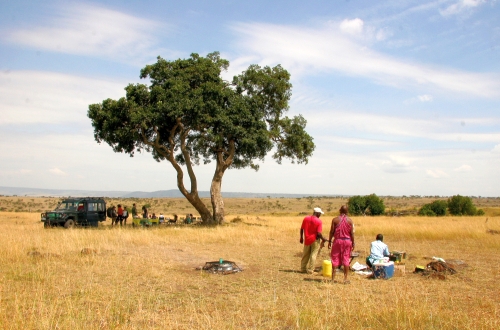
Returning to my tent after dinner each evening, I would, without fail, find my riding boots cleaned and polished to perfection and my laundry scrubbed, pressed and folded as if at a top-notch hotel. The food and drink was impressive too, an array of cuisine cooked up from fresh, imported and locally produced ingredients. Riding for hours from the crack of dawn to emerge over a hill and find the camp’s chef cooking breakfast in the middle of the plains ranks, for me, as a new definition of decadence.
And our midday siestas in shady glades after picnic lunches were something to savor too, like falling asleep on the classroom rug after having your fill of milk and cookies at kindergarten.
At the end of the week, it was with some sadness that I watched my fellow guests leave, while I moved on to see the company’s guest lodge, another hour’s flight west.
The lodge at Sosian, the Samburu word for “Wild Date Palm,” combines the tame with the wild. It’s certainly a stark contrast to Masai camping; with its solid stone guest houses, swimming pool and main house that harks back to colonial days with a snooker table, grand piano and library.
Where the riding trip guests were in their 20’s and 30’s, at the game lodge the guests were mainly parents in their 40’s and 50’s with young children.
I immediately missed the unashamedly gonzo set-up of the anarchic riding outfit, with its unpredictable, scruffy lead guide riding in flip-flops, nights spent dancing around the camp fire and rock-hunting by moonlight on the plains to shore up the Land Rover’s wheels after we’d hit a hole.
For many visitors, Sosian will perhaps be the better-fitting choice; offering a quieter, safer and more luxurious bush experience on its 24,000-acre private working ranch, set on the Laikipia plateau.
It’s a beautiful area that offers more than 250 species of birdlife and an abundance of game species with four of the big five species being found there, plus other rarities such as wild dogs, Jackson’s hartebeest and Grevy’s zebra.
Nonetheless, I’d be back on the mad traveling horseback safari circus any day, at least for another few years.
*
Offbeat Safaris offers 7-night horseback safaris from $5,550 or 10 nights from $7,700 per person, and non-riders can take a Land Rover safari from $6,500.
By Richard Powell
Editor’s Note: Richard Powell is a freelance journalist who also works for the press release distribution, media monitoring and public relations firm, Presswire, but does not work with or for any of the parties mentioned in this article.

ABOUT THE AUTHOR
 Richard is a one-time journalism grad who started a public relations company after leaving BBC News. His company, Presswire, provides press release distribution and media monitoring services. As a freelance reporter, he provided correspondence from Kosovo, Northern Iraq, Sudan, Liberia and Beirut, but now concentrates on travel writing and news reporting.
Richard is a one-time journalism grad who started a public relations company after leaving BBC News. His company, Presswire, provides press release distribution and media monitoring services. As a freelance reporter, he provided correspondence from Kosovo, Northern Iraq, Sudan, Liberia and Beirut, but now concentrates on travel writing and news reporting.
The post Horsing Around The Masai Mara appeared first on The Expeditioner Travel Site.
]]>The post The Top 10 Markets Around The World appeared first on The Expeditioner Travel Site.
]]>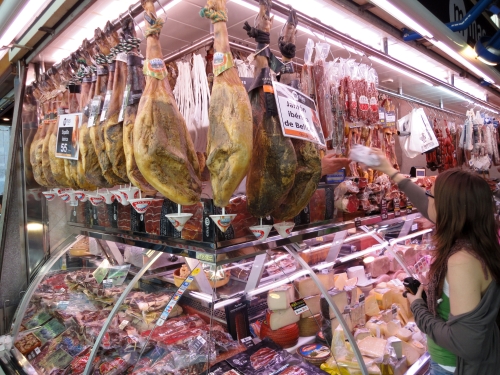
CNN put together a list of their top 10 best markets around the world, and for you Asian food snobs, guess what, you didn’t get all 10. In fact, 6 of the 10 were located in continents other than someplace where you’re likely to see a 75-year-old grandmother hacking away at a pig’s head with a giant cleaver (unfortunately, I might add).
Topping off the list is Barcelona’s famed La Boqueria. More tourist photo-op than local food market today, Boqueria is still many people’s gateway drug into the addiction that is Spanish cuisine. Second on the list is Tsukiji Fish Market where, you may recall, the world’s most expensive fish was sold (a $1.8-million-dollar bluefin tuna). Coming in as third is New York City’s own Union Square Market, the ground zero source for all of the city’s farm-to-market restaurants (which, at last count, was all of them).
Here is the entire list:
1) La Boqueria: Barcelona, Spain
2) Tsukiji Fish Market: Tokyo, Japan
3) Union Square Farmer’s Market: New York City, United States
4) Or Tor Kor Market: Bangkok, Thailand
5) St. Lawrence Market: Toronto, Canada
6) Borough Market: London, England
7) Kreta Ayer Wet Market: Singapore
8) Lancaster Central Market: Lancaster, Pennsylvania, United States
9) Marché Provencal: Antibes, France
10) Kowloon City Wet Market: Hong Kong
[10 of the World’s Best Fresh Markets]
The post The Top 10 Markets Around The World appeared first on The Expeditioner Travel Site.
]]>